Innovations and Breakthroughs
1940s
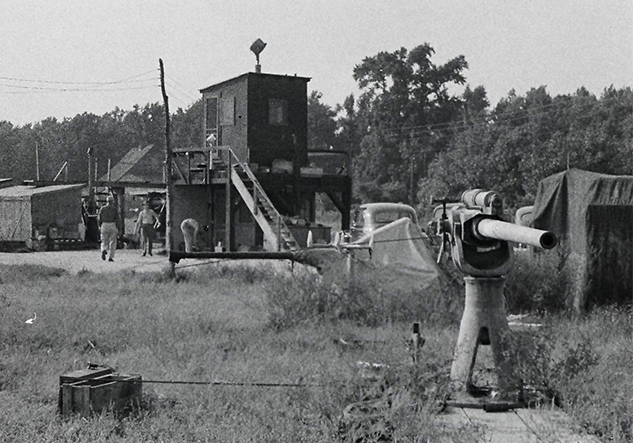
Lab Conducts Firing Tests of Proximity Fuze January 1942
In the months leading up to Pearl Harbor, promising research involves the use of a proximity fuze—one that would detonate a shell near an approaching aircraft, without a direct hit. In January 1942, prototype fuzes are tested at a secret Navy facility located on a Southern Maryland farm. Installed in five-inch anti-aircraft shells and fired vertically into the sky, 52 percent of the shells survive the firing impact and maintain radio transmission during the flight.
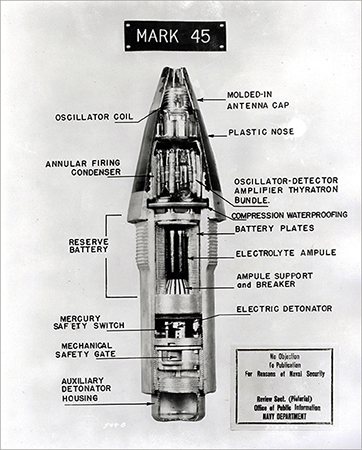
The Radio Proximity Fuze Is Perfected 1942
The Lab perfects and fields one of America’s most closely guarded secrets of World War II—the radio proximity fuze. The fuze uses a small proximity sensor to detect when it is near the target, then triggers detonation. The device is judged by historians as one of the three most important developments of the war, along with radar and the atomic bomb. This annotated cutaway photo of the Mk-45 fuze shows its internal structure and key components.
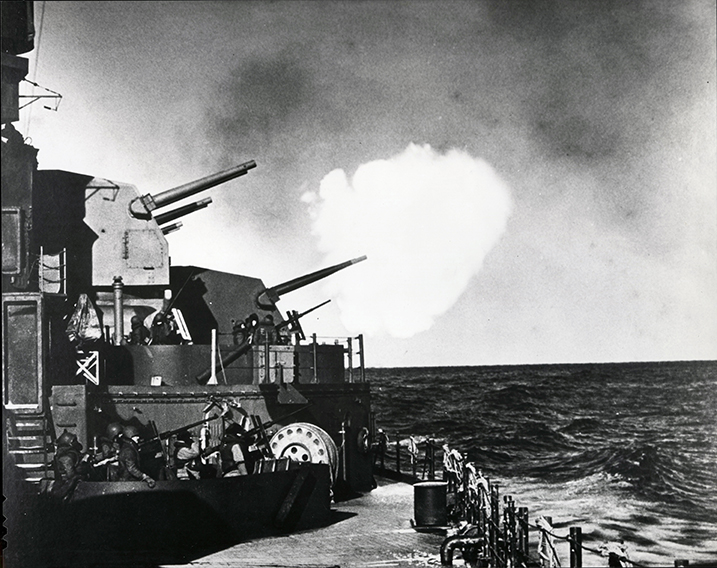
Proximity Fuze’s First Combat Success January 1943
USS Helena, shown here later in the war, achieves the fuze’s first combat success by downing two enemy aircraft in the Pacific in January 1943.

The Bumblebee Cannot Fly 1944
In late 1944, Director Merle Tuve spots a poster like this hanging in a Navy office. The poster inspires Tuve—who is well aware that he and his team face a challenge to develop a guided missile—to name the program Bumblebee.
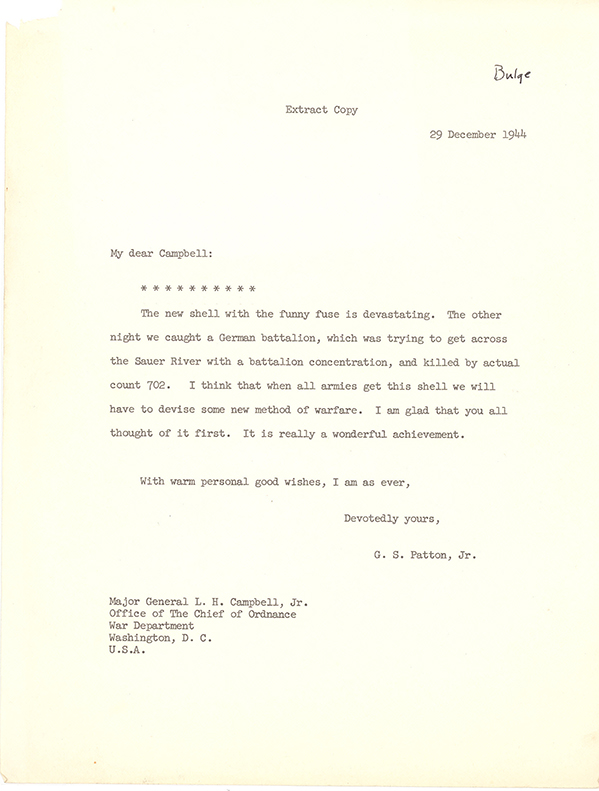
“The new shell with the funny fuse is devastating” December 29, 1944
In a letter to the chief of ordnance at the War Department, General George Patton describes the effectiveness of the fuze in ground combat during the Battle of the Bulge in 1944.
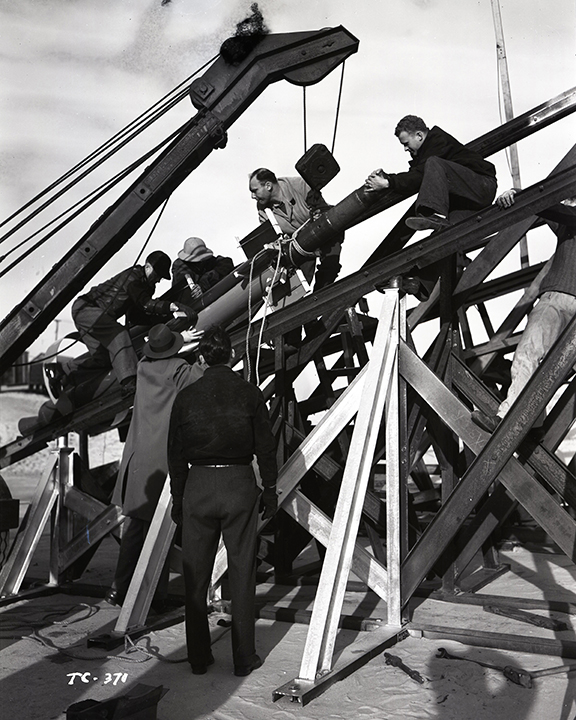
Lab Begins Bumblebee Test Operations 1945
The Lab begins testing the Bumblebee surface-to-air missile at Island Beach, New Jersey. More than 300 people create and test the world’s first ramjet missiles, built from airplane exhaust tailpipes and booster rockets.
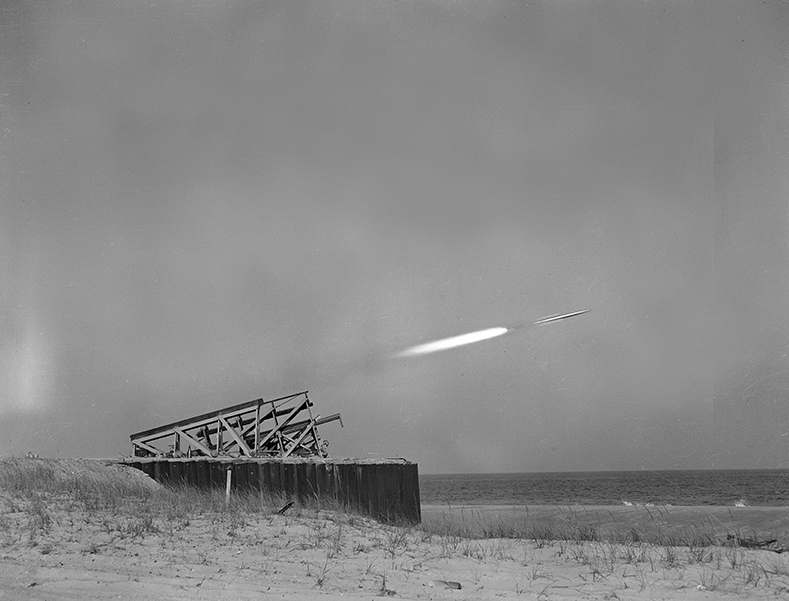
Bumblebee Demonstrates First Successful Ramjet Flight 1945
APL’s pioneering “Bumblebee” guided missile program demonstrates the first successful ramjet flight and first acceleration of a ramjet vehicle to supersonic speed in free flight.
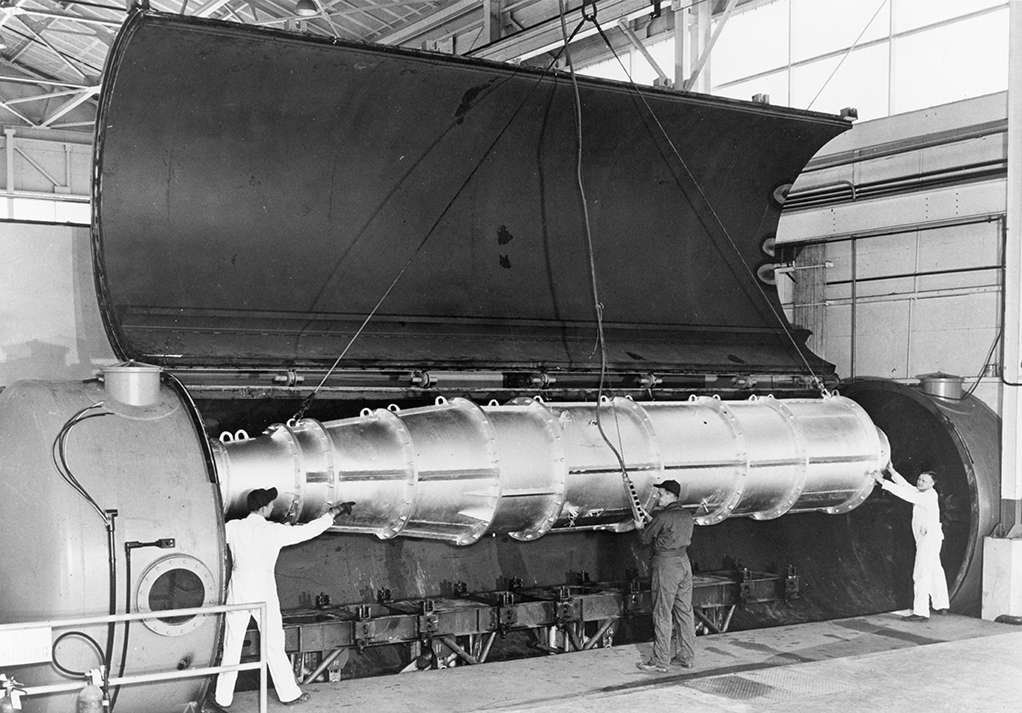
The Ordnance Aerophysics Laboratory 1945
Researchers lower a large-scale ramjet engine into the high-altitude test chamber at the APL-designed and -developed Ordnance Aerophysics Laboratory in Daingerfield, Texas, where it can be tested at conditions that simulate flight.
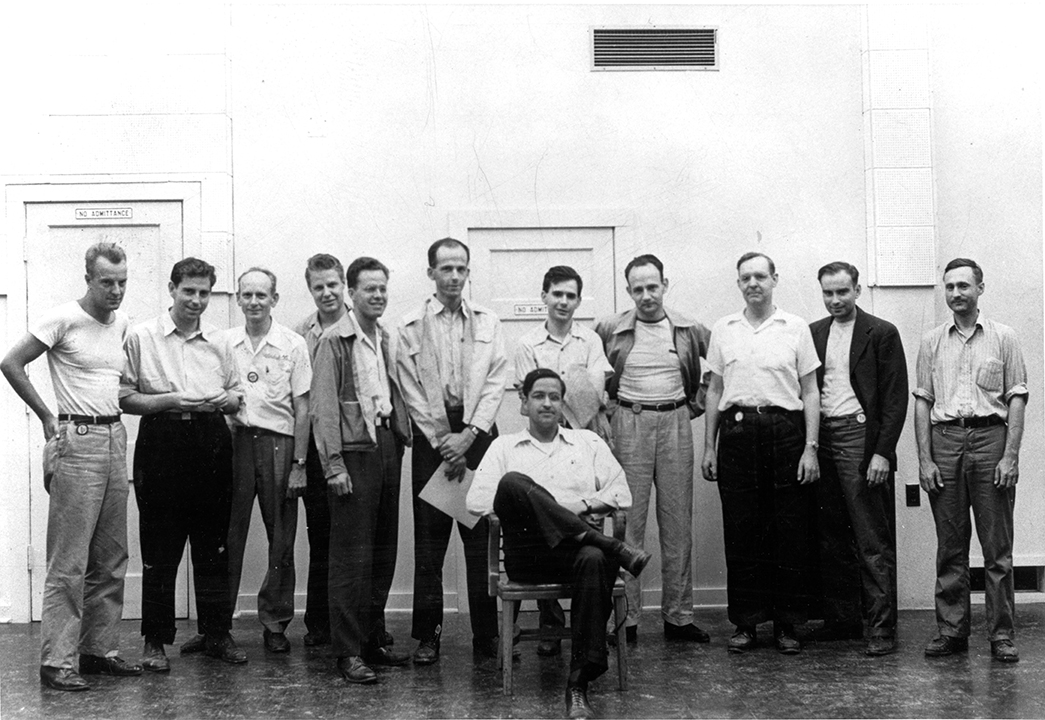
First Successful Operation of the Ordnance Aerophysics Laboratory Wind Tunnel June 1946
On a June morning—at 3 a.m.—engineers pause to mark the first successful operation of the Ordnance Aerophysics Laboratory wind tunnel in Daingerfield, Texas. Test section design and tunnel operation are under the direction of Al Eaton, standing fifth from right.
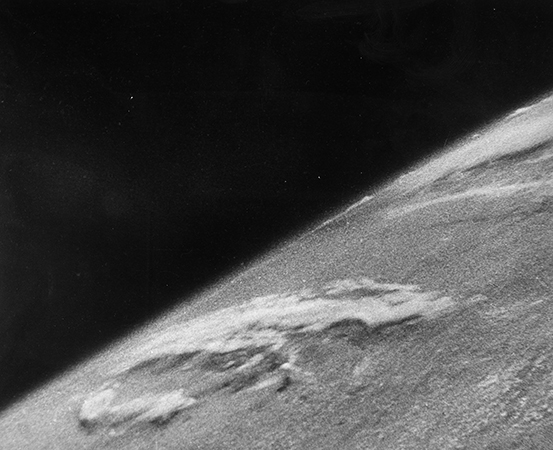
First Photo of Earth Taken from Space October 24, 1946
James Van Allen and APL colleagues load captured German V-2 rockets with cameras and other instruments to measure cosmic radiation in Earth’s atmosphere. Launched from White Sands Proving Ground in New Mexico, their experiments produce the first images of Earth as seen from space. APL engineer and camera developer Clyde Holliday tells National Geographic in 1950 that the photos show for the first time “how our Earth would look to visitors from another planet coming in on a spaceship.”
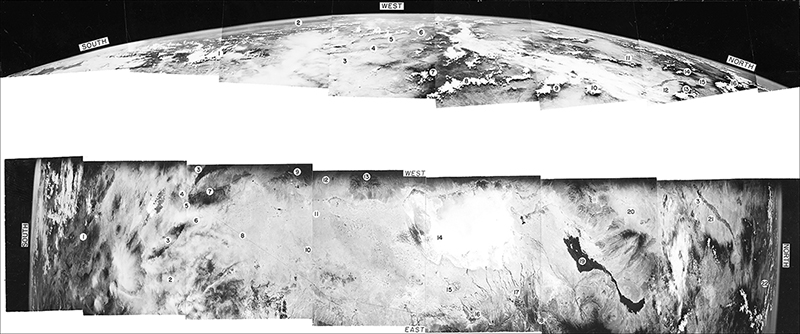
The Curvature of the Earth Captured on Camera 1948
This is humankind’s first view of the curvature of the Earth, a composite of a photo sequence shot approximately 60 miles above the surface by an APL camera installed on a V-2 rocket, launched July 26, 1948.

APL Researcher Proposes the “Big Bang” Theory 1948
APL physicist Ralph Alpher, along with Robert Herman, proposes the theory on the origin of the universe. Alpher conducts critical research that leads to the “Big Bang” theory.
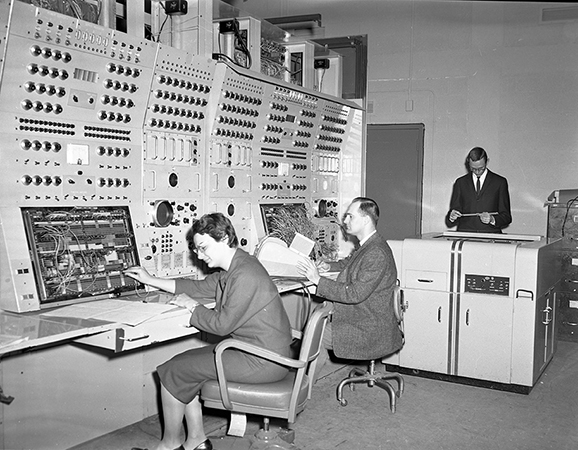
Lab Acquires Reeves Analog Computer 1948
To perform the calculations needed for the increasingly complex technologies and analyses being developed at the Lab, APL acquires a Reeves electronic analog computer in 1948, becoming one of the few institutions outside of the government to do so. This early computer easily outperforms mechanical differential analyzers of the time and is used to evaluate and assess the performance of many systems.
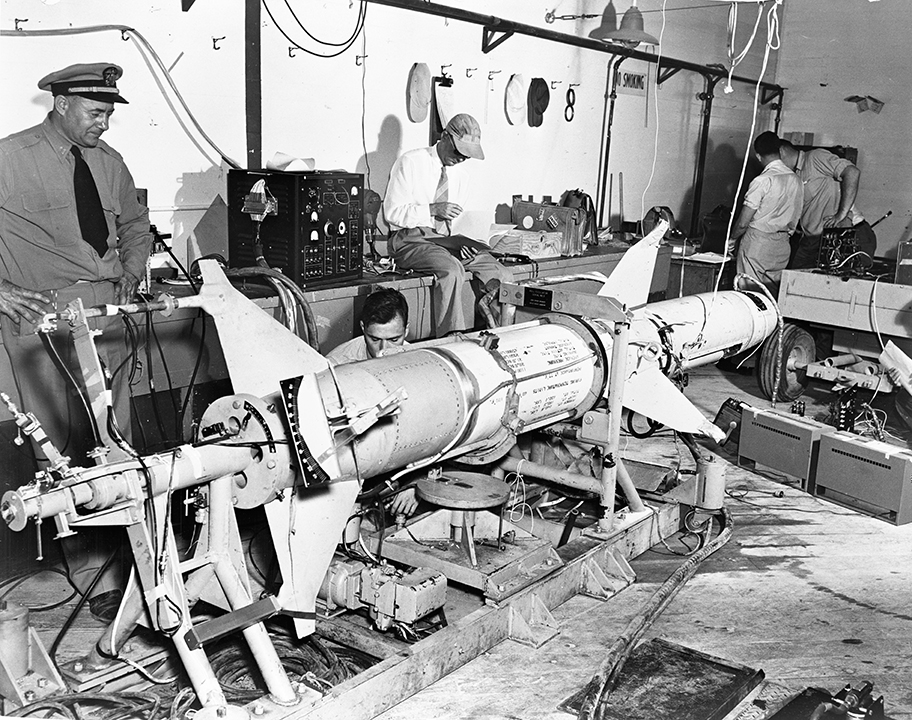
Success for the Supersonic Test Vehicle April 1948
APL is given the high-priority task of rapidly transforming its supersonic test vehicle, STV-3, with its solid rocket motor, into a working interim shipboard weapon system. The successful launch of this fixed-wing control test vehicle lays the foundation for the guidance, flight stabilization, and aerodynamics of future high-speed missiles.
1950s

APL Pioneers Telemetering Technology 1950
Telemetering—the means by which a remote station can receive data and monitor information from a device—is a new field of paramount importance for the development of guided missiles. A success rate of 99.4% accuracy is achieved during flight tests.
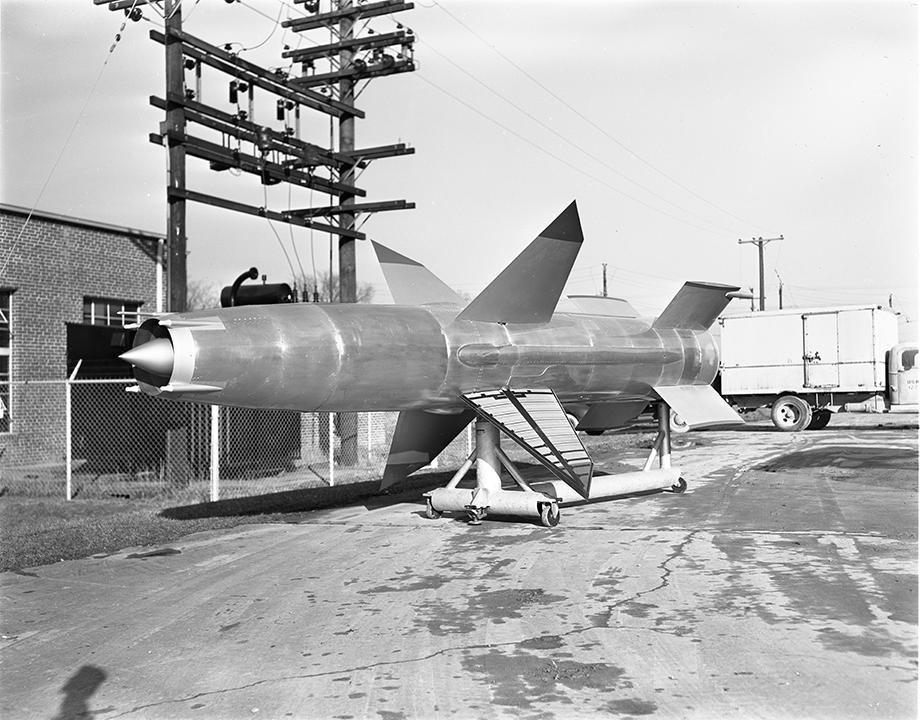
Talos Missile Prototype Designed 1951
Two technological milestones—first successful flight of a ramjet guided missile and first target kill—boost the design effort of the prototype Talos surface-to-air missile.

First Successful Guided Ramjet Missile Intercept 1951
The APL-developed Terrier missile, powered by a ramjet and guided by beam-riding radar, achieves the first-ever successful intercept of a target for a missile of its type.
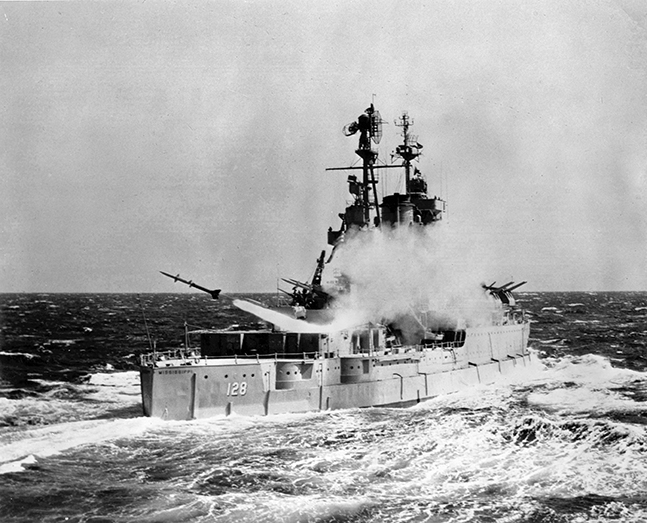
Terrier Missile Completes Successful Test January 1953
In January 1953, APL oversees successful at-sea tests of the Terrier aboard USS Mississippi, prompting the Navy to immediately put the missiles into large-scale production. The Terrier missile roars off the aft launcher of USS Mississippi (BB 41), which is modified in 1952 to carry two dual-arm middle launchers to permit testing of Terrier under more realistic at-sea conditions.
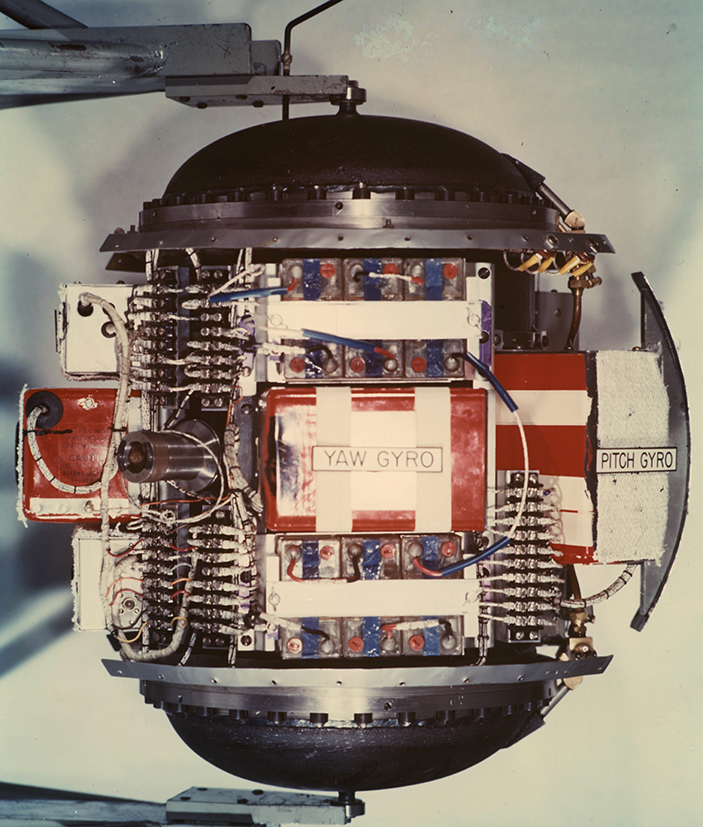
The D-40 Cannonball 1953
Cannonball missiles, conceived by APL’s Randolph Rae, are 15–22 inches in diameter and weigh between 150 and 300 pounds. They can be fired at a speed of 500–800 miles per hour. Each of the three Cannonball missiles designed, developed, and built at the Lab carries two types of warheads and is created to destroy oncoming tanks. APL constructs approximately 50 Cannonballs, officially known as the D-40 A, B, and C missiles, between 1953 and 1956. Production of the costly Cannonball is cancelled in the late 1950s as it is deemed both too expensive and too bulky to operate in combat.
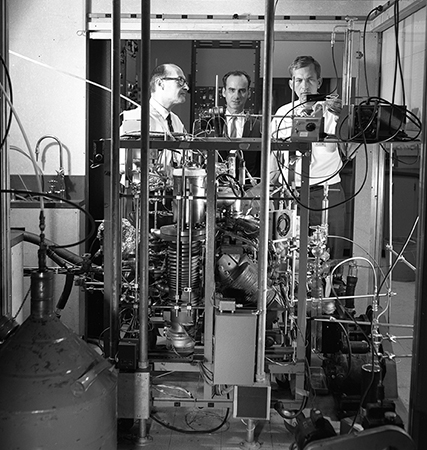
Researchers Design Modulated Molecular Beam Mass Spectrometer 1953
The modulated molecular beam mass spectrometer is used to study chemical reactions and eventually used for the first detection of H2O free radicals.
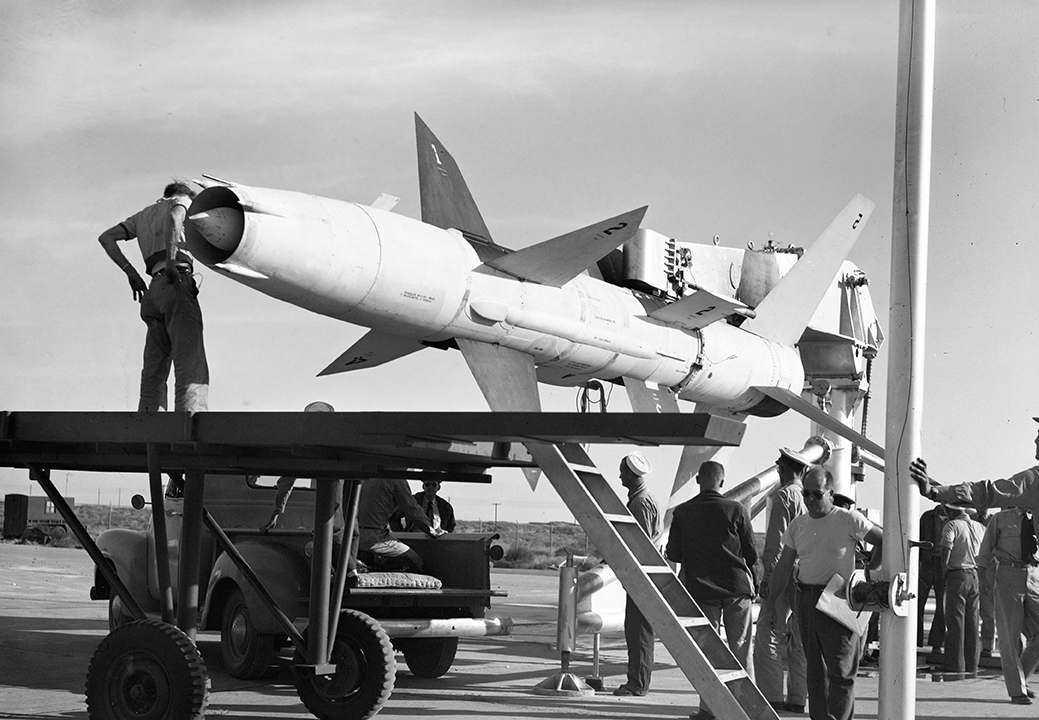
Successful Test of the Talos Missile December 1953
By December 1953, APL successfully flight-tests the first longer-range ramjet-powered Talos missile bearing a simulated nuclear warhead, just 18 months after the program commenced.
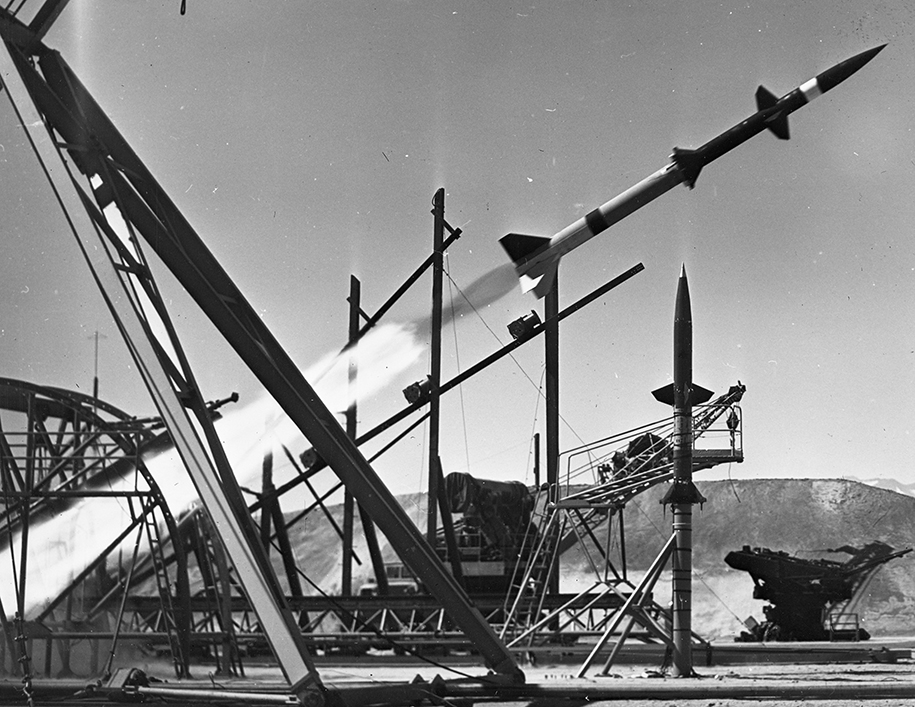
First Successful Test of a Tail-Controlled Missile 1954
Al Eaton’s wind tunnel launch supports the Bumblebee research program to develop a supersonic missile to defend Navy ships. It yields test results confirming Eaton’s explanation of the phenomena that lead to “reverse roll” control failures for the first flight-test vehicles, and provides data validating his proposed solution for the production of Terrier missiles. This is instrumental in the development of the aerodynamic design still in use today, with all control elements at the rear of the missile and small dorsal fins replacing large wings.
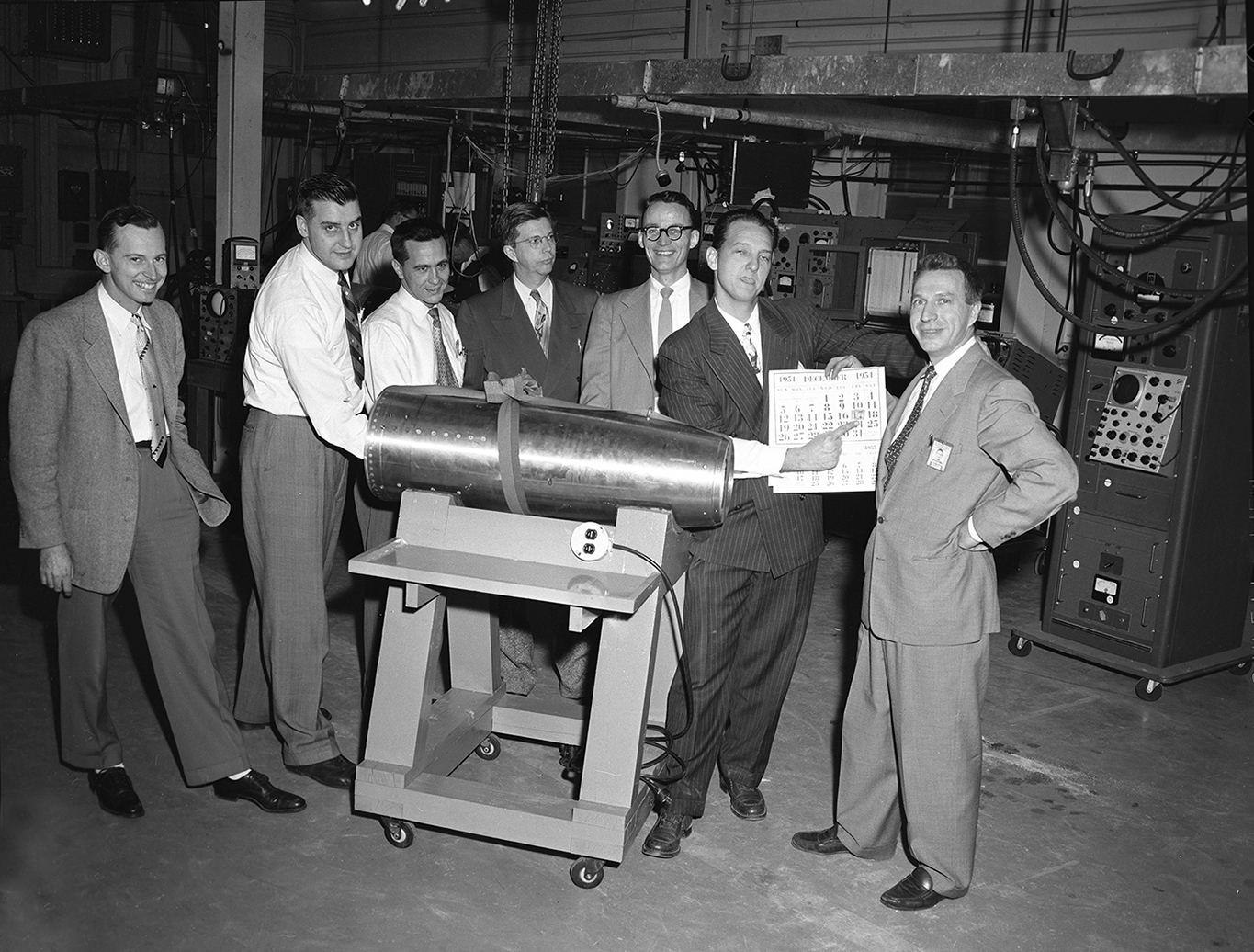
APL Develops a Homing Guidance System for Terrier December 17, 1954
APL engineers work on the homing head for the supersonic guided missile Terrier, which in 1954 is successfully fired from shipboard for the first time.
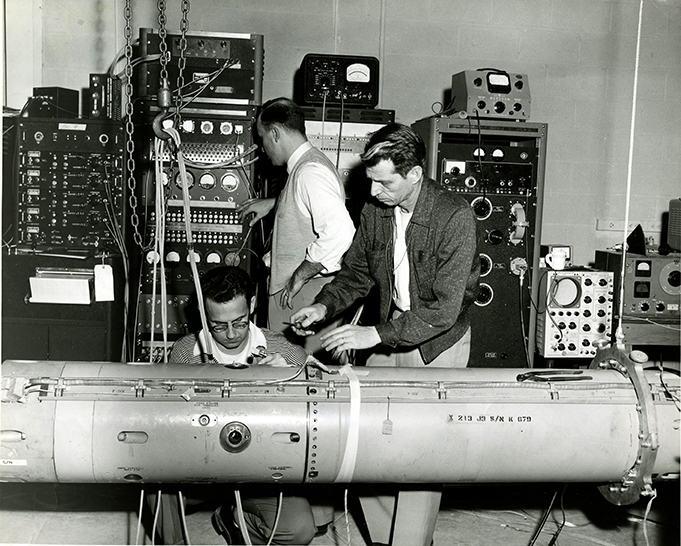
APL Begins Developing Tartar 1955
Tartar is a semiactive homing missile for small ships. APL’s design for the smaller missile calls for eliminating some of the separable components used in Terrier and Talos.

Terrier Becomes Operational 1956
The Terrier missile becomes operational aboard USS Boston, the world’s first guided-missile ship.

Lab Performs First Flight Test Analysis of Polaris System 1957
The initial tests of Polaris at Cape Canaveral, Florida, are dismal failures, with the missiles breaking up a few seconds after their launch, the remnants floating in the nearby Banana River.
APL Tracks Soviet Sputnik 1957
Two young APL physicists, William Guier and George Weiffenbach, develop the first successful method of tracking satellites. Using an available 20-MHz receiver, the physicists carefully observe and record the Doppler shift in signals that Sputnik transmitted. By analyzing the signals and converting them into precise orbital data, APL is able to track Sputnik.
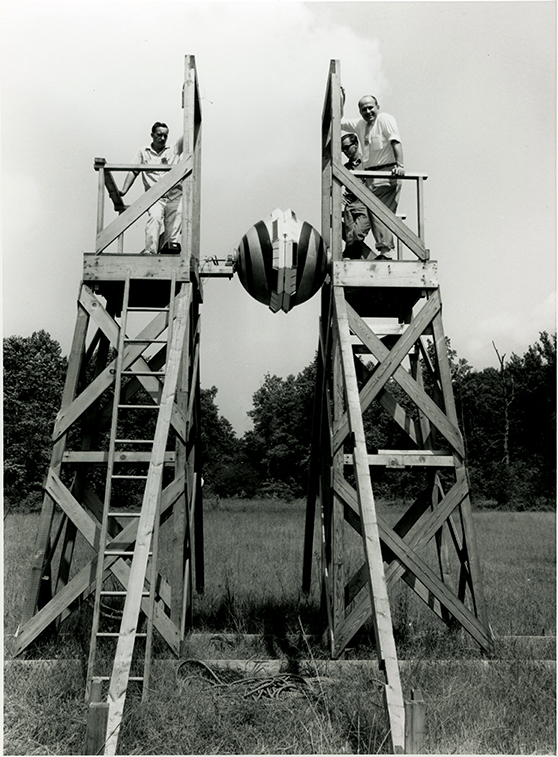
Transit Satellite Navigation System Invented 1958
APL invents the world’s first Doppler-based, all-weather, satellite navigation system: Transit. Wilfred Zimmerman (left), David Moss, and James Smola test a mechanism designed to prevent the Transit 1A satellite from spinning while in orbit. Building on the work of William Guier and George Weiffenbach—two young APL physicists who accurately determined Sputnik’s orbit and developed a method for tracking satellites—the group realizes that if the satellite’s orbit is known, the inverse equation can pinpoint locations anywhere on the Earth’s surface within the satellite’s coverage.
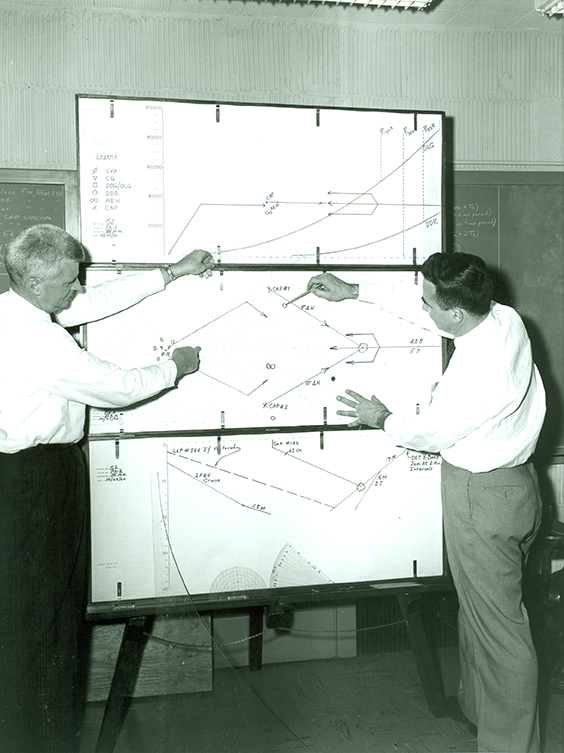
Air Battle Analyzer Developed 1959
Stuart Ball (left) and John Long use Air Battle Analyzer nomographs to correlate horizontal, vertical, and time perspectives of a tactical situation. Created to address naval anti-air-warfare issues, the Air Battle Analyzer is the first computer-supported air defense planning tool. Dr. Mathews C. Waddell considers the feasibility of an experimental model or board upon which all of the information could be charted, logged, and moved about in a kind of game. Spread out, the display covers a third of an office wall, ceiling to floor, and looks much like a plotting board that combat commanders use to follow battles. Folded, it fits well into a mapping case, and is known as the air battle analyzer.
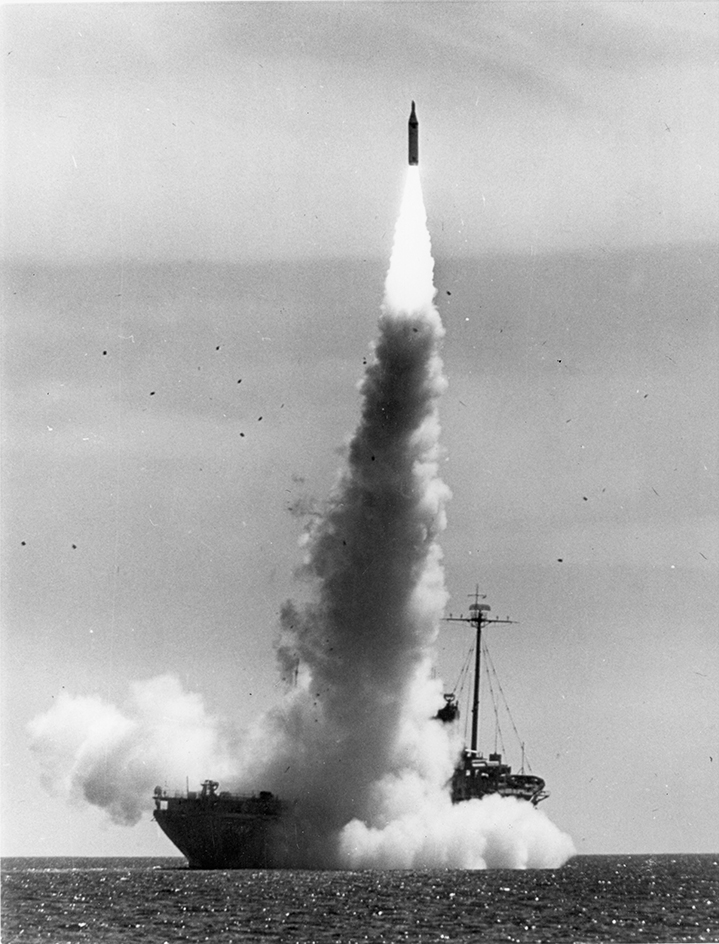
Polaris AX-6 Missile Launches Successfully April 1959
A Polaris prototype streaks skyward from a launcher aboard USS Observation Island off Cape Canaveral. The support ship also houses a complete missile tracking and instrumentation suite and serves as a second home for teams of APL Polaris missile analysts for many years.
1960s

Ferdinand and the Beast 1960
John Chubbuck (right) with “the Hopkins Beast” and Leonard Scheer with “Ferdinand,” early APL robots, or “automatons.” The APL scientists building robots in the early 1960s want to create a machine that can operate without human assistance in a natural environment, rather than in one constructed especially for it. Based on the state of electronics and artificial intelligence at the time, the robots’ sole purpose is to survive by navigating APL’s hallways. And survive they do: Using touch-sensor systems, the cylindrical Beast and its older, smaller, square-shaped “brother” Ferdinand avoid doorjambs, vending machines, stairs, open doorways, and other obstacles to locate electrical outlets and recharge their batteries.
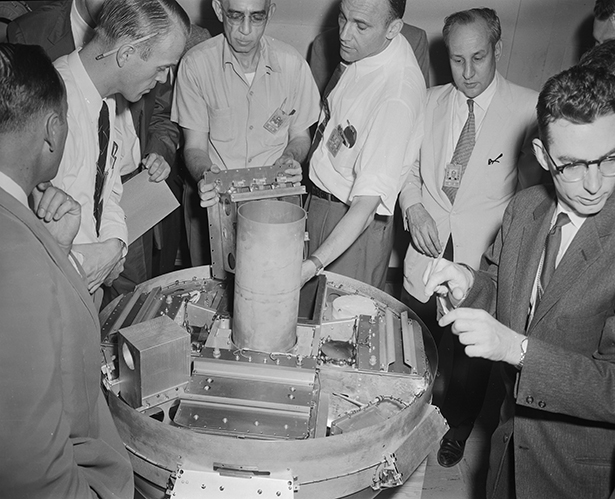
Transit 1B Launches April 13, 1960
Transit 1B is launched at Cape Canaveral by a two-stage Thor Able-Star rocket. The satellite makes it safely into orbit, albeit at a lower orbit than was planned.
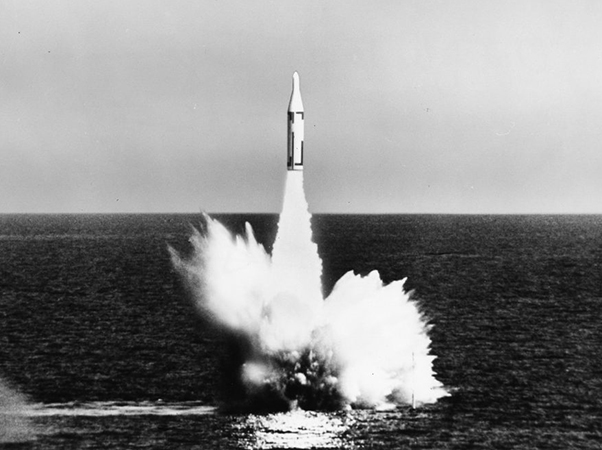
First Launch of Polaris July 20, 1960
In the first peacetime test of the Fleet Ballistic Missile combined submarine system, the submerged USS George Washington fires two Polaris missiles off Cape Canaveral, Florida. According to The APL News, “The missiles accurately delivered their payloads through space to a target many miles down range. Naval efforts of this significance are historically scarce for this operation married space to sea power. This system will be deployed in the months to come and will significantly add to the ballistic power balance in the Free World.”
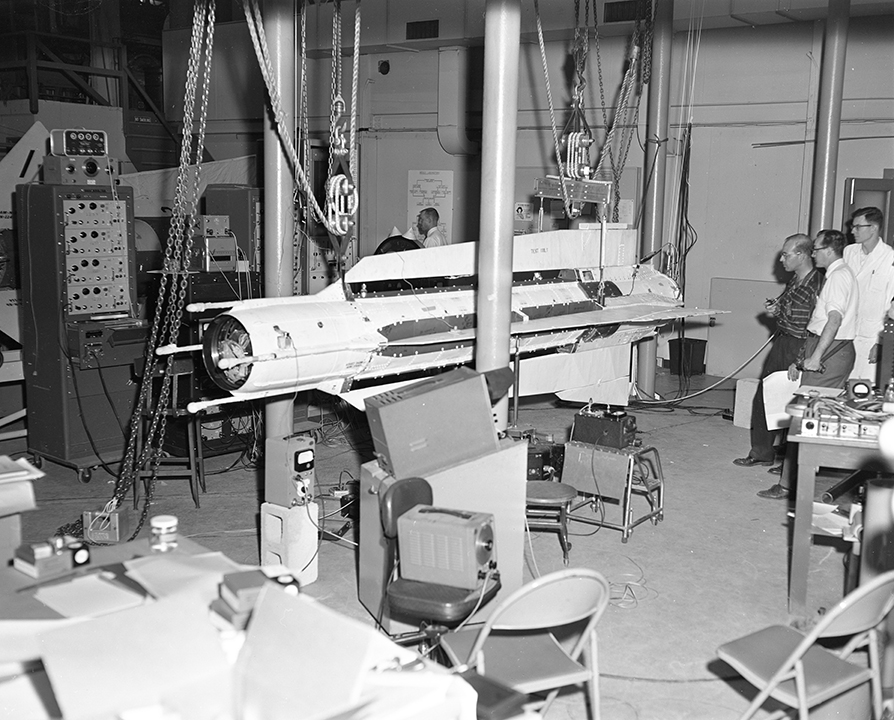
Groundbreaking Phased-Array Radar Defense System Concept: Typhon 1961
In the 1960s, APL develops a phased-array radar concept for the Navy that brings together all elements of anti-aircraft warfare. The earliest design grouped together a number of antenna “feeds” via a special microwave lens to transmit and receive multiple signals simultaneously. Through this work, APL also introduces a practical way to filter out clutter and jamming. Most importantly, the Lab’s multifunction phased-array radar is designed to guide twenty U.S. missiles to multiple targets at the same time. Its capabilities are so formidable that the Navy names it Typhon, after the monstrous giant and most deadly being of Greek mythology.
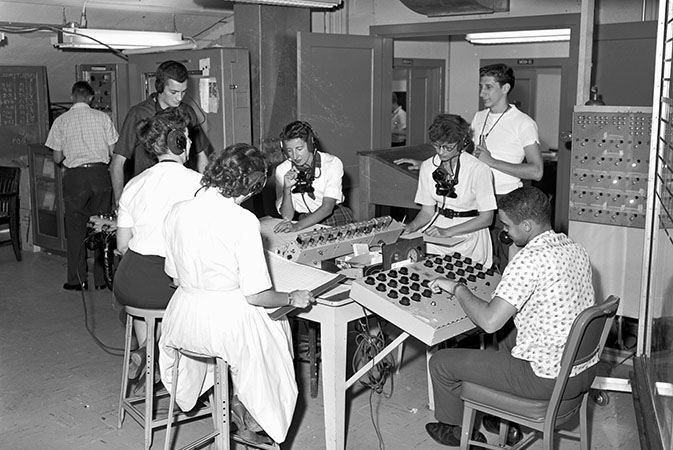
The Battle Simulator Facility August 31, 1962
From The APL News: “Women of BGP receive, relay combat orders and maneuver friendly and enemy forces on board in foreground. In adjacent command room, a Naval officer makes decisions which can influence the simulated battle. The women are, left to right, Madeline Smallwood, Pauline Fagan, Myrna Brantley, Opal Walters, and Nancy Ginn. Rear is Clarence Schilt who marks orders on status board.”
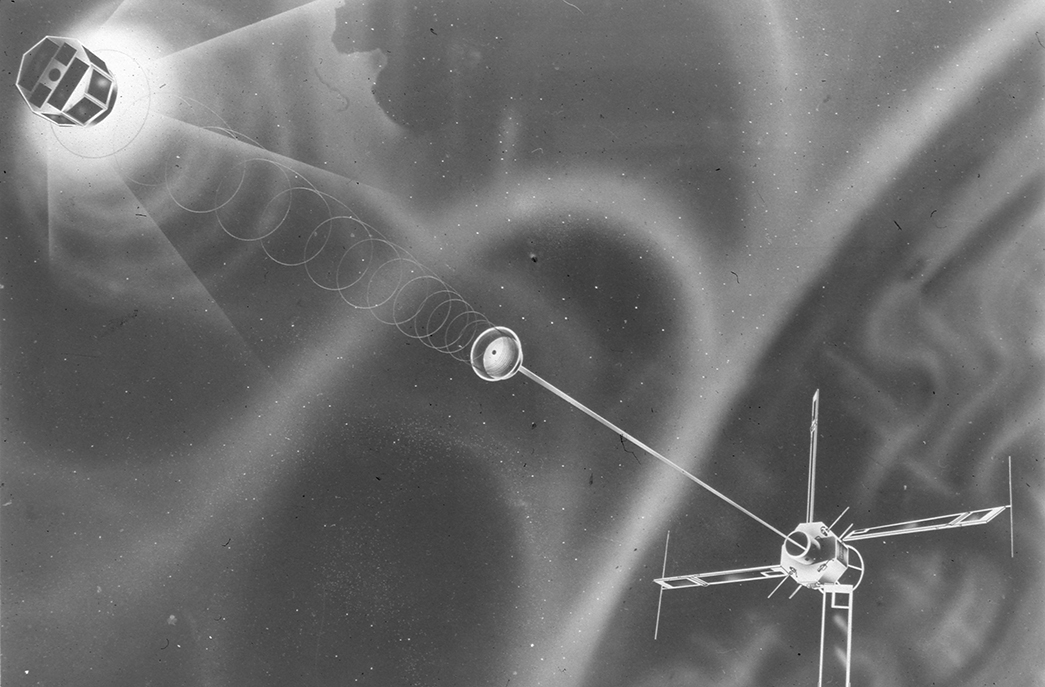
A Spacecraft Stability First 1963
Transit 5A-3 becomes the first satellite to achieve passive gravity-gradient attitude stabilization. APL researchers Richard Kershner and Robert Fischell write in “Peaceful Uses of Automation in Outer Space” how using Earth’s gravity field for vertical stabilization of near-Earth satellites has intrigued theoreticians for many years. The writers also acknowledge the obstacles involved, including the very small stabilizing torque available, and lack of a natural damping mechanism.
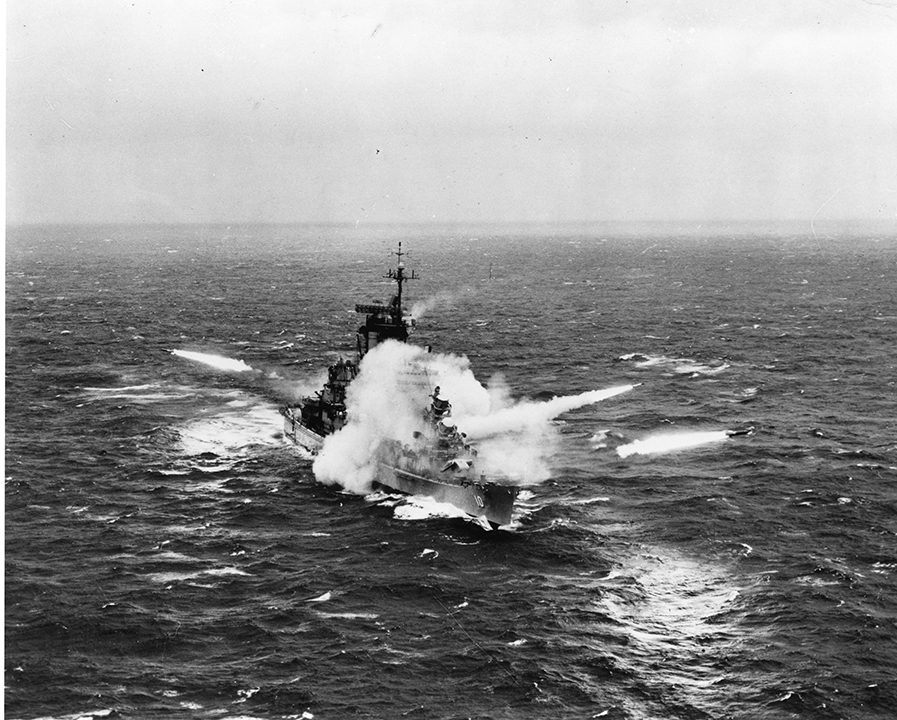
First Cruiser Armed with Guided Missiles February 1, 1963
USS Albany (CG-10), the first cruiser to be armed solely with guided missiles, tests its muscle during its maiden cruise off of Virginia, simultaneously firing one Tarter and two Talos missiles.
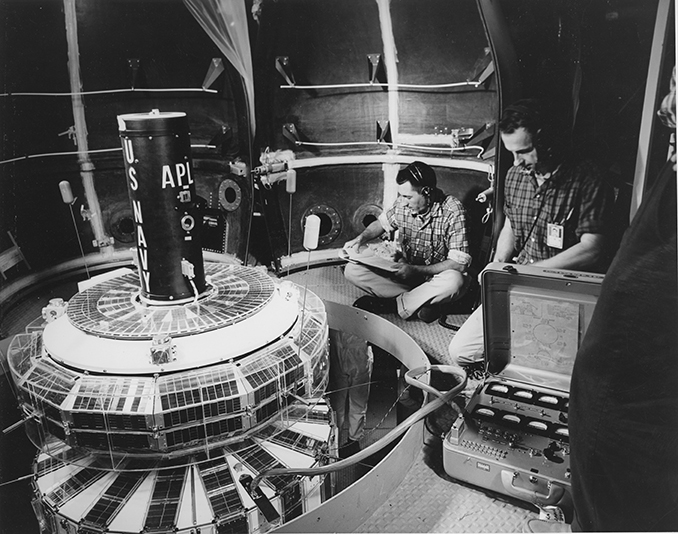
Transit Becomes Fully Operational 1964
During the 1960s and 1970s, the Lab designs, builds, tests, and operates numerous satellites for the Transit navigation system. Fully operational in 1964, the system improves the ability of U.S. submarines around the globe to accurately determine their positions. Transit also carries instruments to measure the Earth’s geodetic and magnetic properties and to serve purposes of astronomy. The program pioneers advances in satellite design and operation, including addressing the issue of keeping satellites facing Earth so their signals can be received without interruption. APL also incorporates a de-spinning mechanism similar to a yo-yo to combat the issue of satellites constantly spinning once launched.

Polaris Missile Test Launch April 1964
Smoke billows below a Polaris missile during a test launch in April 1964, one of only two surface launches ever made in the history of the U.S. fleet ballistic missile program.
APL Develops Beacon Explorer for NASA October 9, 1964
The Beacon Explorer is launched on October 9 from the Pacific Missile Range in California, and contains several experiments for study of the ionosphere and for obtaining geodesy information—data on the size and shape of the Earth.

The Beginnings of a Biomedical Partnership 1965
APL teams up with the Johns Hopkins medical institutions to establish a formal, collaborative biomedical engineering program. Driving the effort at APL is Research Center Chair (and future Deputy Director) Frank McClure, assisted by Alvin Shulz, Joe Massey, and a cast of many others. Over the years, this partnership allows APL to apply its science, engineering, and systems analysis expertise—acquired primarily in defense and space—to significant problems in biomedical science and health delivery.
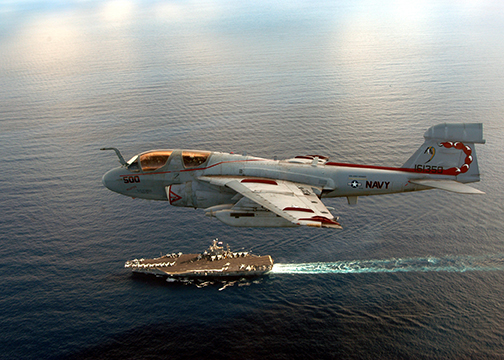
APL Takes on Expanded Electronic Warfare Role July 24, 1965
On July 24, 1965, the United States lost its first aircraft to a Soviet-built SA-2 surface-to-air missile system in the skies over Vietnam. The next day, the director of defense for research and engineering asks APL to study the situation and recommend ways to counter this threat. APL completes an assessment in two weeks and recommends changes to tactics and the development of electronic countermeasures. In the years since, APL has played a large role in the design and development of systems to support the Navy EA-6B Prowler electronic warfare aircraft (shown flying over USS John F. Kennedy in the Navy photo), as well as its successor, the EA-18 Growler.
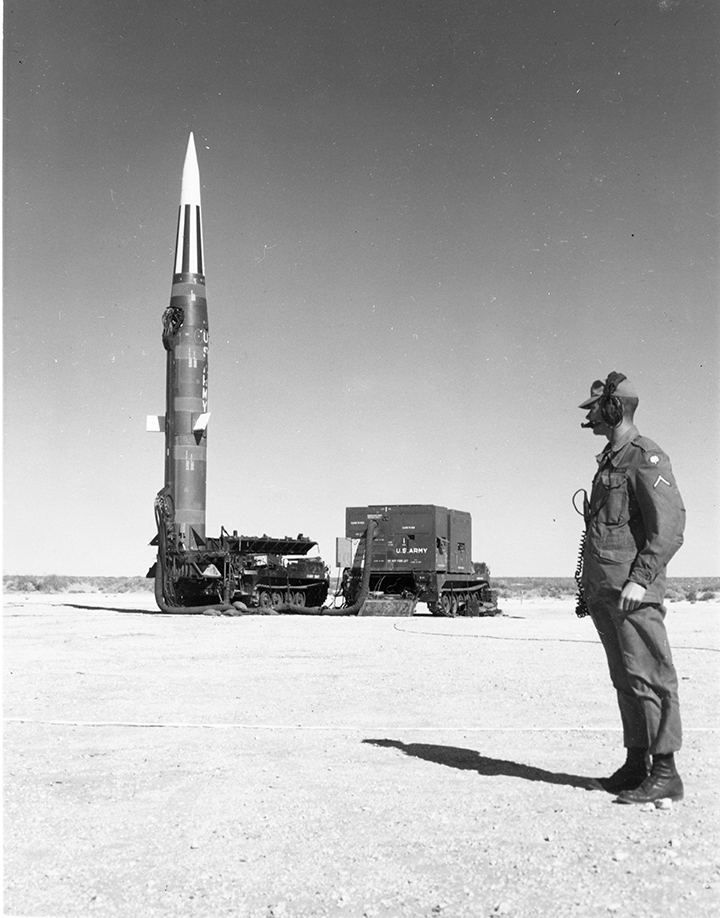
Lab Works on Pershing Land-Based Missile System 1966
Based on its expertise in sea-based missiles, APL is tasked to provide technical support and analysis during testing of the Pershing Land-Based Strategic Ballistic Missile System.
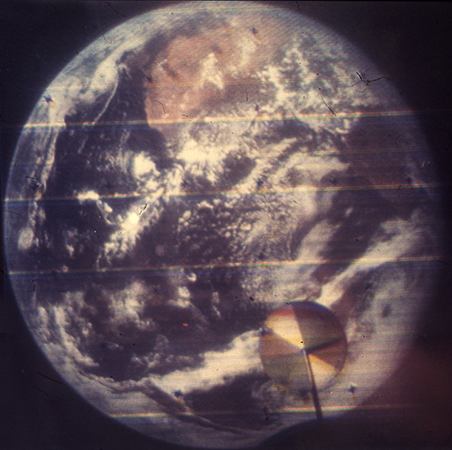
APL Builds DODGE Spacecraft, Takes First Color Photo of Earth July 1, 1967
DODGE, the Department of Defense Gravity Experiment, is a satellite sent into orbit to study and demonstrate gravity-gradient stabilization—a procedure to keep one face of the satellite always pointing at the Earth—at near-geosynchronous altitudes. To help make certain that the satellite is pointing toward the Earth, DODGE carries a camera, and by rotating three color filters in front of the lens, it is able to produce the first color picture ever taken of the whole Earth. The photographs are featured in the November 1967 issue of National Geographic.

APL Expands Civilian Research Programs 1968
The Lab’s areas of research grow to include transportation (including rail systems like San Francisco’s BART, shown here), fire prevention, prosthetics, and energy.

AMFAR Demonstrated 1969
The Advanced Multifunction Array Radar (AMFAR) system can electronically send out an antenna beam at any angle in microseconds rather than moving a large, cumbersome radar dish. A prototype of AMFAR built by APL in 1969 is operated successfully on the roof of a building at campus headquarters. AMFAR provides the design basis for the first production system, which the Navy renames the AN/SPY-1 radar system.
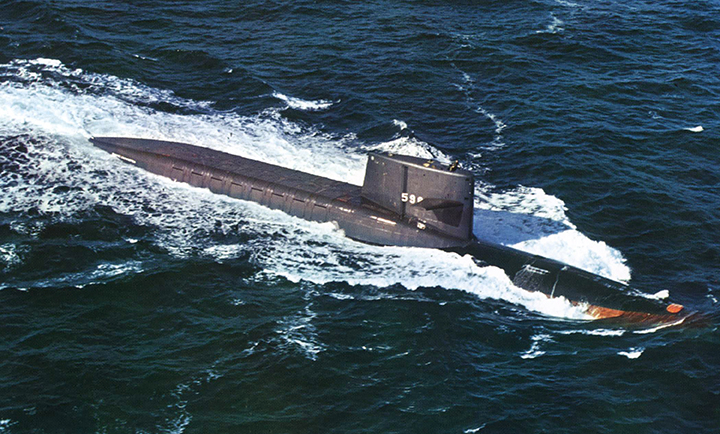
APL Named Principal Technical Direction Agent for New SSBN Security Program 1969
In 1969, the Lab is named the principal technical agent for the SSBN (submersible ship, ballistic nuclear) Security Technology Program, designed to ensure the survivability of the nation’s fleet of ballistic nuclear submarines, including the first, USS George Washington.
1970s

Automatic Detection and Tracking System Tested 1970
Shown here is an AN/SYS-1 operator on board USS Somers (DDG-34), performing testing of the experimental automatic detection and tracking system for the control radar processor that demonstrated feasibility of APL concepts. These would serve as the precursor to modern air defense tracking systems.
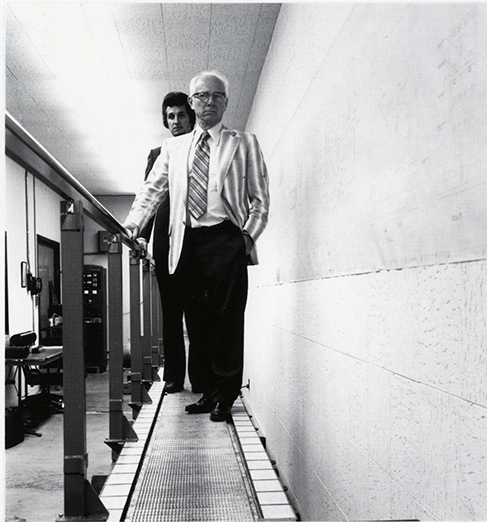
Lab Develops Accelerating Walkway 1972
APL engineers develop a variable-speed moving walkway transportation system, which can be boarded as an escalator but which accelerates to a cruising speed of five miles an hour. The 40-foot-long prototype is the only working accelerating walkway in the United States.
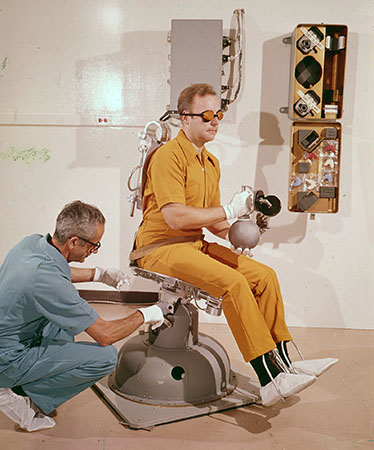
The Space Department’s Rotatable Litter Chair for Skylab 1973
APL develops the device for experiments on Skylab, the first U.S. Earth-orbiting laboratory. The litter chair, which resembles something you’d find in a dentist’s office, can be positioned in various angles and spun at various speeds to study the body’s reaction to prolonged weightlessness. It is now on display at the National Air and Space Museum.
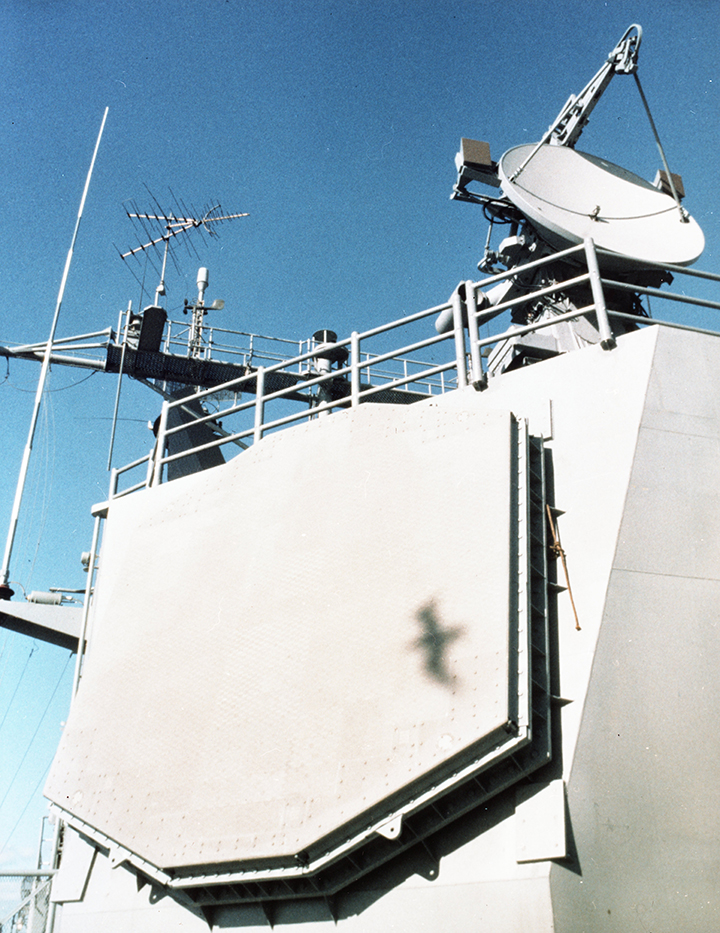
Successful Aegis Radar Testing 1974
APL successfully tests its engineering development model of the AN/SPY-1 computerized radar system for Aegis aboard USS Norton Sound.
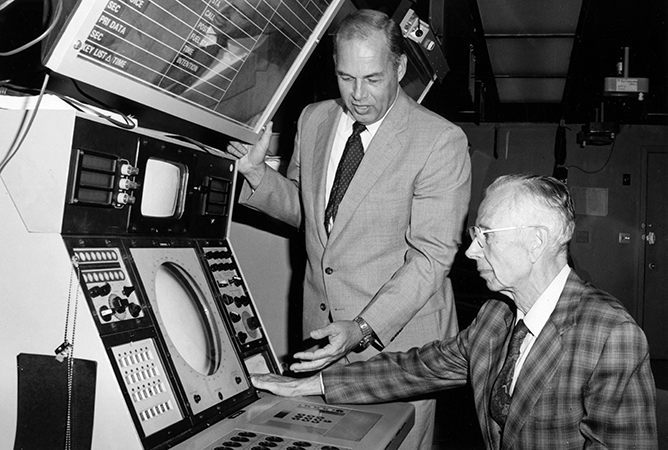
SYS-1 Combines Radar Data for Earlier Threat Detection 1974
At the radar display, Director Alexander Kossiakoff (seated) and James Austin of the Fleet Systems Department, who later led the Submarine Technology Department, view combat information from SYS-1, whose development they led. The SYS-1 software combines data from multiple radars, allowing earlier detection of threats.

Early Unmanned Systems Research 1974
APL has long been at the forefront of drone development, thanks to the efforts of Maynard Hill, a metallurgist who spent much of his time at the Lab in the 1980s designing and developing a series of drones. Shown here in this 1974 photo are (left to right) Maynard Hill (Remotely Piloted Vehicle program manager), Robert Givens, Melvin Newcomer, William Charbonneau, and Raymond Cole. At APL, Hill designs the BQM-147A Expendable Drone, or Exdrone, now known as the U.S. Marine Corps’ Dragon Drone.
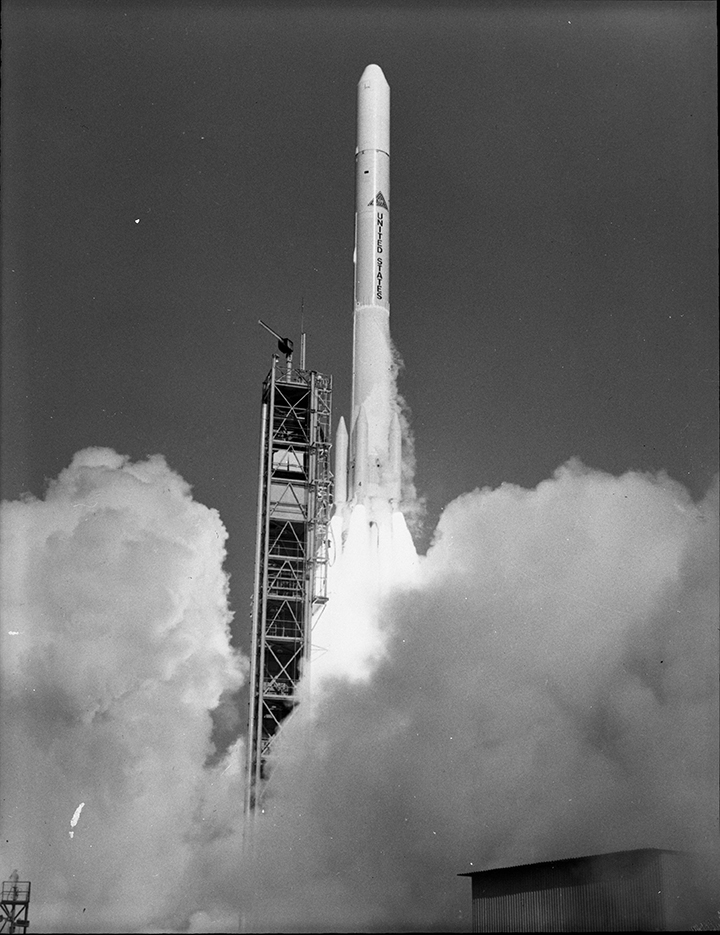
First Successful Satellite-to-Satellite Tracking 1975
APL’s GEOS-C spacecraft demonstrates the first satellite-to-satellite tracking. The spacecraft provides the first worldwide survey of small variations in the mean sea level.
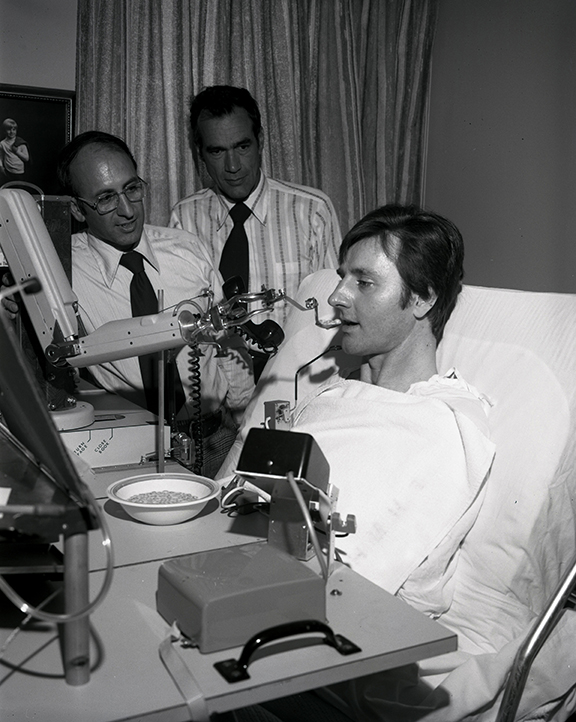
Microprocessor Applications: The Mechanical Arm 1975
In the 1970s, Lab researchers begin working on prosthetic limbs and control systems for quadriplegics. By 1975, a robotic arm—commanded by a chin-movement controller—allows patient John Craven to perform tasks, including reading and feeding himself. Also pictured are APL’s Woodrow Seamone (left) and Johns Hopkins orthopedic surgeon Dr. Gerhard Schmeisser (right).
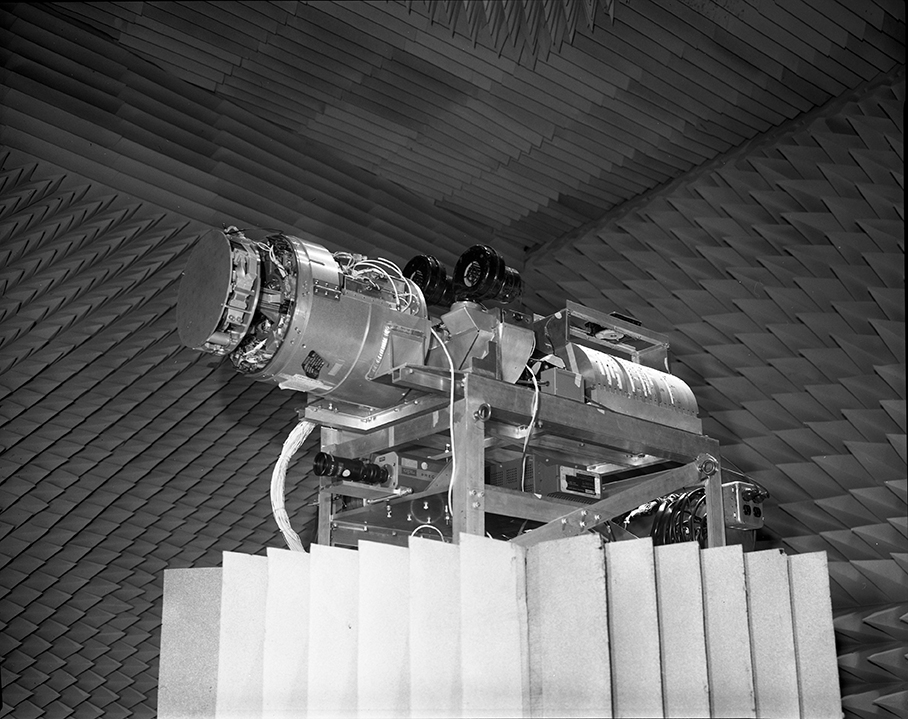
Harpoon Is Flight Certified 1976
A Harpoon missile seeker undergoes testing in the anechoic chamber at APL’s Guidance Systems Evaluation Laboratory (GSEL). The 1967 sinking of the Israeli ship Eilat convinced the Navy that it needed to quickly develop its own cruise missiles. Work subsequently progresses to produce what will become the medium-range anti-ship Harpoon missile and the longer-range Tomahawk cruise missile, both of which become vital precision strike systems for the Navy. APL scientists and engineers play a number of key roles in each program, especially in missile guidance and accuracy.
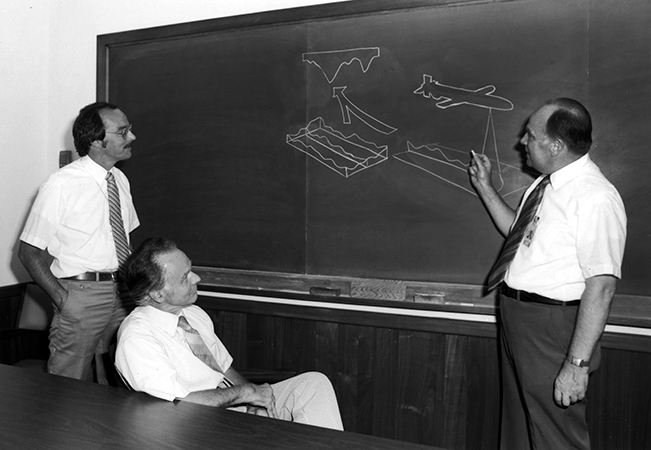
Development of Longer-Range Tomahawk Cruise Missile 1977
William Spohn (right) with an illustration showing the basic operation of the TERCOM system, developed for the Tomahawk cruise missile. TERCOM was the key to achieving the accuracy critically needed for the Tomahawk. Also shown are David Kalbaugh (left) and James Walker (seated). To improve the accuracy of conventionally armed Tomahawks, APL created another set of algorithms, needed to effectively use Digital Scene Matching Area Correlator (DSMAC) technology. The algorithms compared images taken by a camera onboard the missile to scenes stored in the missile’s computer.

The APL-Built Low Energy Charged Particle (LECP) Instrument Launches Aboard Voyager September 5, 1977
In a perfect launch from Cape Canaveral on September 5, Voyager 1 follows its companion spacecraft Voyager 2 (launched August 20) on their multi-million-mile journey to the outer planets, Jupiter and Saturn, and beyond our solar system. Watching liftoff at the Cape are a number of APLers, including some on the technical team here that designed and developed the Low Energy Charged Particle (LECP) experiment, one of the spacecraft’s 11 instruments that will study the planets, their satellites, and the rings of Saturn, as well as the magnetic regions surrounding the planets and interplanetary space.
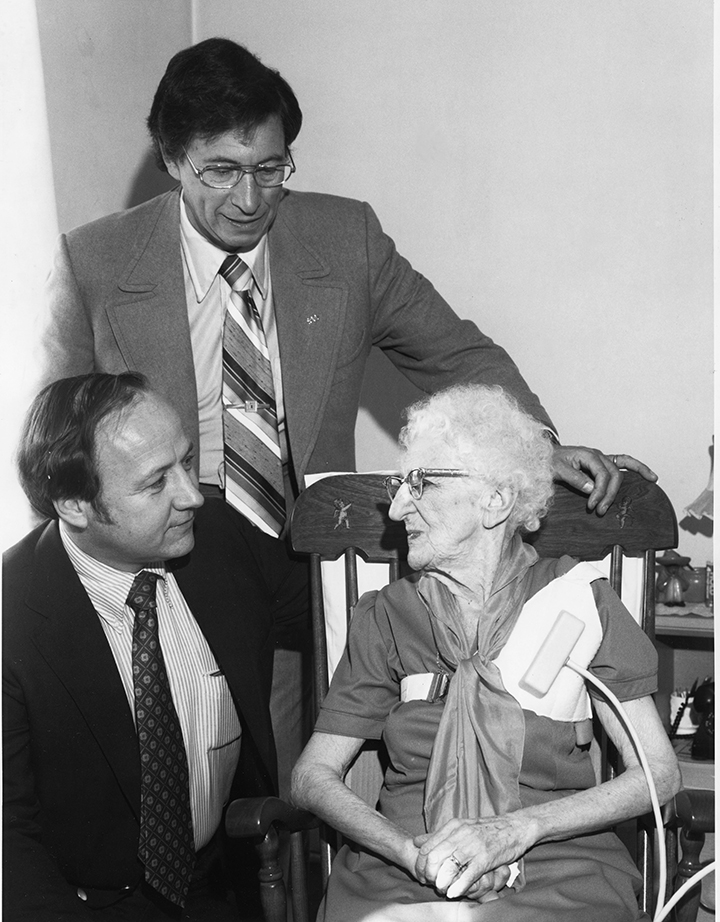
The World’s First Rechargeable Pacemaker February 10, 1978
Dr. Kenneth B. Lewis, left, cardiologist, and Robert E. Fischell, physicist, develop the Johns Hopkins rechargeable pacemaker. Helen Chambers is the first to receive the pacemaker, which she recharges weekly.
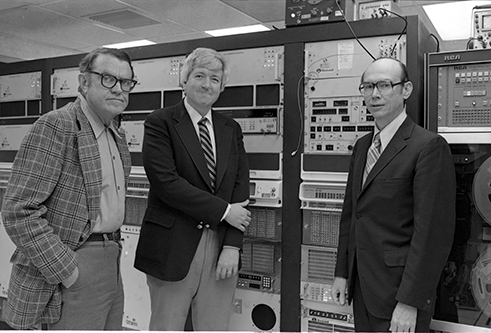
Sonar Program Analyzer 1979
APL builds the Sonar Program Analyzer (SPAN), a programmable acoustic signal processor.
1980s
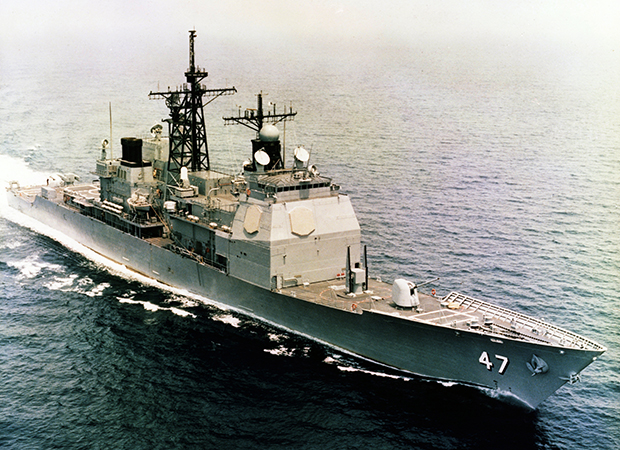
The First Aegis Ship, USS Ticonderoga, Launches; APL Serves as Technical Advisor 1981
The guided-missile cruiser USS Ticonderoga (CG-47) is the first Navy vessel to feature the Aegis combat system, which allows the ship to track and engage multiple airborne threats.
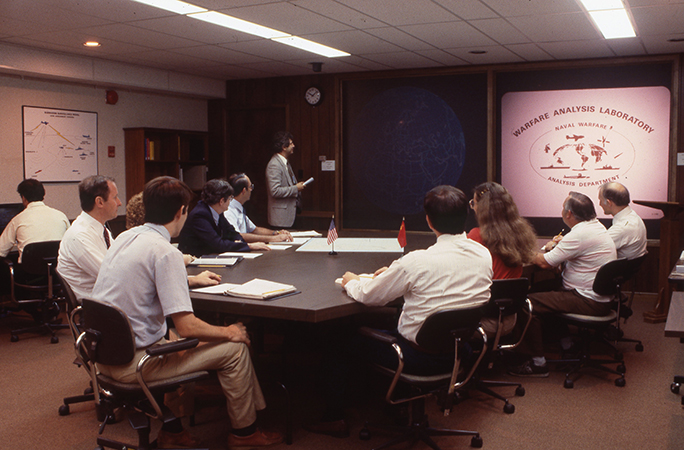
APL Hosts First Major Warfare Analysis Laboratory (WAL) Exercise 1981
To better understand and respond to ever more challenging threats, a Warfare Analysis Laboratory (WAL), comprising representatives from all of the Lab’s technical departments, is established in 1981. WAL staff guide the development of a new warfare analysis process using scenario testing, called WALEX, for Warfare Analysis Laboratory Exercise.
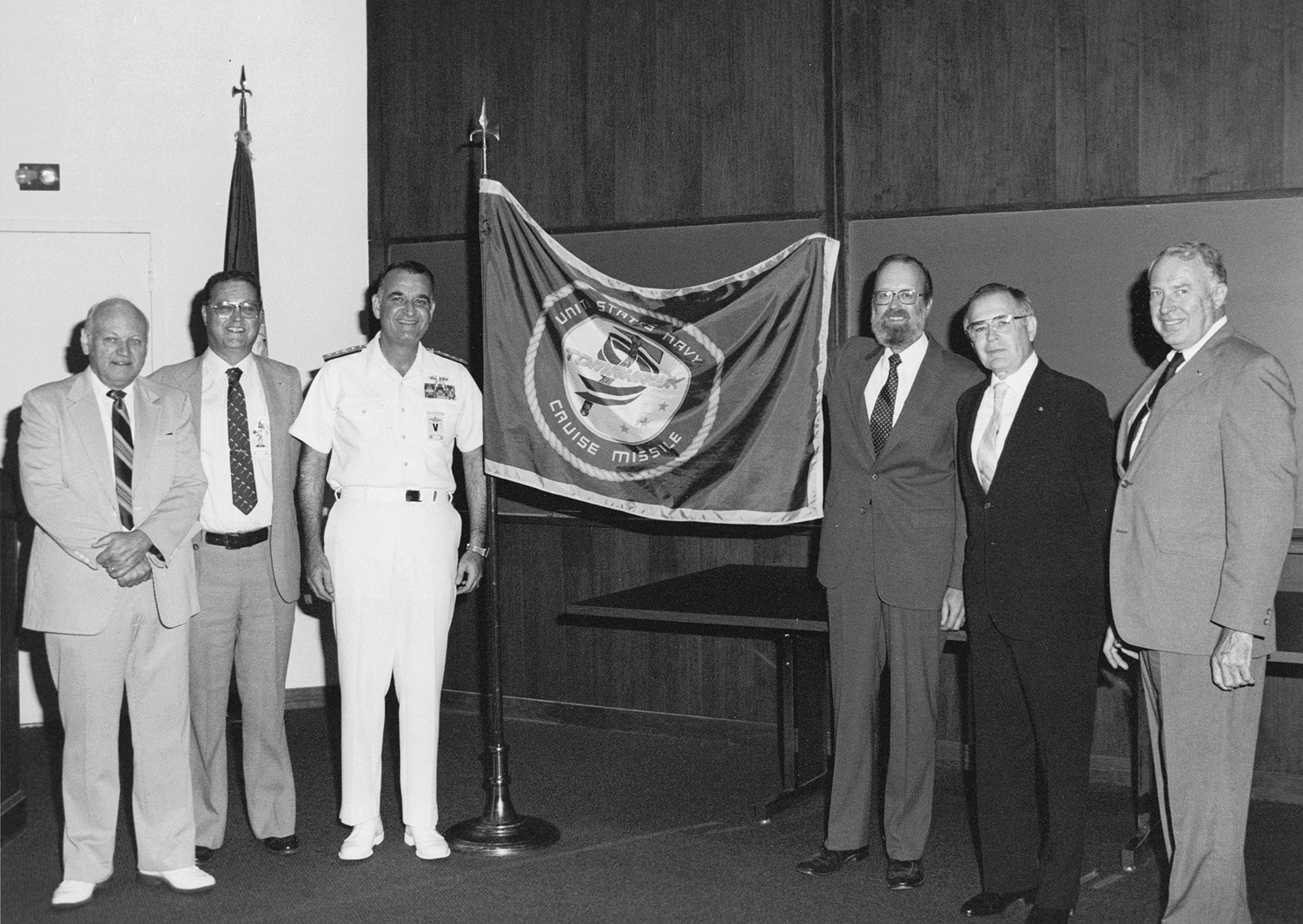
Navy Awards Lab Tomahawk Cruise Missile Flag September 7, 1983
For APL’s many technical contributions to the vital Tomahawk cruise missile program, the Navy awards a Tomahawk Cruise Missile flag to the Lab. In 1982, the Navy designates APL as the technical direction agent for the program to improve production and performance. From left: Alvin Schulz, APL associate director; Marion Oliver, Tomahawk program manager; Rear Adm. S. J. Hostettler; Carl Bostrom, Lab director; Al Eaton, assistant director and supervisor of the Fleet Systems Department; and Tom Sheppard, associate supervisor of Fleet Systems.
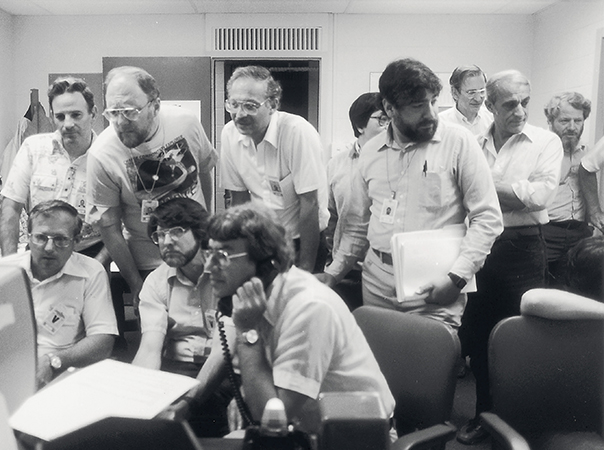
First Artificial Comet Created by AMPTE 1984
The Active Magnetospheric Particle Tracer Explorers (AMPTE) mission creates the first-ever artificial comet by releasing barium clouds into space to study how charged particles from the solar wind travel through Earth’s magnetosphere. The scene is tense at 3 a.m. on September 11, 1984, in the APL Science Data Center as members of the AMPTE team await news of the first ion release by the German Ion Release Module (IRM) flying on AMPTE. NASA and APL team members crowd around a real-time display—on one of the few personal computers in use at APL at the time. Principal Investigator Tom Krimigis speaks on the phone with the IRM team in Germany. APL designed and built the Charge Composition Explorer, NASA’s contribution to the triple-spacecraft mission.
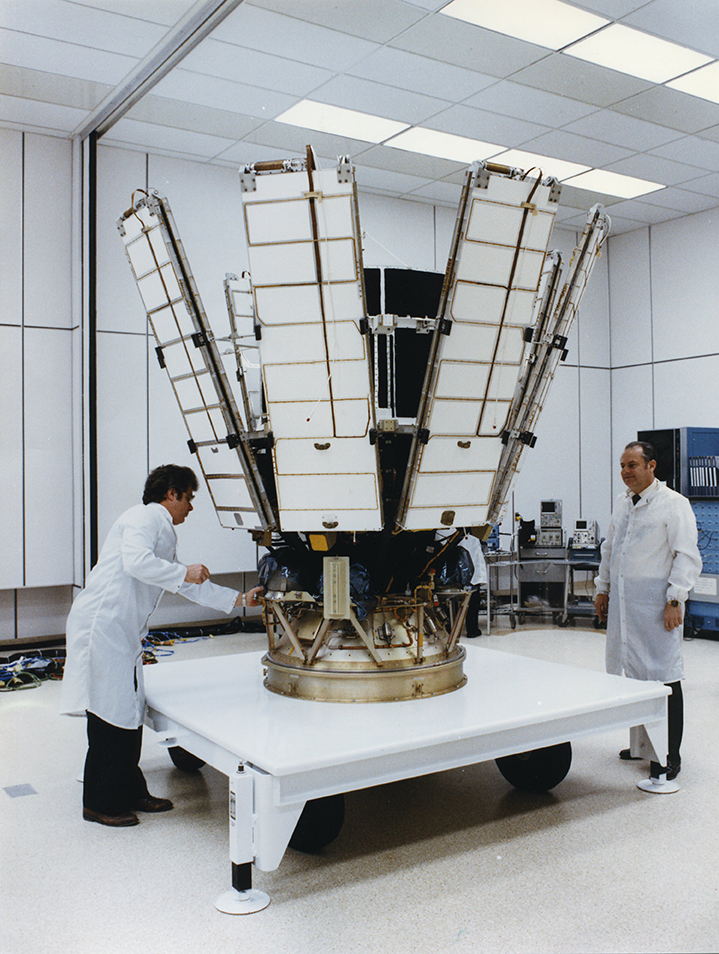
APL’s GEOSAT Radar Altimeter Advances Space Geodesy 1985
The GEOSAT radar altimeter measures the distance from a satellite to the surface of the sea within a remarkable five centimeters.
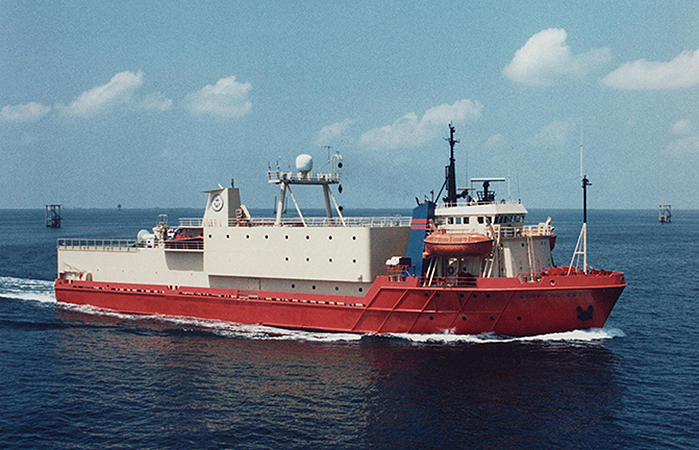
APL Appointed Lead Laboratory for Critical Sea Test 1986
This begins a ten-year active acoustic test program to improve the performance and stealth of submarines.
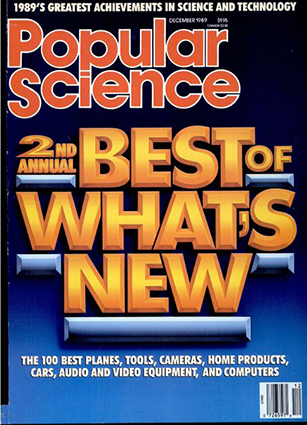
Lab Develops the Disposable, Single-Use Syringe 1986
The nonreusable syringe, developed by researchers at APL and The Johns Hopkins Medical Institutions, is listed in the December 1989 issue of Popular Science magazine as one of the top 100 “Best of What’s New” in products and developments in science and technology for 1989. The device is developed by APL engineer John Wozniak, in collaboration with Kam Leong, of the JHU Biomedical Engineering Department, and Neal Halsey, M.D., of the University’s School of Hygiene and Public Health. The syringe discourages reuse by the action of a patented insert pressed within the syringe barrel.
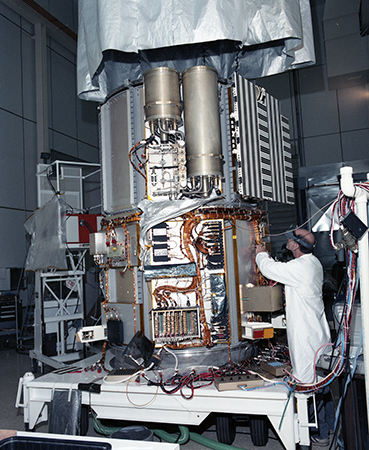
First Space Intercept of a Thrusting Vehicle September 5, 1986
APL alters its design for the experimental interceptor, coming up with a new and radical concept in which a single rocket would launch two spacecraft in orbit. On September 5, 1986, a scant two months over deadline, the experimental Delta 180 carrying the inventive APL-designed-and-built missile sensor package is launched from Cape Canaveral. Less than three hours later, the interceptor scores a direct hit with a test missile. The following year, President Reagan awards a Presidential Commendation to APL for the Delta 180 program.
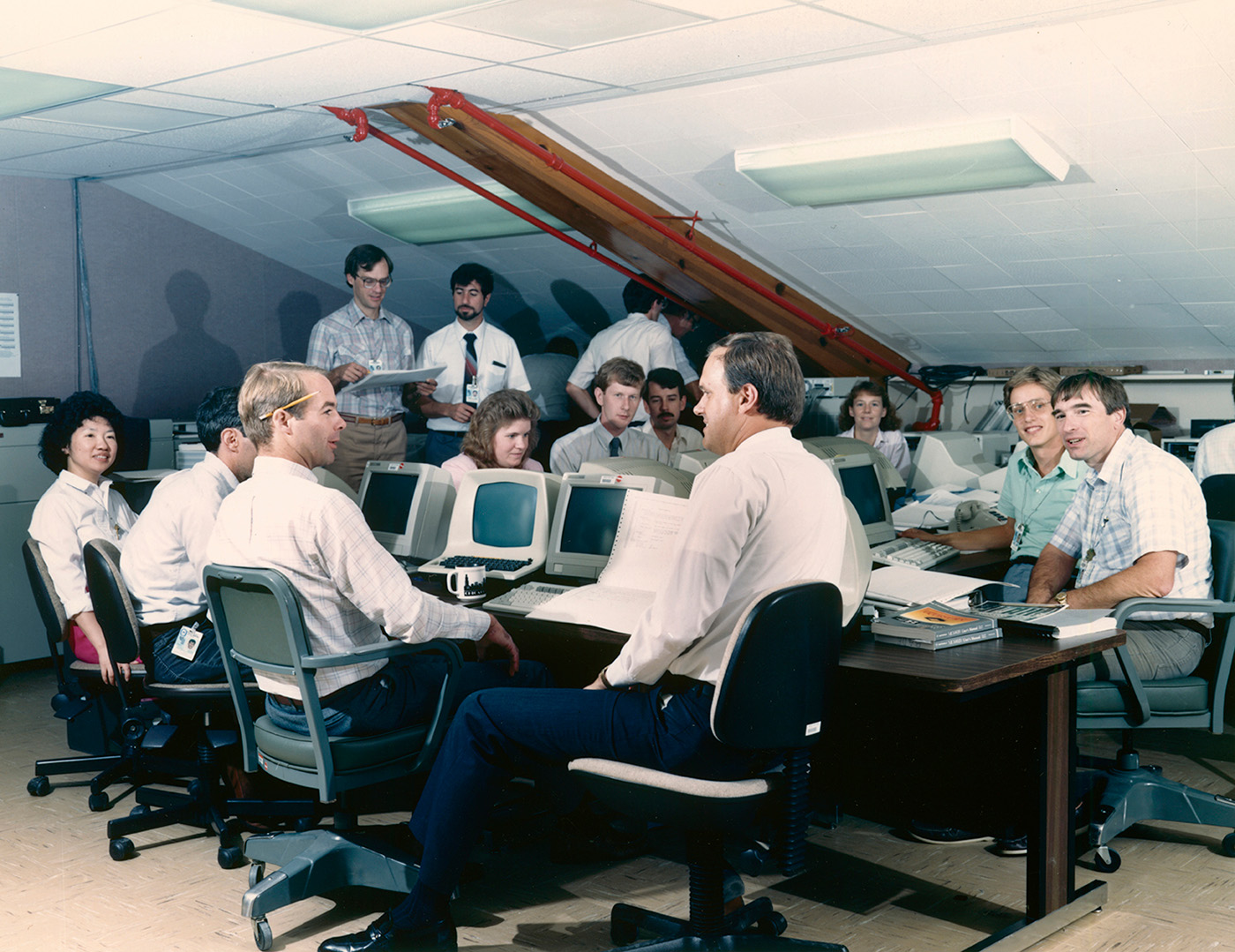
APL Appointed Technical Direction Agent for Cooperative Engagement Capability (CEC) Program 1987
CEC provides ships in a battle group with an identical radar picture of threats in intense hostile electronic jamming environments, allowing ships to fire and guide surface-to-air missiles against targets using data from the radar systems of other ships or aircraft, even when the firing ship’s own radar cannot detect or track the targets.
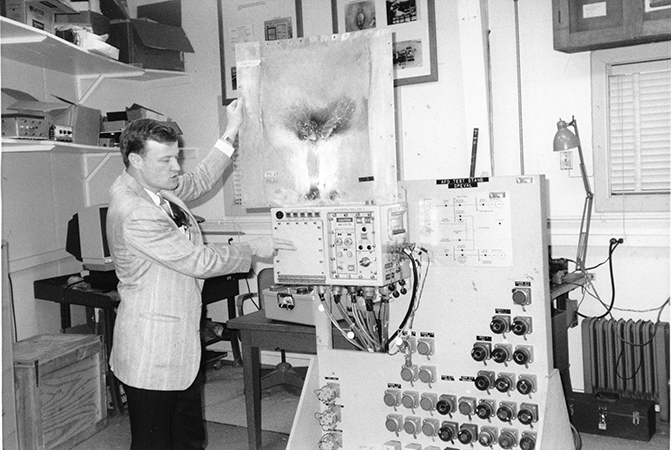
Arc Fault Detector System Developed 1988
Systems engineer Bruce Land holds a scorched submarine shipboard panel that has been damaged by arc faults (short circuits) in the main power switchboard. The panel is resting on the control unit of the APL-designed Arc Fault Detector test stand.
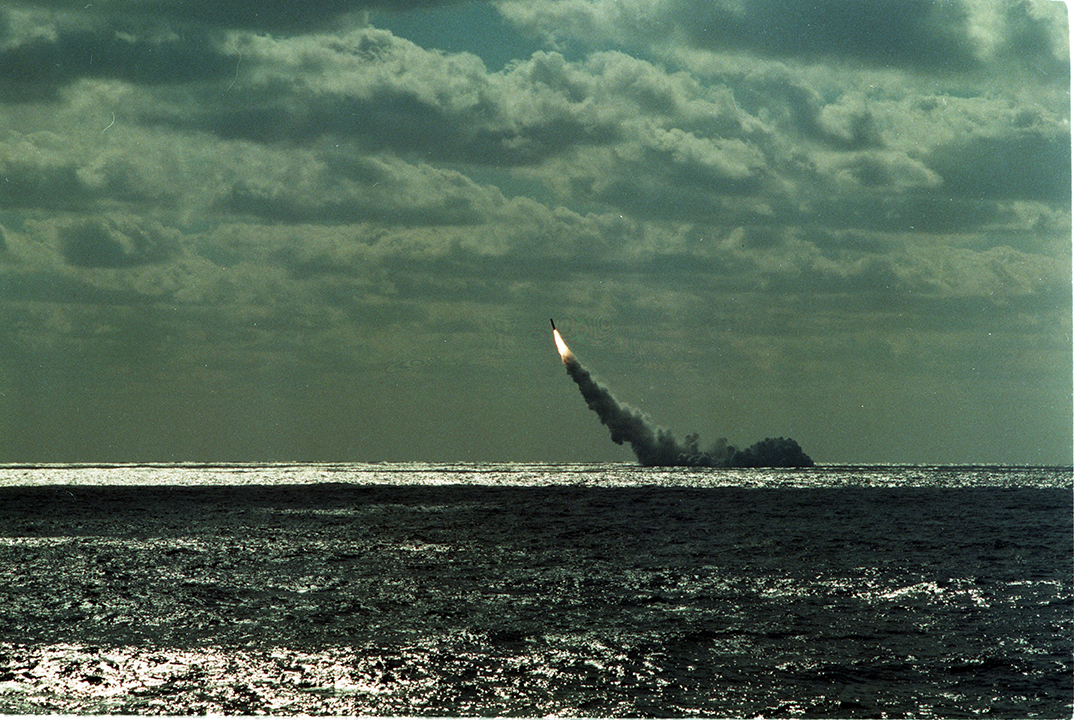
APL Accuracy Evaluations Aid Development of New Trident II (D5) Missile December 4, 1989
The Trident II, the sixth generation of the Navy’s Fleet Ballistic Missile Program, completes a successful series of test launches from both land pads and submerged platforms. The tests are completed two years early and 12 percent below the Navy’s initial budget estimate. The Trident program started in 1956, with APL’s Submarine Technology Department acting as technical advisor to the program from its inception.
1990s
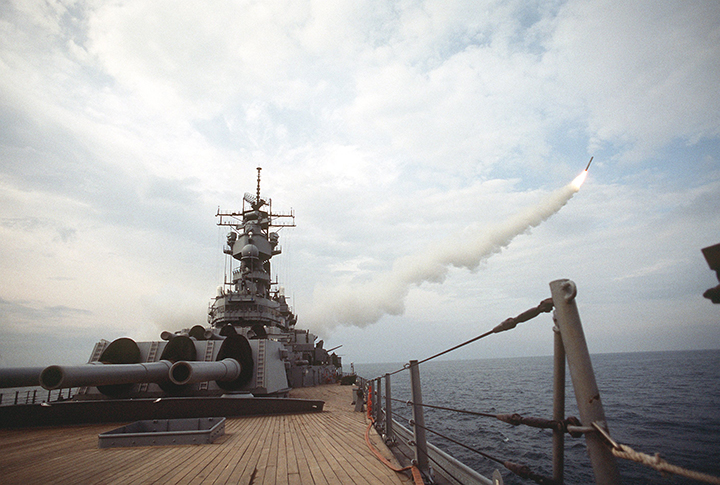
Operation Desert Storm 1991
A Tomahawk land-attack missile (TLAM) is fired toward an Iraqi target from the battleship USS Missouri (BB 63) at the start of Operation Desert Storm in 1991. Accuracy improvements made by APL allowed Tomahawk to precisely strike military targets.
Image Credit: U.S. Navy
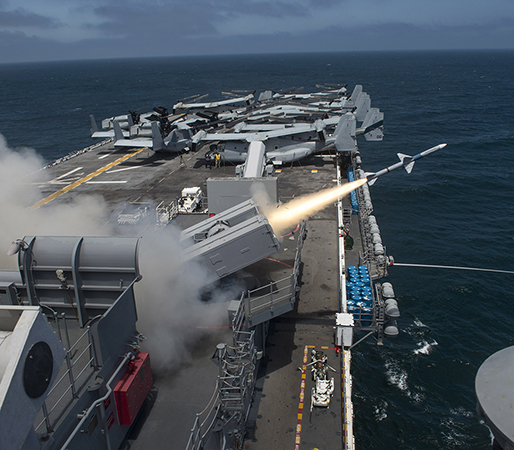
Ship Self-Defense System 1991
The Ship Self-Defense System (SSDS) is devised to provide self-protection and combat system capability to non-Aegis ships of the U.S. Navy. The SSDS begins as a proof-of-concept demonstration for the Quick Response Combat Capability Program in 1991. In June 1993, following land-based testing and shipboard installation and integration aboard USS Whidbey Island (LSD 41), SSDS—automatically integrating seven shipboard sensors and three weapon systems—performs a successful, near-simultaneous, fully automatic and coordinated detect-to-fire live engagement of two target “threats” (a towed decoy unit and a remotely piloted jet drone) using the Rolling Airframe Missile and Phalanx gun system.
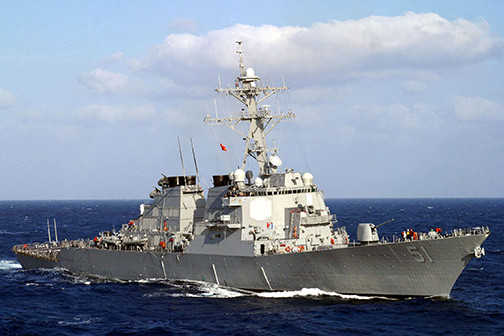
USS Arleigh Burke Enters the Fleet September 16, 1991
USS Arleigh Burke launches at Maine’s Bath Iron Works. The Burke is the first in a line of Burke (DDG 51) Class Aegis destroyers and is named after the World War II hero and former Chief of Naval Operations. Admiral Burke is on hand with his wife Roberta, who christens the ship just before it slips into the waters of the Kennebec River. The Aegis Weapons System aboard Burke is an updated version of the kind first installed on Ticonderoga Class (CG 47) cruisers, of which there are now 12.
Image Credit: U.S. Navy
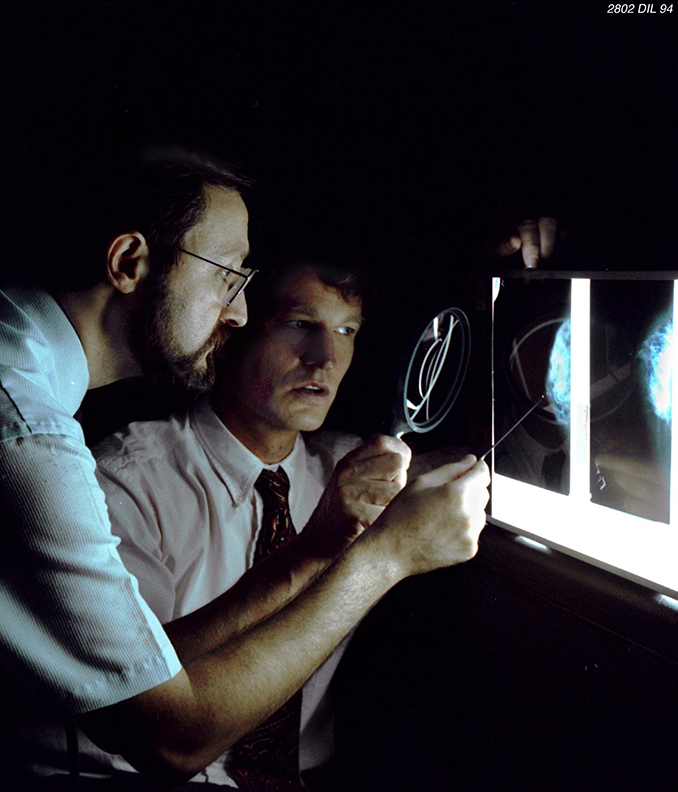
APL and JHU Develop Algorithms for Mammogram Analysis 1992
The algorithm is developed by Dr. Bankman, who heads the APL research team. Physicist William Christens-Barry of the Theoretical Problems Group designs the mammogram digitization process and contributes to algorithm development. The radiology team—headed by Dr. William Brody, director of the Johns Hopkins Medical Institutions Department of Radiology—provides expertise in mammogram acquisition and interpretation.
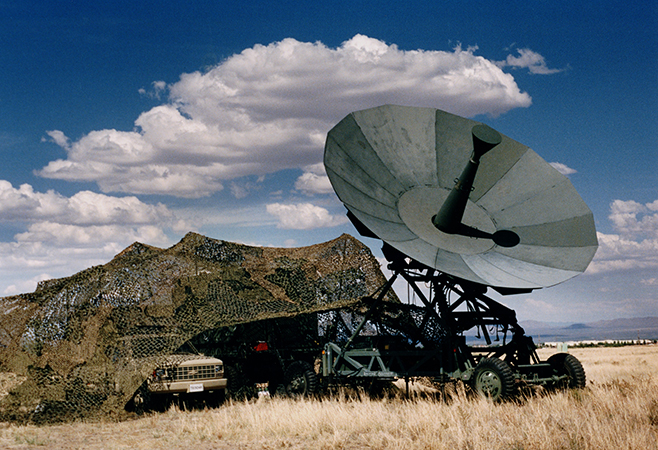
Lab Develops Army Tactical Control System 1993
The system is created for the Defense Satellite Communications System.
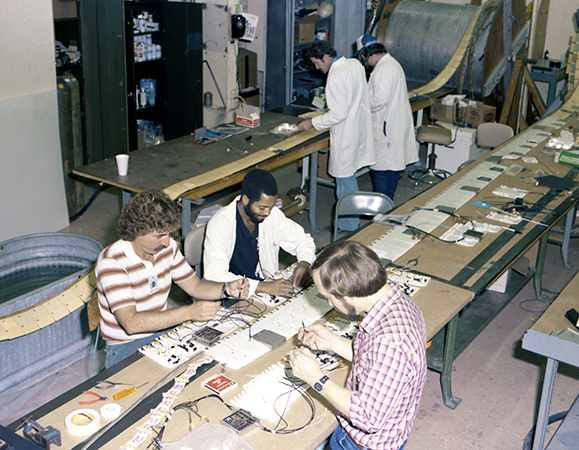
New Towed Array Sonar Technologies 1993
The Lab first became involved with towed array sonar systems and underwater acoustics in 1970. More than two decades later, APL researchers develop new, mobile acoustic sonar arrays that provide better capabilities for submarine surveillance as adversary subs grow more difficult to easily detect. An experimental single array, more than 3.5 nautical miles long, demonstrates effective open-ocean surveillance operations, while a twin-line array is developed to work in coastal and littoral environments. Shown here are Lab staff members working on arrays in the old Building 12 (one of the Butler Buildings) in 1983.

Treasury Department Establishes a Securities Technologies Institute at APL to Protect U.S. Currency 1994
The Securities Technology Institute (STI) is founded at APL in late 1994 by the U.S. Department of the Treasury Bureau of Engraving and Printing (BEP), tasked with developing advanced counterfeit deterrence technologies for future versions of U.S. currency. The program arises in response to advances in reprographic technology and computer graphics (notably color copiers, scanners, and color laser printers), which have greatly increased the tools available to traditional counterfeiters and created a new class of “casual” counterfeiters. These developments increase the threat counterfeiting poses to the integrity of the dollar and to the security of the United States.
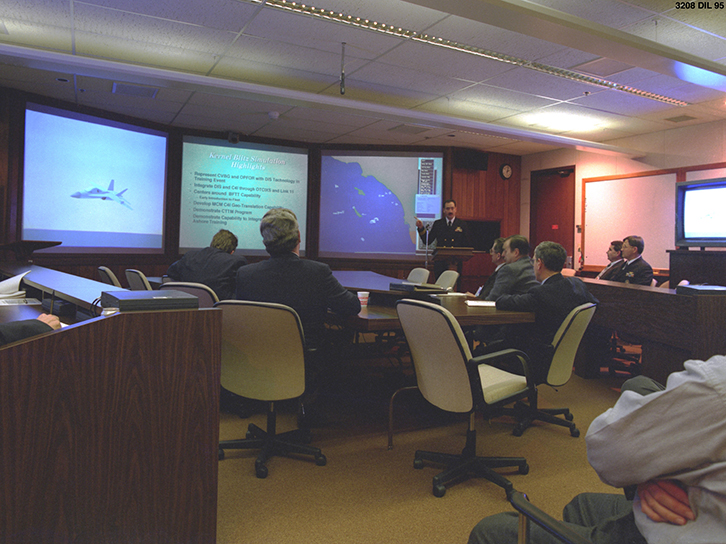
Kernel Blitz Hosted by APL 1995
The major exercise combining live action with a pioneering test of computer technology is held at APL in a virtual operating environment. APL’s Warfare Analysis Laboratory (WAL) serves as the sole East Coast “viewport” for modeling and simulation activities conducted during a major Navy/Marine Corps fleet training exercise. Known as Kernel Blitz 95, the exercise is “the first time the Navy has used modeling and simulation to support a live training exercise.”
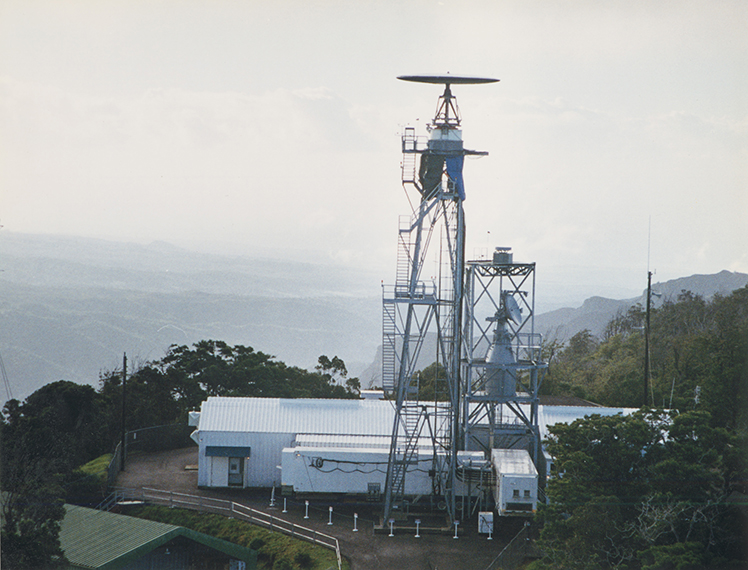
Historic “Mountain Top” Test of Cooperative Engagement Capability January 1996
APL serves as technical co-lead for the Navy for an Advanced Concept Technology Demonstration (ACTD), referred to as Mountain Top, in which the existing air defense systems of the Navy, CEC, and a Defense Advanced Research Projects Agency (DARPA) experimental airborne radar are integrated to detect, track, and engage cruise missiles beyond the radar’s line of sight. The test involves numerous assets, including this radar station in Kokee State Park, Kauai, Hawaii.
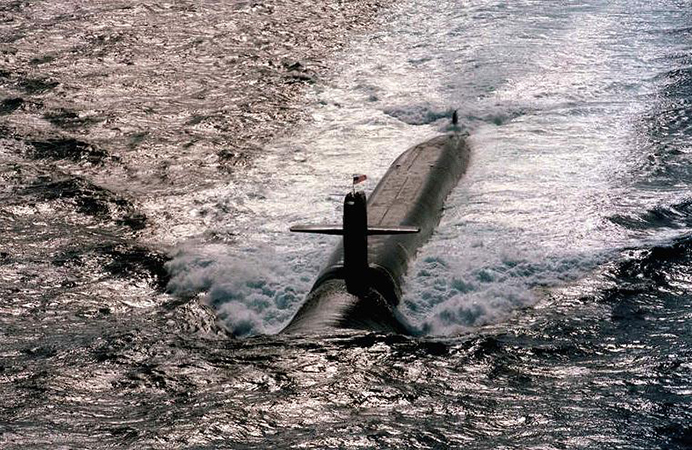
Advancing Sonar and Combat System Capabilities in Submarines 1996
In 1996, APL embarks on a major Navy initiative to incorporate the most advanced sonar and combat system capabilities during new submarine construction and overhaul, as well as backfitting these capabilities into existing platforms. With APL’s partnership, this initiative fundamentally changes the Navy’s acquisition processes for submarine sonars and combat systems into a modern, agile, and innovative enterprise that saves the nation billions of dollars in legacy acquisition costs.

Midcourse Space Experiment 1996
APL engineers stand in front of the massive 5,500-pound Midcourse Space Experiment (MSX), the 56th satellite and largest spacecraft ever built at the Lab. Hyperspectral imaging technology allows MSX to show how to identify, detect, and track ballistic missiles during the midcourse incoming flight phase.
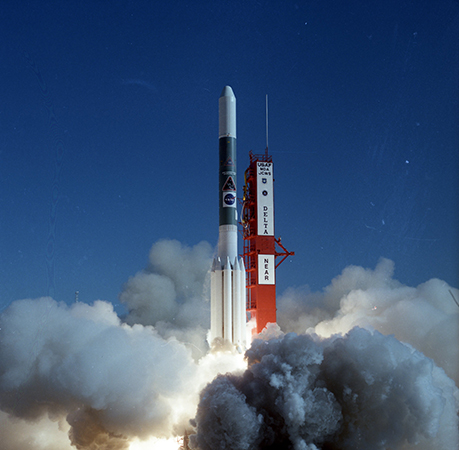
NEAR Sets Off for Eros February 22, 1996
The first launch in NASA’s Discovery Program, the APL-built Near Earth Asteroid Rendezvous (NEAR) spacecraft lifts off from Cape Canaveral Air Force Station. NEAR—which will eventually be renamed NEAR Shoemaker (to honor the late planetary geologist Gene Shoemaker)—becomes the first spacecraft to orbit an asteroid when it reaches 433 Eros on Valentine’s Day 2000.

Standard Missile Intercepts Target January 24, 1997
The Navy successfully intercepts a Theater Ballistic Missile (TBM) threat-representative target on January 24, using a demonstration version of the Standard Missile: Standard Missile 2 Block IVA (SM2 Blk IVA). The SM2 Blk IVA builds on the previous missile design by incorporating an imaging infrared (IR) seeker and an advanced fuze using a forward-looking radio frequency (RF) sensor.
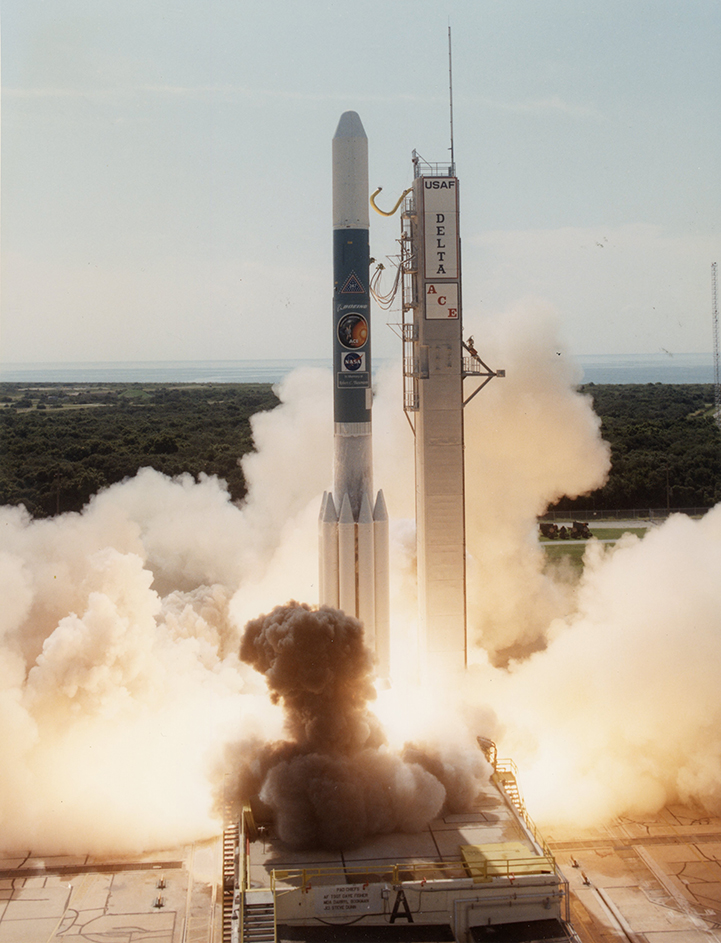
ACE Launches August 25, 1997
After nine years in the making, the ACE spacecraft roars from launchpad 17a at Cape Canaveral Air Station in Florida on August 25, at 10:39 a.m. ACE will study energetic particles coming from the Sun, interplanetary space, and regions beyond, collecting data to help understand the origin and evolution of our solar system.

Temperature Pill Used By Senator and Astronaut John Glenn 1998
APL’s temperature pill with built-in radio transmitter—made commercially available in 1988—is used by Space Shuttle astronauts. As part of his medical experiments, Senator/Astronaut John Glenn swallows a 3/4-inch-long, silicone-coated capsule that contains a tiny telemetry system, a microbattery, and a quartz temperature sensor.
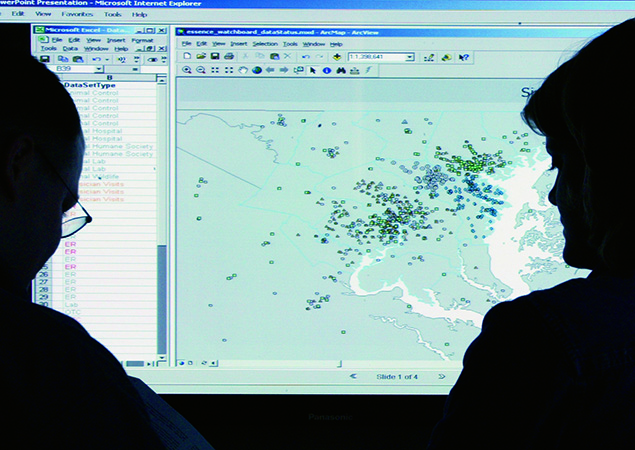
ESSENCE Developed 1998
APL develops the Electronic Surveillance System for the Early Notification of Community-based Epidemics (ESSENCE) disease-surveillance system. The tool allows public health officials to assess a range of data that could indicate a potential danger. Data might include a rise in the number of people making doctor’s appointments, a run on cough medicines at drugstores in particular locales, and more school absences than usual.

APL Collaborates with the Johns Hopkins Medical Institutions and the University of Maryland 1998
The collaborative effort results in the development of miniature mass spectrometers for counterproliferation and biomedical applications.

Natural Gas Vehicle 1999
The Advanced Natural Gas Vehicle (ANGV) is publicly introduced on November 4 at the U.S. Department of Energy (DoE) amid a swirl of television cameras and government and corporate dignitaries. APL developed the concept and then the prototype of the ANGV with major funding from DoE and additional financial support from several gas utilities. The ANGV had three times the range of current natural gas vehicles and ample trunk space, with performance and safety features similar to a gasoline-powered car, while limiting emissions to a level well below that of gasoline-fueled automobiles.
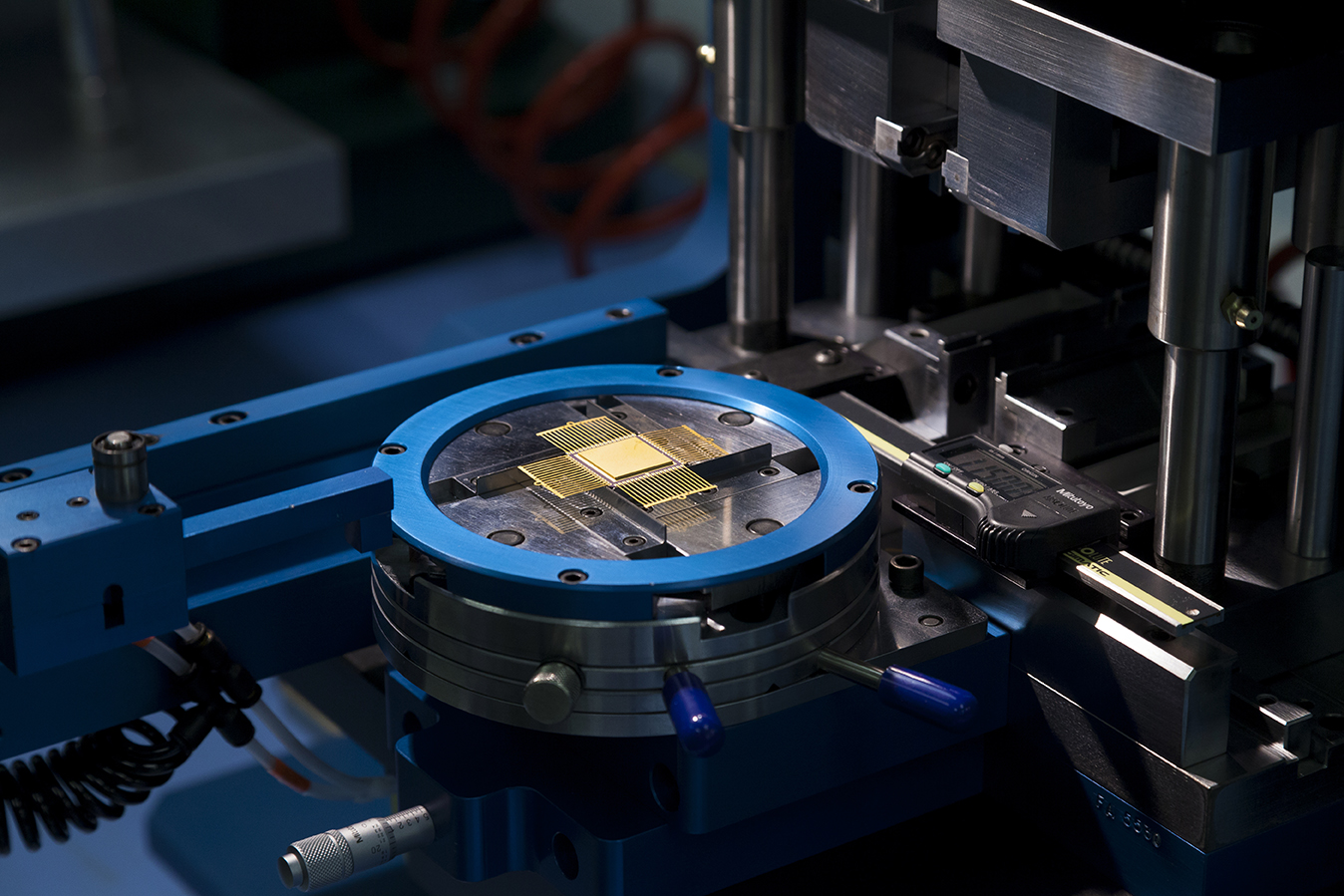
Office of Technology Transfer 1999
Over the years, some of APL’s game-changing innovations resulted in commercial products and technologies, including medical devices and software. In 1999, the Lab establishes the formal path to help move technologies that are suitable for nongovernment uses into the marketplace through the Office of Technology Transfer (OTT).
2000s
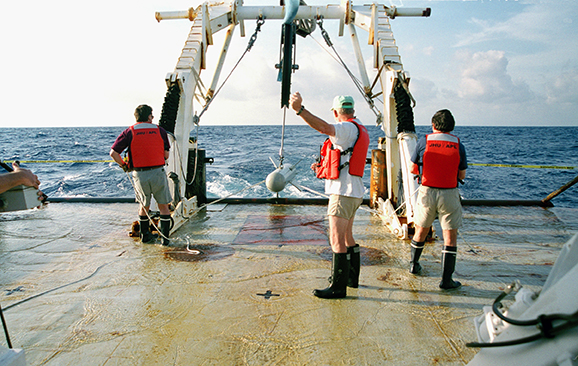
Ardent ET-2 Sea Test April 30, 2000
APL’s expertise in the design, development, testing, and evaluation of passive sonar systems, such as towed sensor arrays, leads to new work to address improvements in data transfer among numerous passive systems to provide submarine crews and commanders with more and better information. APL staff members are shown here during the 2000 Ardent ET-2 sea test of sonar systems at the Navy Atlantic Underwater Test and Evaluation Center, or AUTEC, Range off Andros Island in the Bahamas.
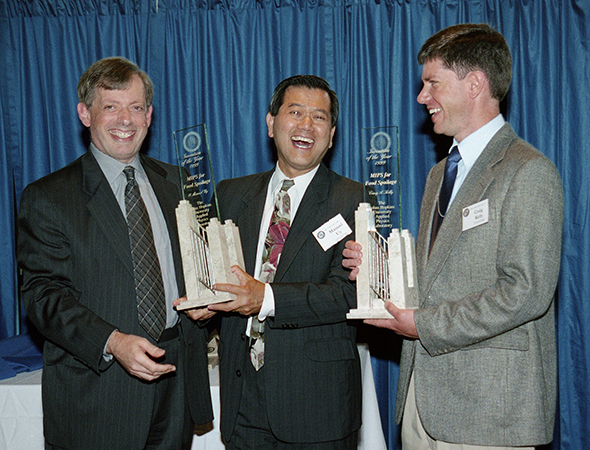
First Invention of the Year Awards Ceremony June 27, 2000
APL’s Office of Technology Transfer hosts its first Invention of the Year awards ceremony to honor 126 researchers and name the Lab’s leading inventions for 1999. The highest award is presented for development of a sensor to detect spoiling meat; Craig Kelly, George Murray, and Manny Uy earn the honor by crafting a process to create a molecularly imprinted polymer sensor that changes color in the presence of bacterial byproducts produced as meat spoils.
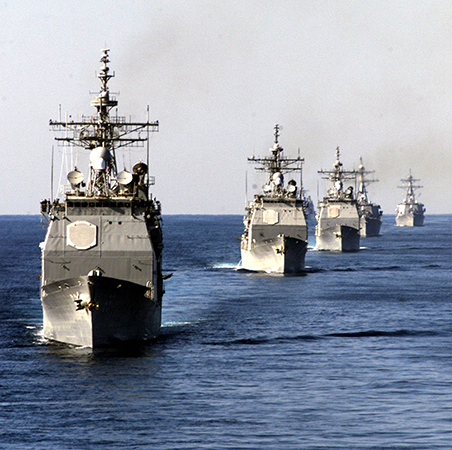
Cooperative Engagement Capability Passes Operational Testing February 2001
A successful test of the Cooperative Engagement Capability (CEC) for production. From left: USS Vicksburg (CG 69), USS Anzio (CG 68), USS Cape St. George (CG 71), USS Hue City (CG 66), USS The Sullivans (DDG 68), and USS Carney (DDG 64), just some of the vessels and aircraft from the large-scale test.
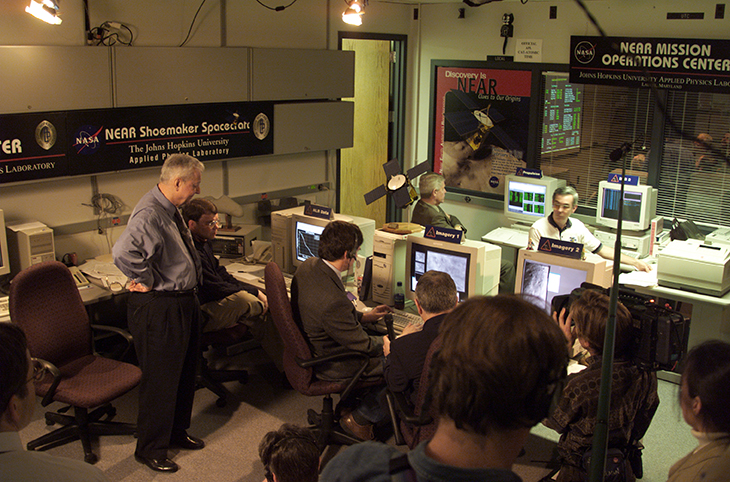
NEAR Lands a Place in the History Books February 12, 2001
After a year in orbit that produces 100,000 images and a range of unprecedented data on a near-Earth asteroid, the Near Earth Asteroid Rendezvous (NEAR) mission completes its extraordinary science phase with a “bonus” soft landing on the surface of asteroid Eros. Guided skillfully by mission operators and touching down at walking speed, the spacecraft continues to transmit data from the asteroid’s surface for two weeks.
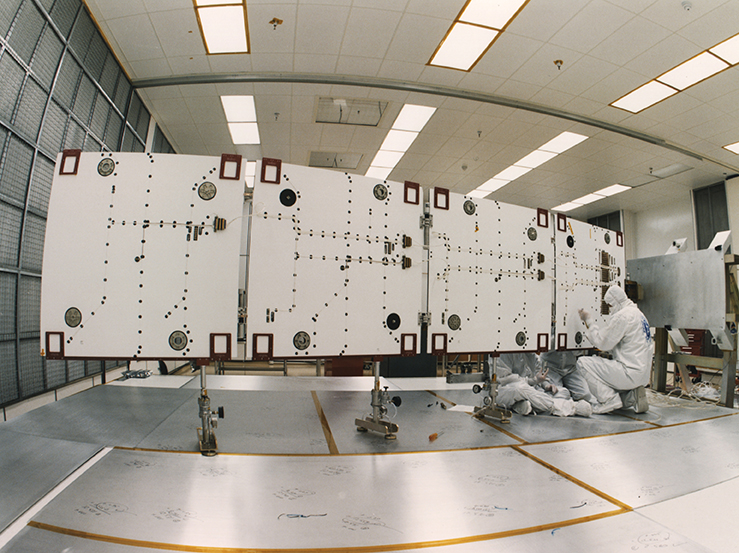
TIMED Spacecraft Launches December 7, 2001
On December 7, the TIMED spacecraft lifts off from Vandenberg Air Force Base in California to explore one of the last frontiers in Earth’s atmosphere. The spacecraft, designed and built by APL, enters orbit 388 miles (625 kilometers) above the Earth approximately two hours after launch. It is the first comprehensive long-duration atmospheric study of the extremely variable forms of energy in the thermosphere.

SATRACK: Improving Missile Accuracy 2002
SATRACK is a missile-borne instrumentation package that collects raw GPS data that can be combined with missile flight test telemetry and detailed error estimation models to assess error contributions to the test missile’s miss distance. Shown here are staff members Raj Patel (left), Sung Lim, and Kim Perkoski in APL’s SATRACK facility in 2002; the facility uses satellite-based test and evaluation data to validate and monitor guidance error modeling for the Trident missile.
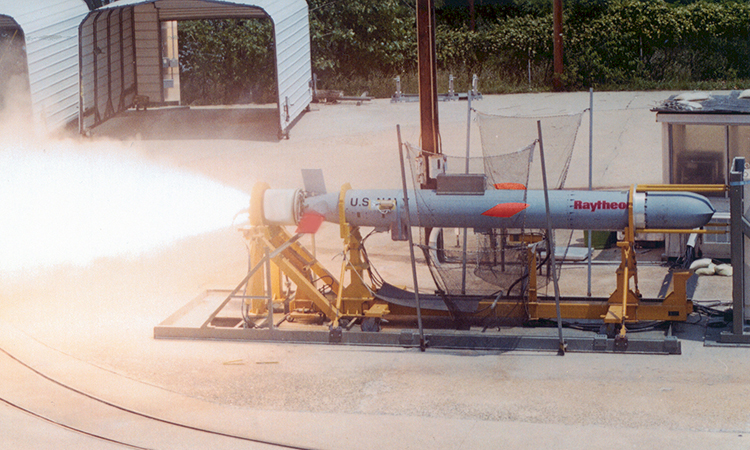
Tactical Tomahawk May 17, 2002
APL serves as technical direction agent for Tactical Tomahawk, the next generation of the U.S. Navy’s Tomahawk cruise missile. Shown here is a successful functional ground test at the Rocket Motor Test Facility located in Indian Head, Maryland.

Lab Named Technical Direction Agent for Aegis BMD November 21, 2002
The Lab is named technical direction agent for the Aegis Ballistic Missile Defense System. Here, a developmental Standard Missile-3, designed to intercept short- to medium-range ballistic missile threats, is launched from the Pearl Harbor-based Aegis cruiser USS Lake Erie.
Combatting IEDs 2003
APL researchers provide detailed studies of the various components used in improvised explosive devices (IEDs) and work to better detect and defeat these explosives, which are the main cause of casualties suffered by U.S. and coalition forces in Iraq and Afghanistan from 2003 to 2008.
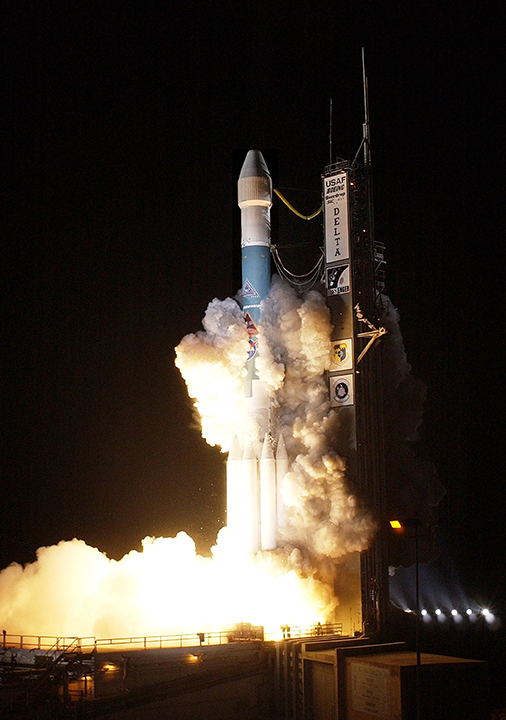
MESSENGER Launches Toward Mercury August 3, 2004
The APL-built Mercury Surface, Space Environment, Geochemistry, and Ranging (MESSENGER) spacecraft lifts off from Cape Canaveral Air Force Station, heading on a nearly seven-year, 4.9-billion-mile trip through the inner solar system to become the first spacecraft to orbit Mercury.
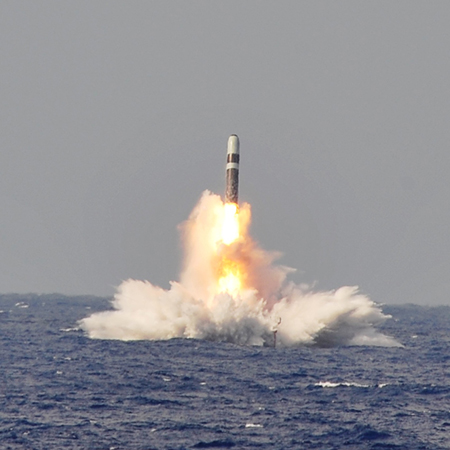
Trident II Evaluation 2005
Lab engineers and scientists perform critical evaluation of the first sea-launched ballistic missile test of the Trident II (D5) weapons system.

Securing the Border 2005
The Secure Border Initiative launched by the Department of Homeland Security is conceived in 2005 as a way to protect the nation’s borders and coastlines from smuggling and illegal immigration. APL is called in to help the U.S. Border Patrol understand the technology integration that would be required and help it articulate its needs to justify the acquisition program decisions. APL experts develop a suite of analytical tools to help agents visualize and analyze their operational capability and performance. This Total Station View displays and quantifies various environments, including tactical and technical elements of each patrol’s operations, strengthening overall border security.
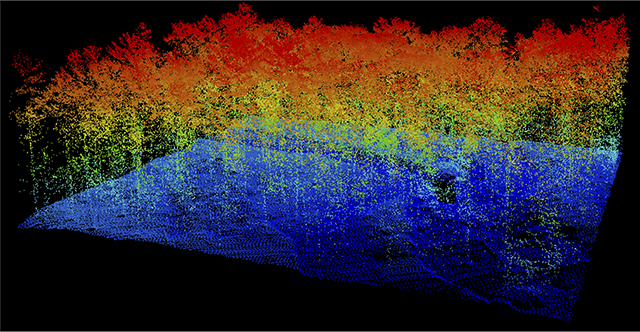
Precision Gimbal LIDAR Pointing Instrument 2005
The precision gimbal LIDAR (light detection and ranging) pointing instrument is able to scan foliated targets multiple times in a single pass, revealing objects that might be hidden beneath the foliage. This capability provides improved geospatial intelligence capabilities to U.S. forces around the world.
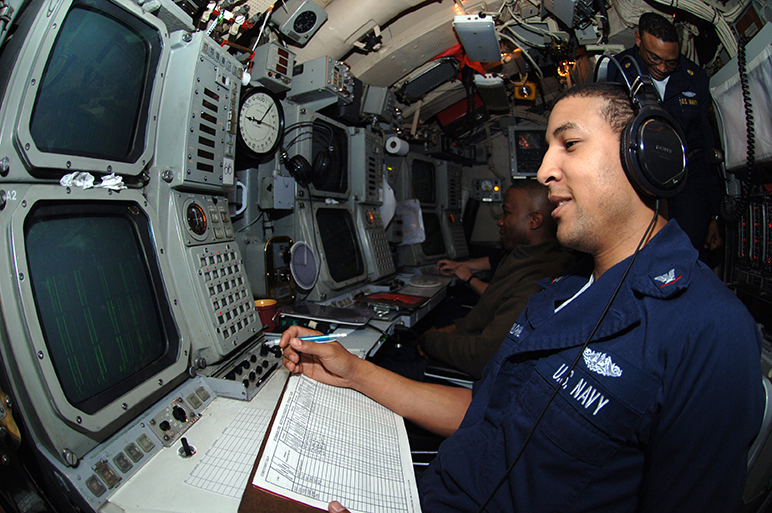
Improving Submarine Detection Technologies 2006
The Lab contributes heavily to an urgent Navy need to improve submarine detection technologies, such as the broadband sonar display shown here in this 2006 photo of the Ohio-class guided-missile submarine USS Florida (SSGN 728).
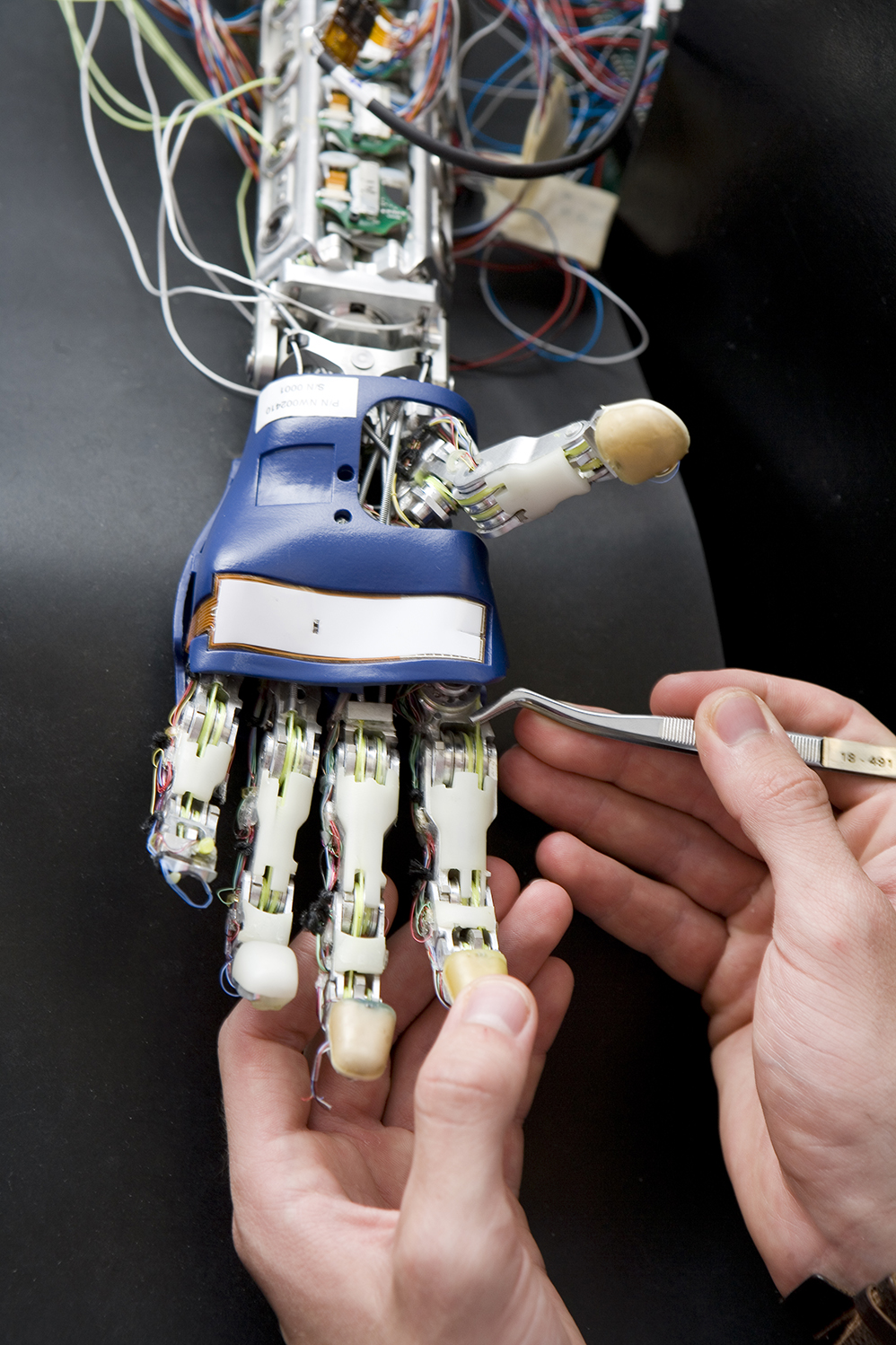
Revolutionizing Prosthetics Team Launches 2006
The Defense Advanced Research Projects Agency (DARPA) asks the Lab to create a state-of-the-art mechanical prosthetic limb with the physiological functions of the human arm that could be operated by a person’s neural control mechanisms. APL assembles a multinational team of neural scientists, clinicians, technology developers, and academic and commercial partners across the United States, Canada, and Europe to pursue a highly aggressive design and engineering approach to developing a next-generation mechanical arm. The objective of the Revolutionizing Prosthetics team, as it is called, is to create a prosthetic device that mimics the natural function, control, appearance, and sensory perception of the human arm.
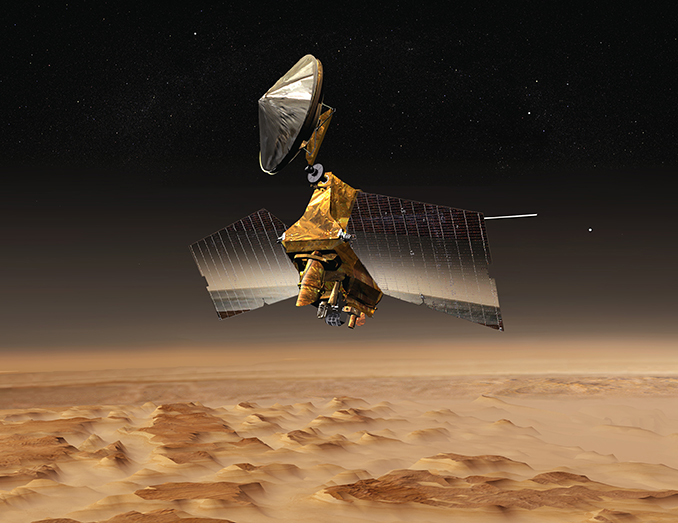
Compact Reconnaissance Imaging Spectrometer for Mars (CRISM) 2006
The CRISM instrument is a large round tube on the bottom of NASA’s Mars Reconnaissance Orbiter. Launched in 2006, it observes the presence of minerals that help prove the existence of water on the surface of Mars.
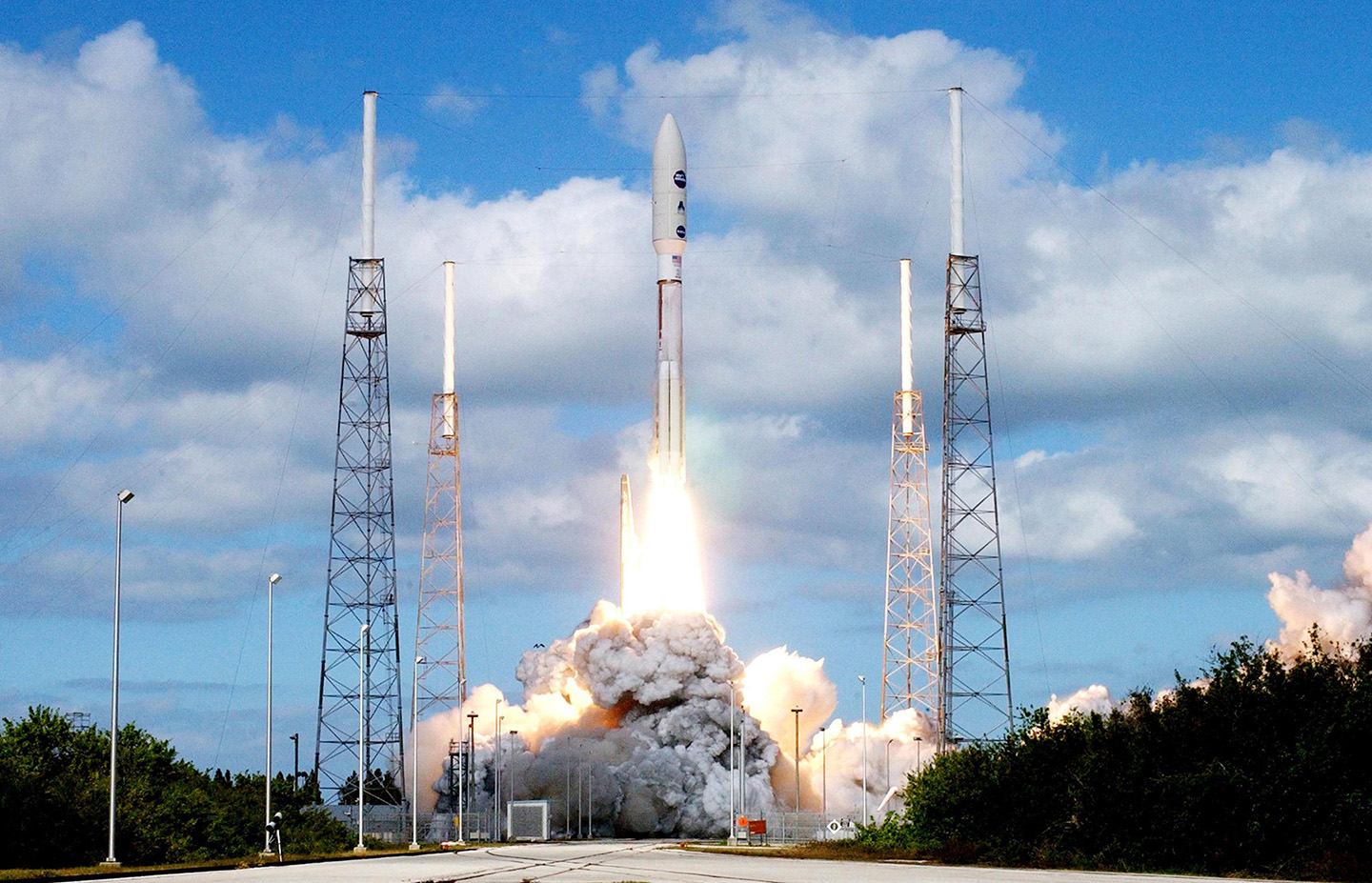
The New Horizons Spacecraft Launches onto a Pluto-Bound Trajectory January 19, 2006
The first mission to distant planet Pluto is underway after the successful launch of NASA’s New Horizons spacecraft from Cape Canaveral Air Force Station, Florida. New Horizons roars into the afternoon sky aboard a powerful Atlas V rocket at 2 p.m. EST. It separates from its solid-fuel kick motor 44 minutes, 53 seconds after launch, and mission controllers at APL, where the spacecraft was designed and built, receive the first radio signals from New Horizons a little more than five minutes later.

Lab Research Creates Stunning Cover Imagery August 2006
The August 2006 issue of National Geographic features a dramatic satellite image on its cover, showing Hurricane Katrina bearing down on the Gulf Coast in August 2005. The image is created by APL, originating from an Atlantic Hurricane website that staff members Ray Sterner and Steve Babin of the National Security Technology Department began more than a decade earlier. The APL Satellite Communications Facility receives data from the National Oceanic and Atmospheric Administration’s (NOAA’s) weather satellites, and Sterner and Babin work with it to produce these powerful images.
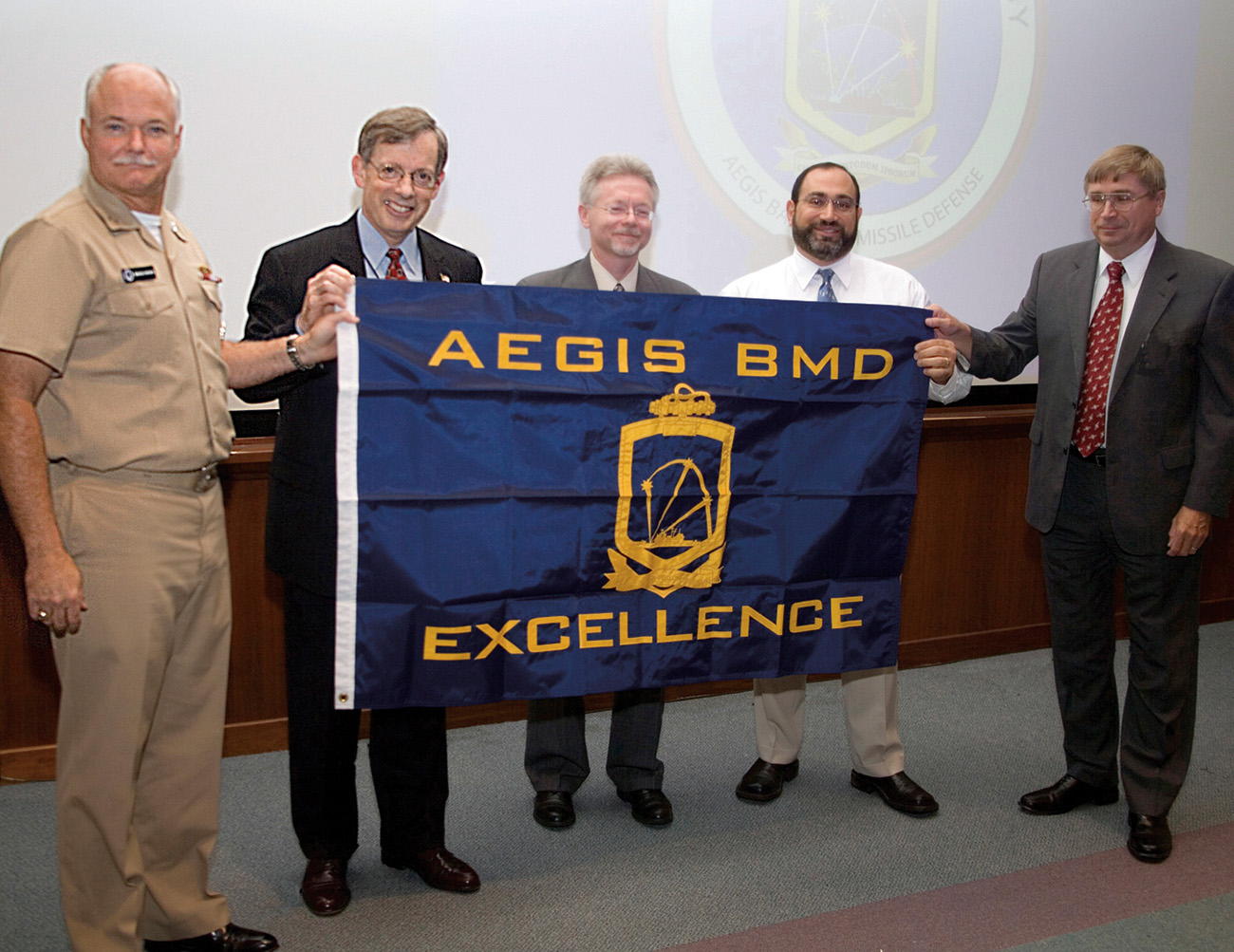
APL Team Awarded Aegis BMD Excellence Flag October 19, 2006
Recognized for its key role in fielding the nation’s first sea-based ballistic missile defense capability, the Lab’s Aegis BMD Test and Evaluation Team becomes the first nongovernment activity to receive the Aegis Ballistic Missile Defense “Excellence” Flag. The APL team is specifically cited for its outstanding service and contributions toward planning and executing flight test missions, and for postflight data analysis. Aegis Ballistic Missile Defense Program Director Rear Adm. Alan Hicks (far left) and Executive Director Larry Rogers (far right) present the flag to APL Director Rich Roca, APL Aegis BMD Program Manager Joel Miller, and Test and Evaluation Project Manager Joe Mulé during a ceremony in Parsons Auditorium.
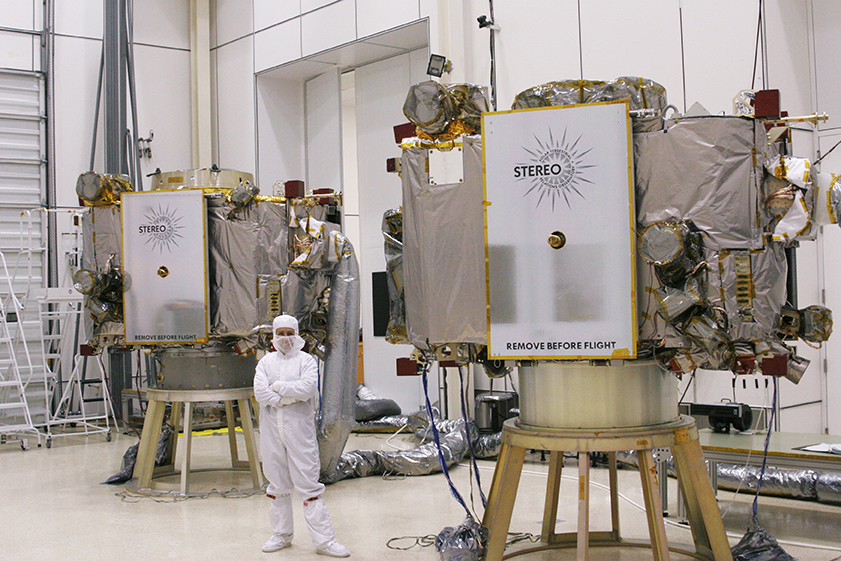
APL-Built STEREO Spacecraft Launches October 26, 2006
The Solar Terrestrial Relations Observatory (STEREO) begins a mission to image the Sun in 3D.

APL Evaluates SSGN Submarines 2007
Ohio-class guided-missile submarines (SSGN) provide the Navy with unprecedented strike and special operation mission capabilities from a stealthy, clandestine platform. Armed with tactical missiles and equipped with superior communications capabilities, these subs can perform a wide variety of missions. The Lab’s expertise in undersea warfare led to its role in evaluating these converted SSBNs for tactical operations.
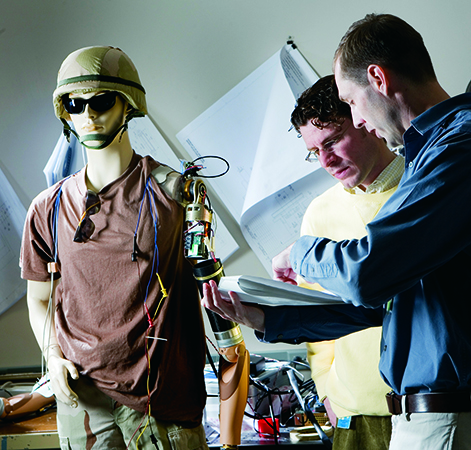
First Prototype of Revolutionizing Prosthetic Arm May 2007
An APL-led international team develops a prototype of the first fully integrated prosthetic arm that can be controlled neurally, provide sensory feedback, and allow for eight degrees of freedom—a level of control far beyond the current state of the art for prosthetic limbs. “Proto 1,” developed as part of the Defense Advanced Research Projects Agency’s (DARPA) Revolutionizing Prosthetics Program, also includes a virtual environment to train patients how to use the limb and to record limb movements during clinical evaluations.

Operation Burnt Frost February 20, 2008
During Operation Burnt Frost, U.S. Navy Petty Officer Second Class Andrew Jackson activates a modified tactical Standard Missile-3 from the Combat Information Center of the Aegis cruiser USS Lake Erie (CG 70), on station in the Pacific Ocean on February 20, 2008. The missile strikes a nonfunctioning U.S. satellite as it travels in space at more than 17,000 miles per hour over the Pacific Ocean. The nation called on APL, with its long experience with Aegis and Standard Missile, to make vital contributions to this critical operation.
Image Credit: U.S. Navy

Lab Leads Team That Develops the First 26-Degree-of-Freedom Prosthetic Arm 2009
Under Defense Advanced Research Projects Agency (DARPA) sponsorship, APL leads a revolution in prosthetic arm capabilities, an effort that is producing prostheses with functional capabilities similar to those of native limbs. A multinational team led by APL reaches the final stage of development, having sufficiently advanced technology development, systems design, and integration in early prototype work.
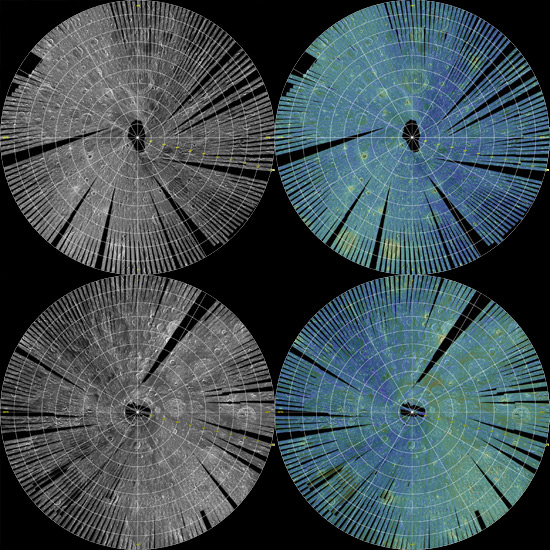
APL’s Mini-RF Instrument Maps the Moon’s Poles 2009
Mini-RF completes its first month of systematic polar mapping. These mosaics cover from 70 degrees to the pole for both the north (top) and south (bottom) polar regions. The left-hand images show radar brightness, while the right-hand color images also show the circular polarization ratio. These data are analyzed to search for ice deposits in the floors of the permanently shadowed craters, as well as to learn more about the impact cratering process on the Moon.
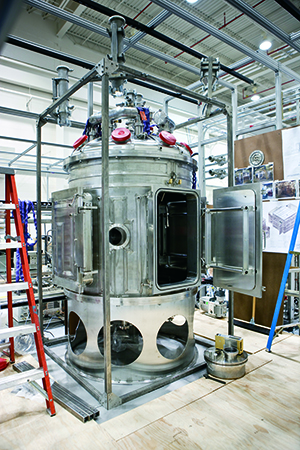
First-of-Its-Kind Dynamic Test Chamber December 2009
APL engineers construct the Dynamic Test Chamber (DTC), a first-of-its-kind device to test the viability of sensors designed to detect chemical warfare agents under realistic battlefield conditions. Lab staff members develop the framework for the techniques and methods in 2007; two years later, the complete chamber is mounted in the high bay of Building 12. Once engineers are certain that it works as intended, it will be disassembled and moved to its permanent home at Dugway Proving Ground in Utah.
2010s
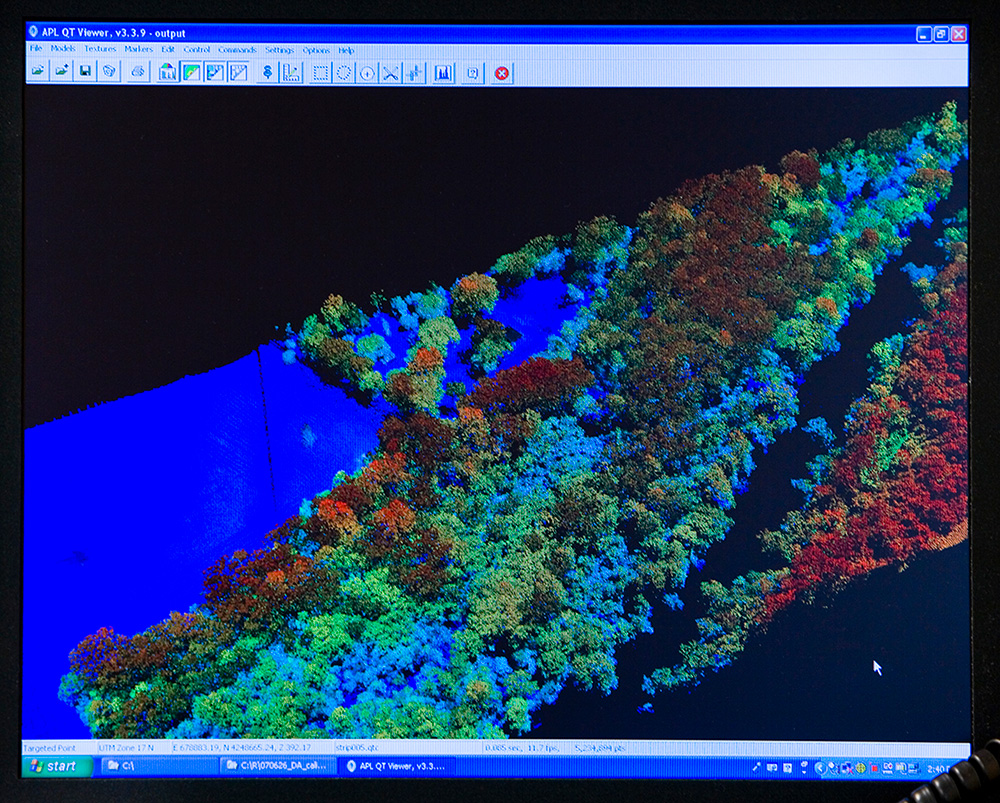
LIDAR Reveals Hidden Information 2010
APL-developed foliage penetrating light detection and ranging (LIDAR) technology, which uses a laser and sophisticated algorithms to remotely sense and reveal objects hidden in foliage, is made operational.
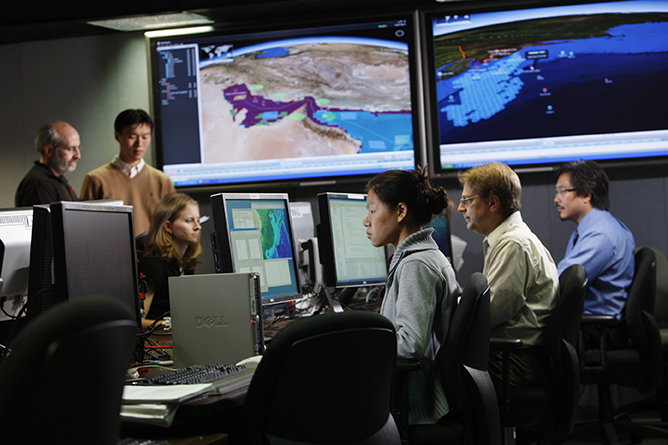
Naval Integrated Fire Control - Counter Air (NIFC-CA) 2010
APL engineers (from left) Jon Lindberg, Wirak Lim, Emily Hebeler, Jin Zhang, Bryan Gorman, and Nigel Tzeng test a prototype element of the Lab-developed NIFC-CA capability known as the integrated multiwarfare planning tool.

Persistent Ground Surveillance System Deploys Overseas 2011
The Persistent Ground Surveillance System (PGSS) program is initiated to provide a lower-cost, persistent intelligence, surveillance, and reconnaissance (ISR) solution to protect forward operating bases in Afghanistan. Lowering the cost is achieved in several ways, including government management, competition, and an APL-designed common modular gondola system.

Director Ralph Semmel Leads First All-Hands 2011
During his first All-Hands Strategy Update as director in 2011, Ralph Semmel outlines organizational changes to better serve sponsors and foster innovation.

TacSat-4 Launched from Kodiak Island September 27, 2011
Tactical Satellite-4 (TacSat-4), launched September 27 aboard a Minotaur IV rocket from Kodiak Launch Complex, Alaska, expands satellite communications for soldiers using handheld radios and delivers improved communications to the battlefield and problematic mountain regions. A small, low-cost spacecraft, TacSat-4 will allow troops to use standard military radios without stopping to point antennas toward a satellite.

TANG: Engaging Digital Natives November 2011
Tactical Advancements for the Next Generation (TANG) begins with an important challenge—to determine how to make U.S. submarine systems more intuitive. A small team at APL partners with government sponsors to create and lead an innovative, organizationally diverse team that brings together industry-leading technologists, commercial design practitioners, key stakeholders, and junior sailors such as Navy Lieutenant Tyler Turpin (left). The team uses a radical human-centered approach to deliver user-inspired concepts to the fleet—and deliver them fast.
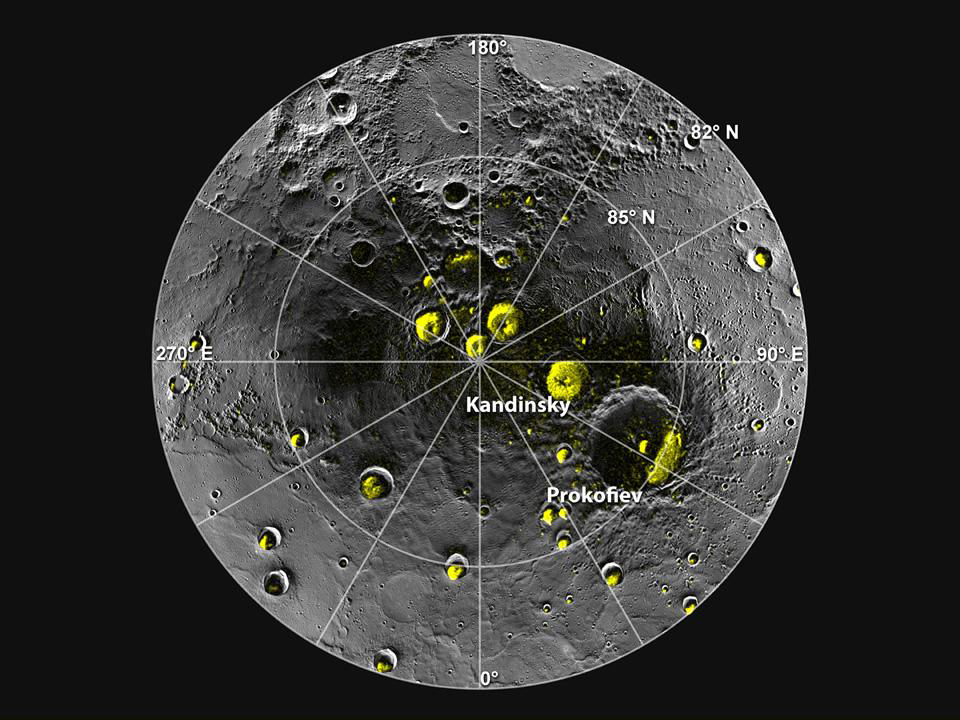
MESSENGER Finds New Evidence for Water Ice at Mercury’s Poles 2012
New observations by the MESSENGER spacecraft provide compelling support for the long-held hypothesis that Mercury harbors abundant water ice.
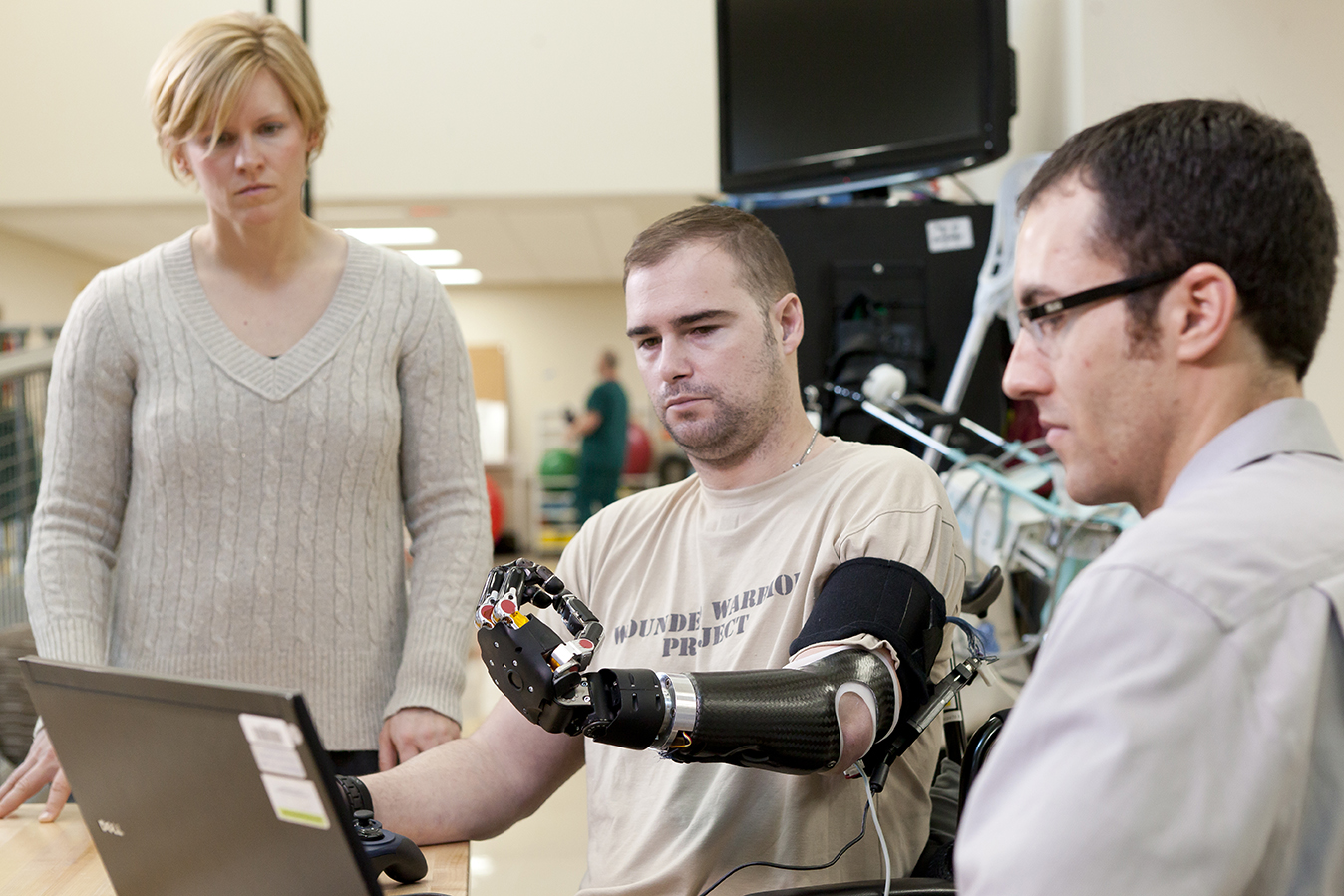
Modular Prosthetic Limb Advances 2012
APL engineers Courtney Moran (left) and Bobby Armiger (far right) work with Technical Sergeant Joe Delauriers as he controls the Modular Prosthetic Limb (MPL) at Walter Reed National Medical Center. Delauriers lost both legs and his left arm in a September 2011 IED explosion in Afghanistan.
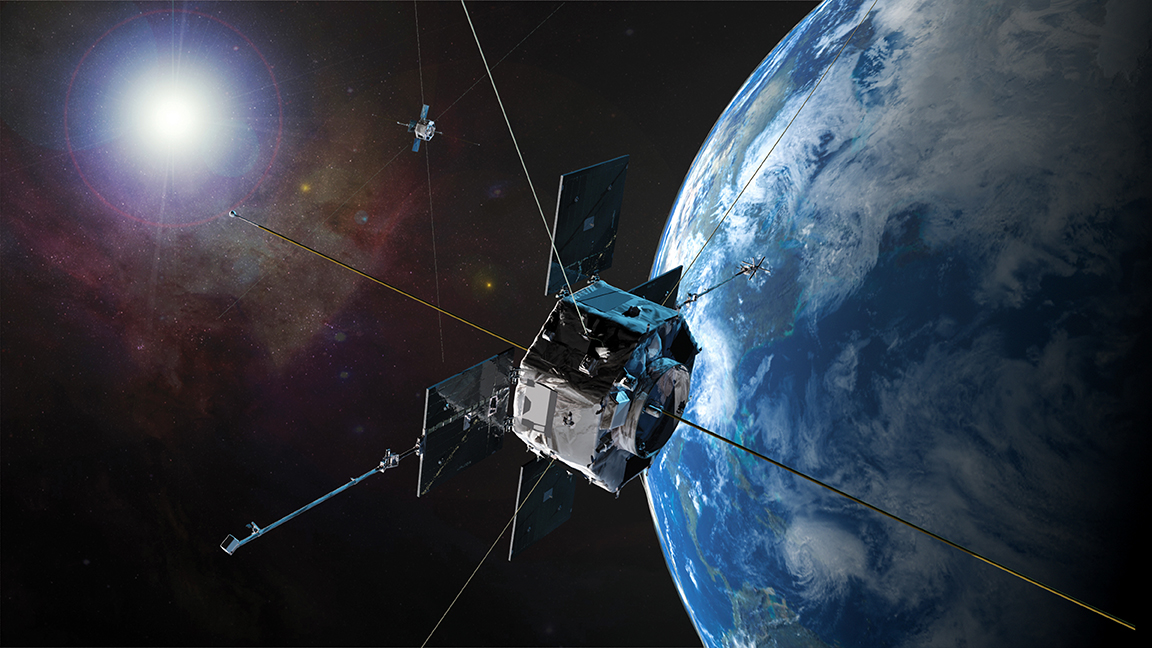
Van Allen Probes Launched 2012
The first twin-spacecraft mission designed to explore our planet’s radiation belts launches into the predawn skies at 4:05 a.m. EDT from Cape Canaveral Air Force Station, Florida. Research from these twin probes, named for renowned scientist (and former APLer) James Van Allen, provides useful scientific data from the harsh radiation belt environment where space weather activity occurs and many spacecraft operate.
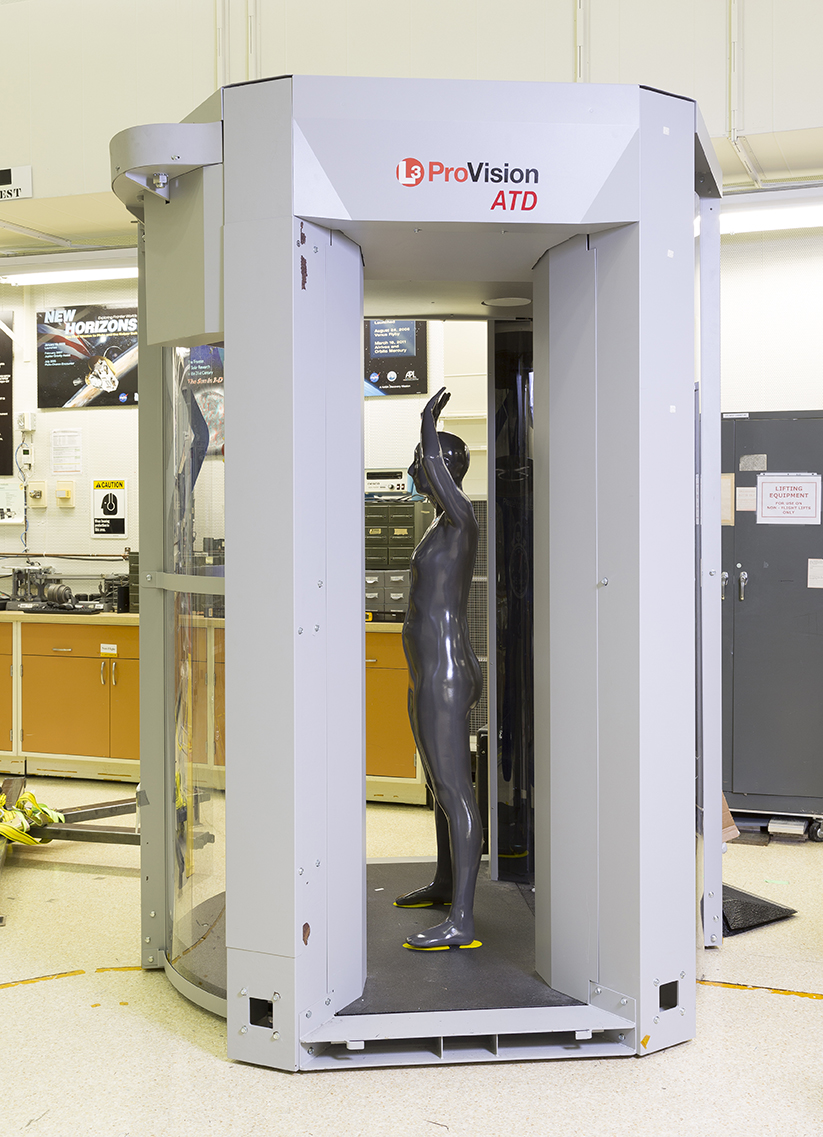
Enhancing Airport Security with Full-Body X-Ray Scanners October 2012
In response to the need for heightened airport security in the post-9/11 world, APL scientists and engineers develop testing methods and analyses for the Transportation Security Administration (TSA) that are used in most airport full-body X-ray scanners. APL also designs and produces (using additive manufacturing) the body models used in TSA screener training.
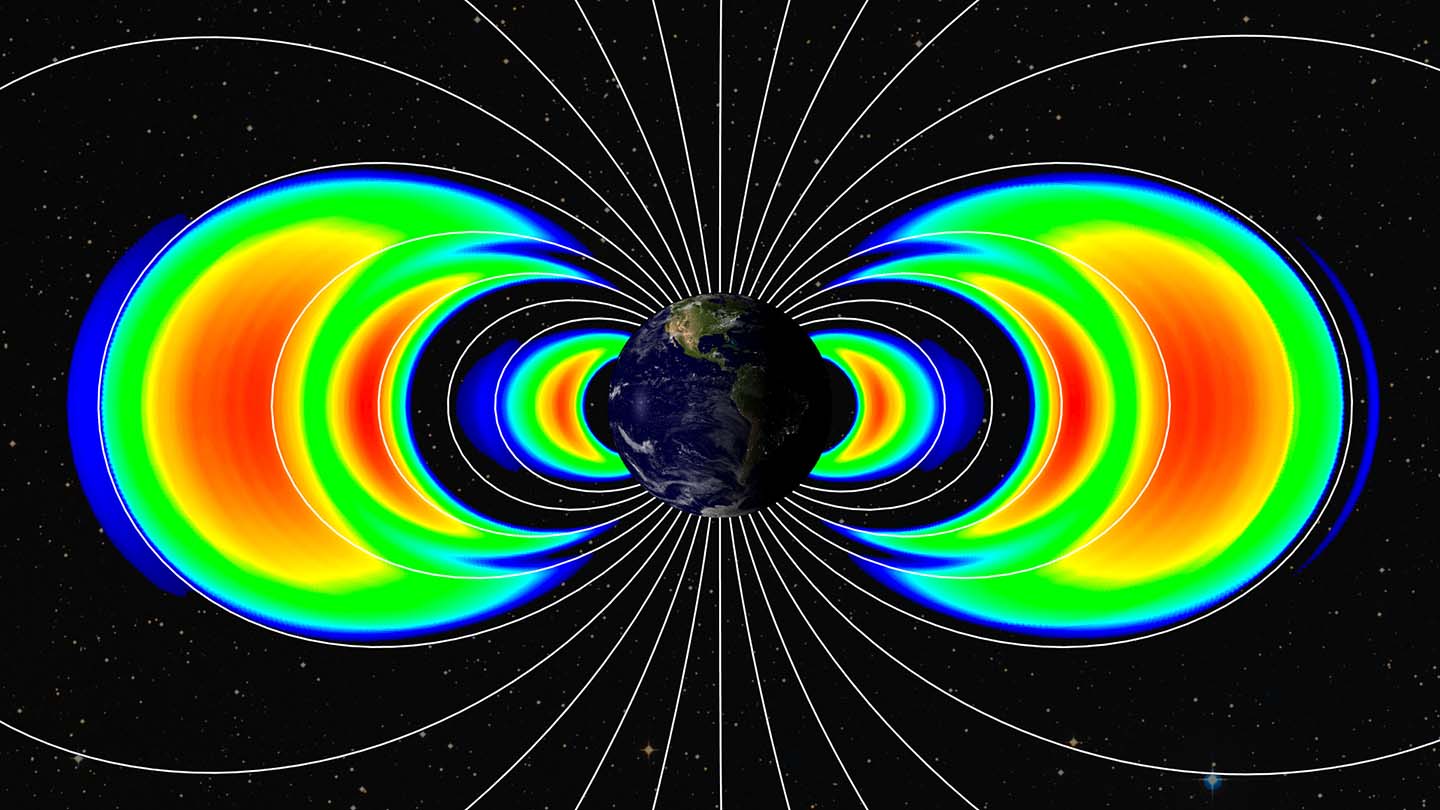
New Radiation Belt Around Earth Revealed 2013
NASA’s Van Allen Probes mission discovers a previously unknown third radiation belt around Earth. Particle detection instruments aboard the twin Van Allen Probes are built and managed for NASA by APL.

APL Method Predicts Disease Outbreaks 2013
A team of scientists from APL develops a novel method to accurately predict dengue fever outbreaks several weeks before they occur. The new method, known as PRedicting Infectious Disease Scalable Model (PRISM), extracts relationships among clinical, meteorological, climatic, and sociopolitical data in Peru and in the Philippines.
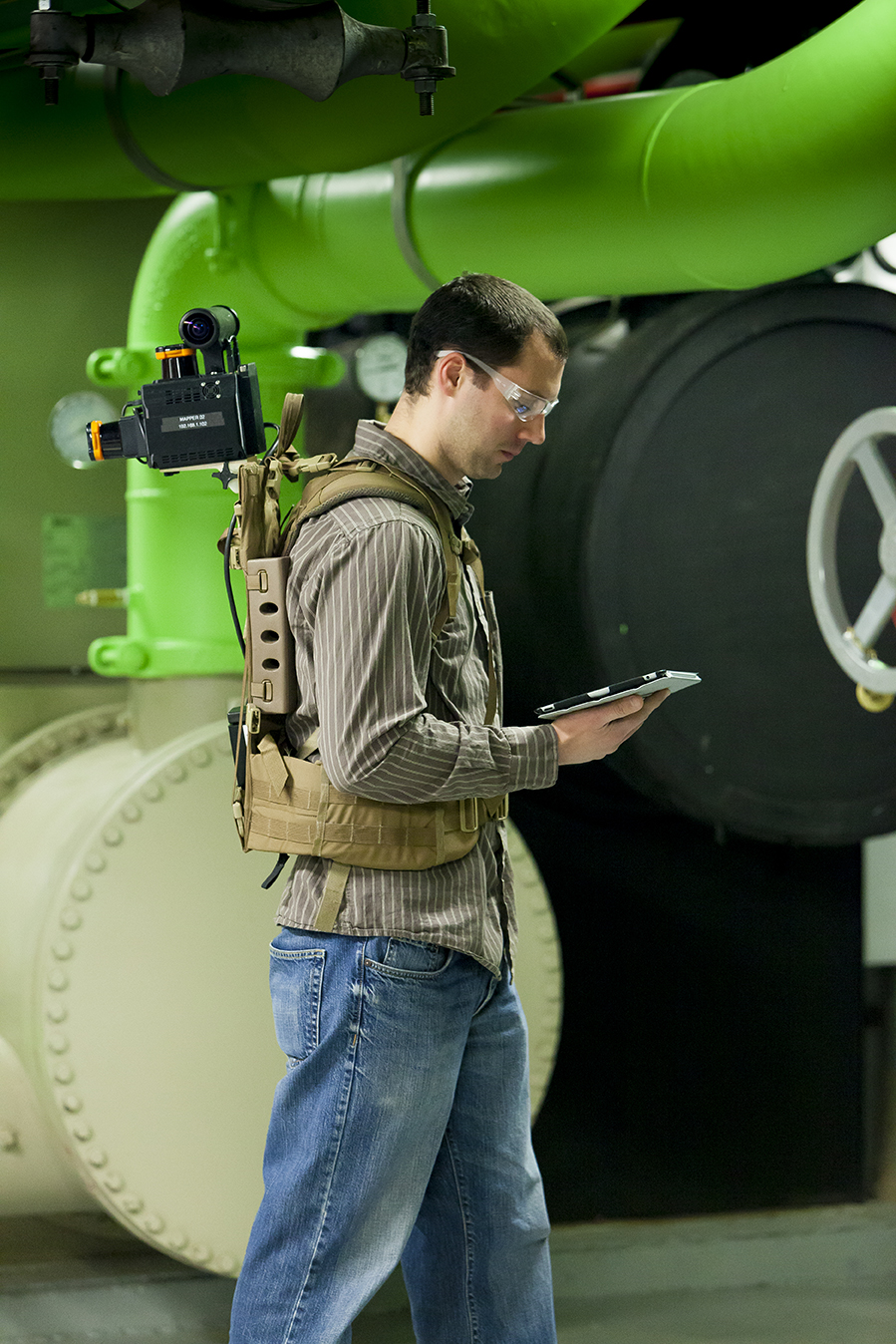
New Backpack Mapping System Works in GPS-Denied Areas 2013
Engineers at APL develop a portable device—Enhanced Mapping and Positioning System (EMAPS)—that can be used to automatically create annotated maps and scans in tight spaces where GPS is not readily available, such as in underground areas and on ships, as well as in outdoor areas.
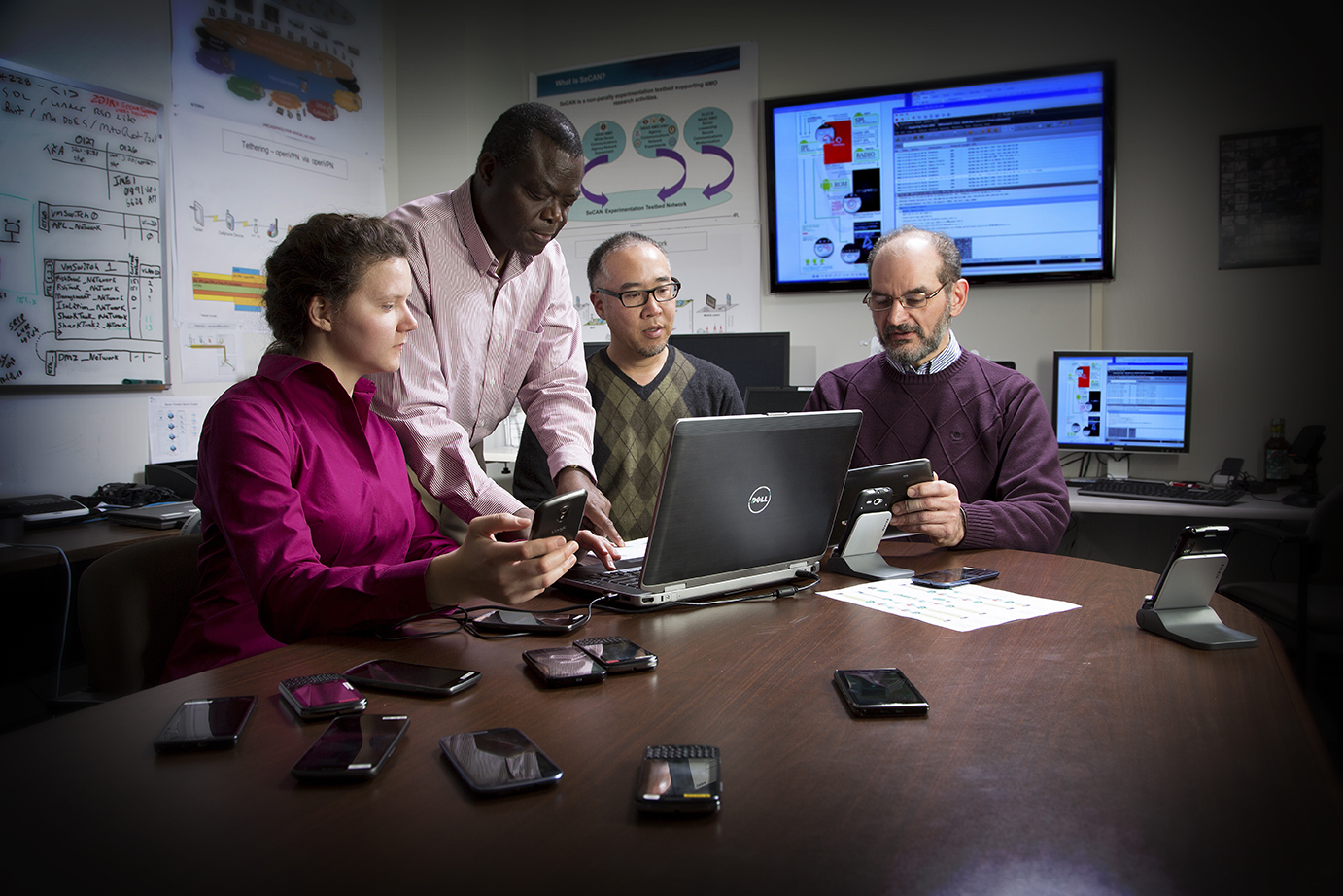
Improving High-Level Secure Communications 2013
Engineers (from left) Esther Showalter, Akinwale Akinpelu, Warren Kim, and Tony DeSimone in the APL Secure Communications Assessment Network (SeCAN) Laboratory evaluate technology to support nuclear command, control, and communications decision-making. This provides senior government officials with the capability to communicate securely during national emergencies.
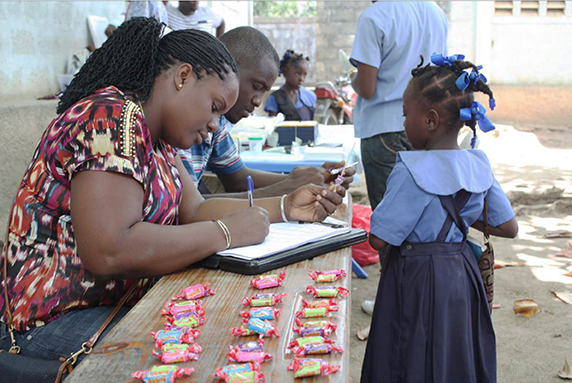
APL Releases Disease Surveillance Software 2013
APL and the Armed Forces Health Surveillance Center (AFHSC) release the Suite for Automated Global Electronic bioSurveillance (SAGES), a collection of flexible, open-source software products developed for electronic disease surveillance in all settings. Public health officials around the world, especially those with limited capabilities or resources to meet World Health Organization International Health Regulations requirements for outbreak surveillance and reporting, can use a SAGES system that is both effective and secure.
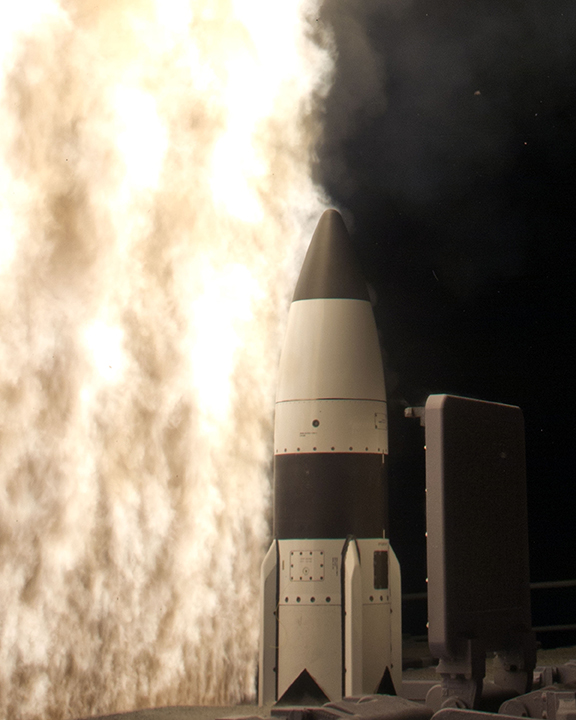
Critical Integrated BMD Test February 13, 2013
Engineers from APL play a significant role in the successful test of a system critical to protecting the United States against growing regional ballistic missile threats. The APL team leads system-level analysis and evaluation for Flight Test Standard Missile-20 (FTM-20), which incorporated space-based sensors; Command and Control, Battle Management, and Communications (C2BMC) elements; and the Aegis Ballistic Missile Defense Weapon System. The integrated test culminates in a live-fire Aegis BMD/Standard Missile-3 Block IA guided missile intercept of a medium-range ballistic missile target using Space Tracking and Surveillance System (STSS) tracking data. The target is launched from the Pacific Missile Range Facility on the Hawaiian island of Kauai.
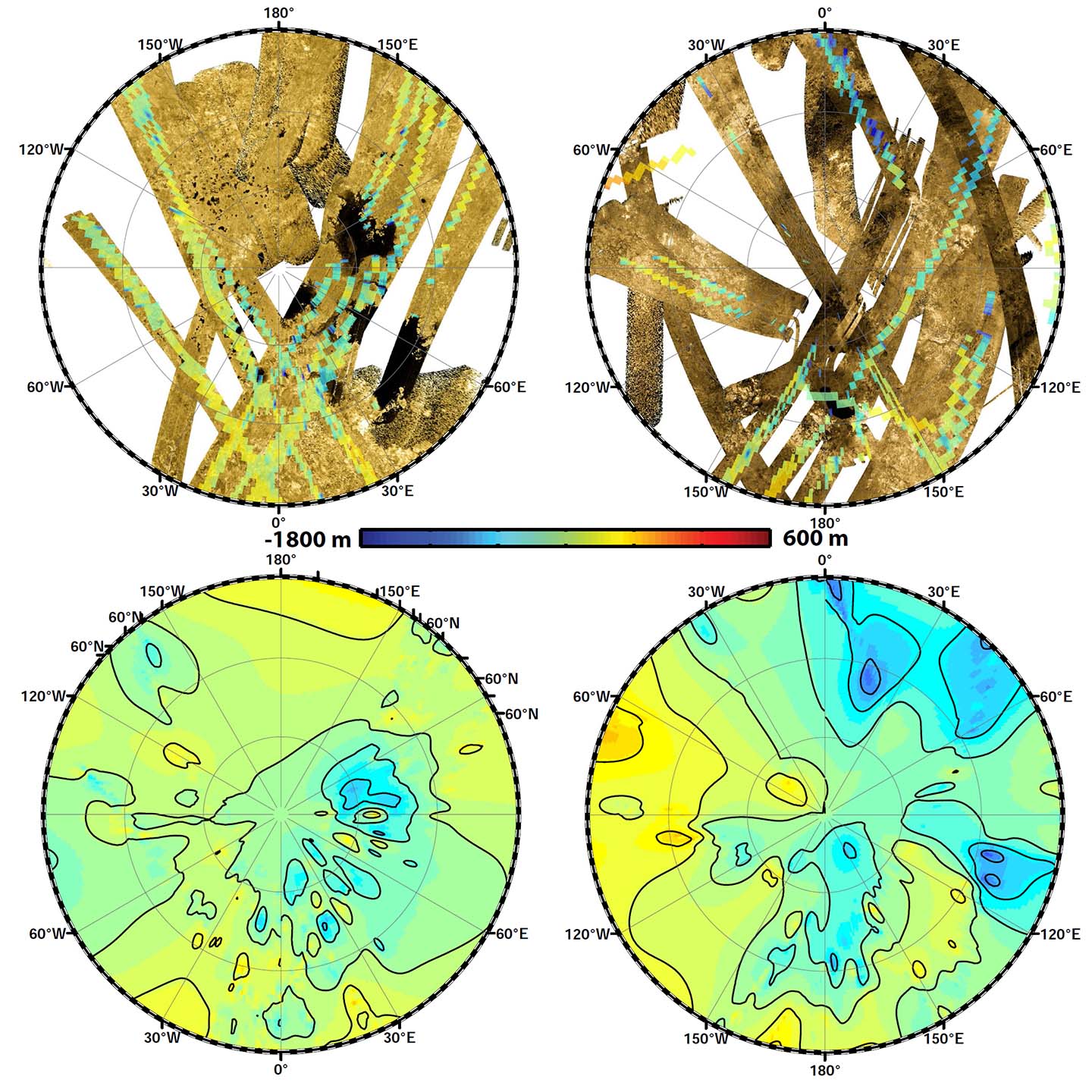
Scientists Shape First Global Topographic Map of Saturn’s Moon Titan May 15, 2013
Scientists create the first global topographic map of Saturn’s moon Titan, giving researchers a valuable tool for learning more about one of the most Earth-like and interesting worlds in the solar system. APL’s Ralph Lorenz leads the map-design team.
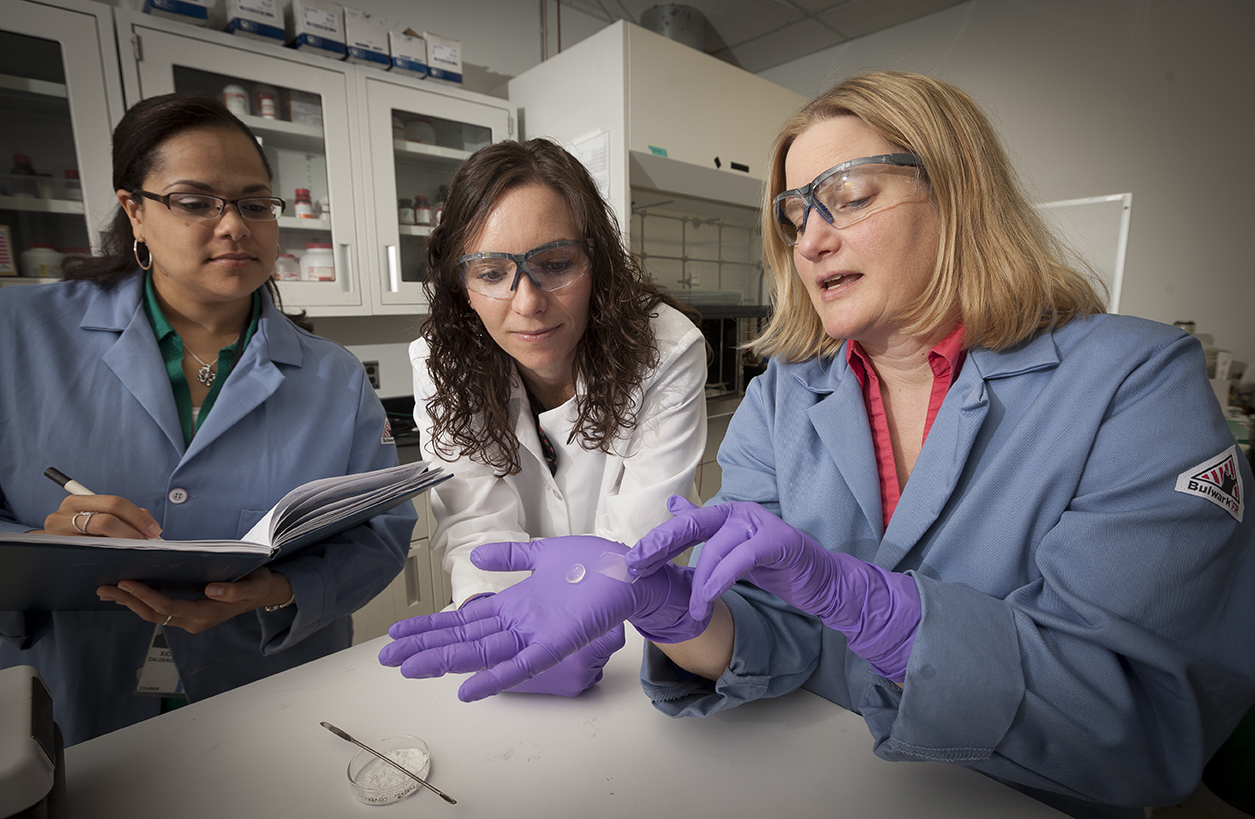
New Breakthroughs in Treating Soldiers’ Eye Injuries June 1, 2013
APL scientists team up with the Johns Hopkins University School of Medicine and the Wilmer Eye Institute as part of the Eye PATCH (Protection and Treatment for Combat Healing) project, creating three materials that help repair soldiers’ eye injuries. The project is sponsored by the U.S. Army Medical Research and Materiel Command. From left, the Lab’s Xiomara Calderon-Colon, Morgan Trexler, and Marcia Patchan fine-tune the cellulose bandage their team developed to protect soldiers’ injured eyes on the battlefield.
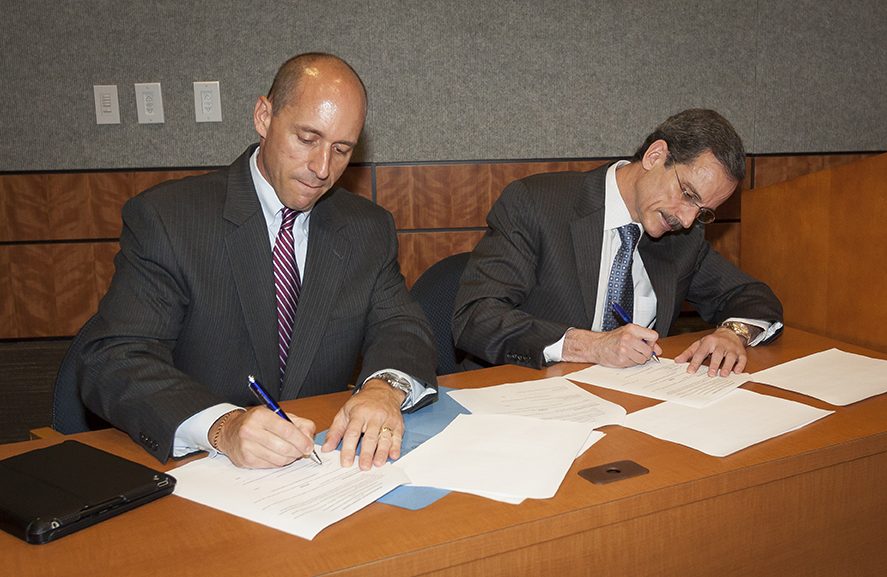
APL and HCEDA Form Technology Transfer Partnership August 22, 2013
APL and the Howard County Economic Development Authority (HCEDA) establish a technology transfer partnership to bring APL innovation to the marketplace. The partners seek to create new companies and accelerate commercialization of targeted technologies, many developed at APL for government use.
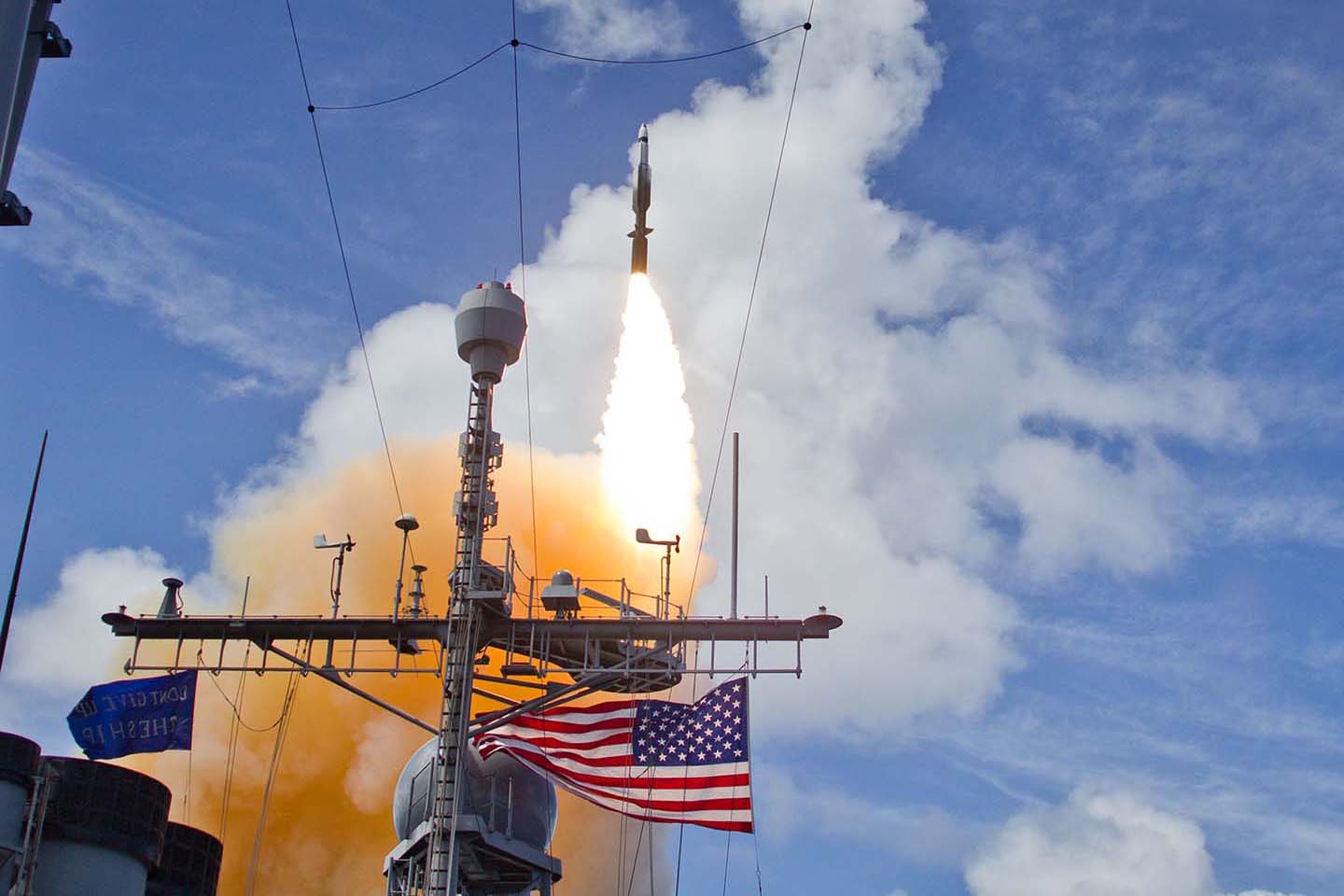
Sophisticated Naval Ballistic Missile Defense Test September 20, 2013
The APL team leads system-level performance analysis and evaluation for Flight Test – Standard Missile-21 (FTM-21). This operational test demonstrates the ability to fire a salvo of two SM-3 missiles to successfully engage an incoming ballistic missile target.
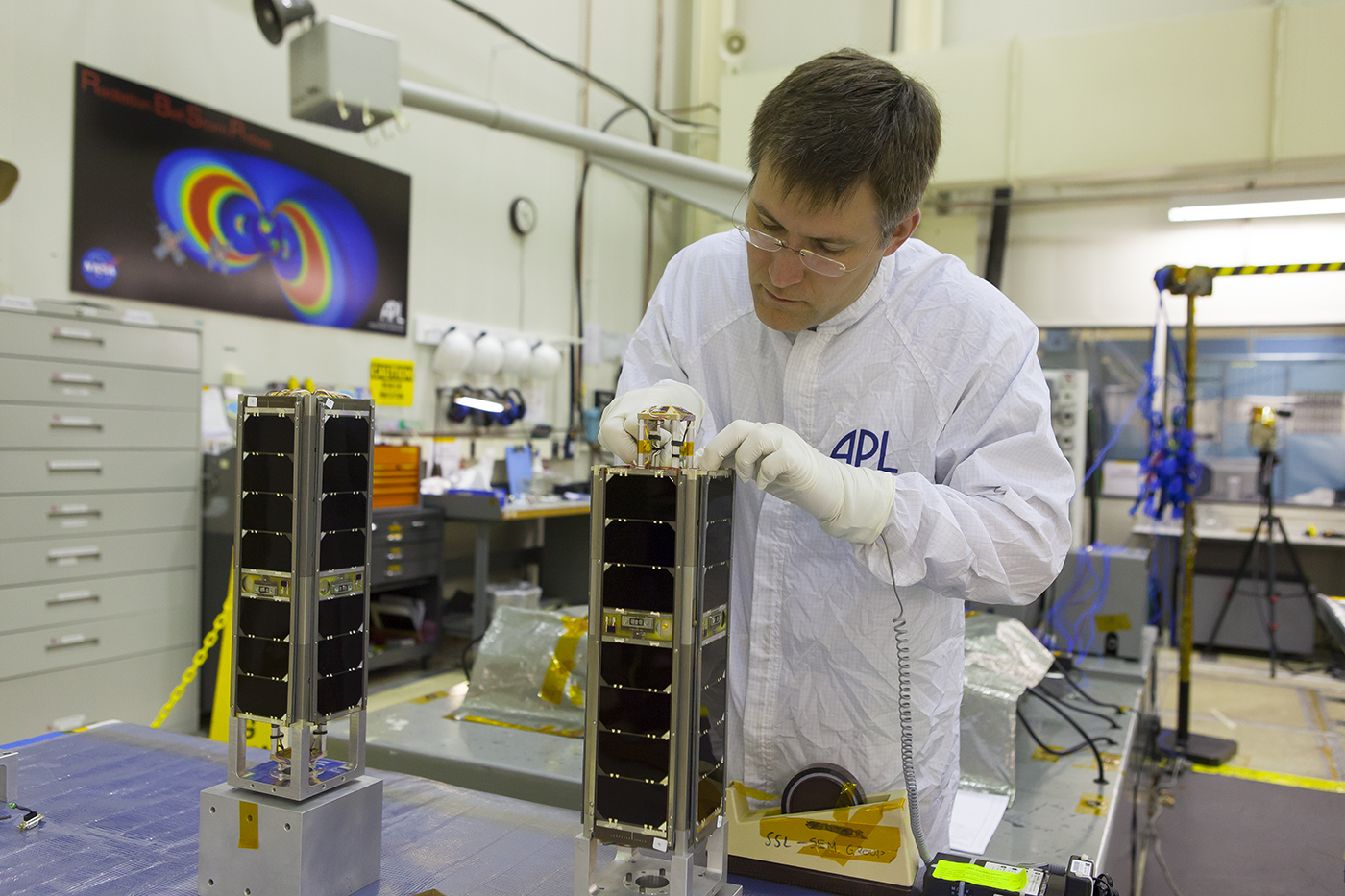
New Generation of Small Satellites Launches November 19, 2013
APL introduces a new generation of small satellites with the launch of two experimental “CubeSats” designed for a range of national security and space science operations.

Creation and Assessment of LRASM 2014
The Defense Advanced Research Projects Agency (DARPA) asks APL to assemble and lead an independent government team that would provide independent technical assessments of a Long Range Anti-Ship Missile (LRASM), identified as an urgent need. LRASM is expected to be operational by 2018.
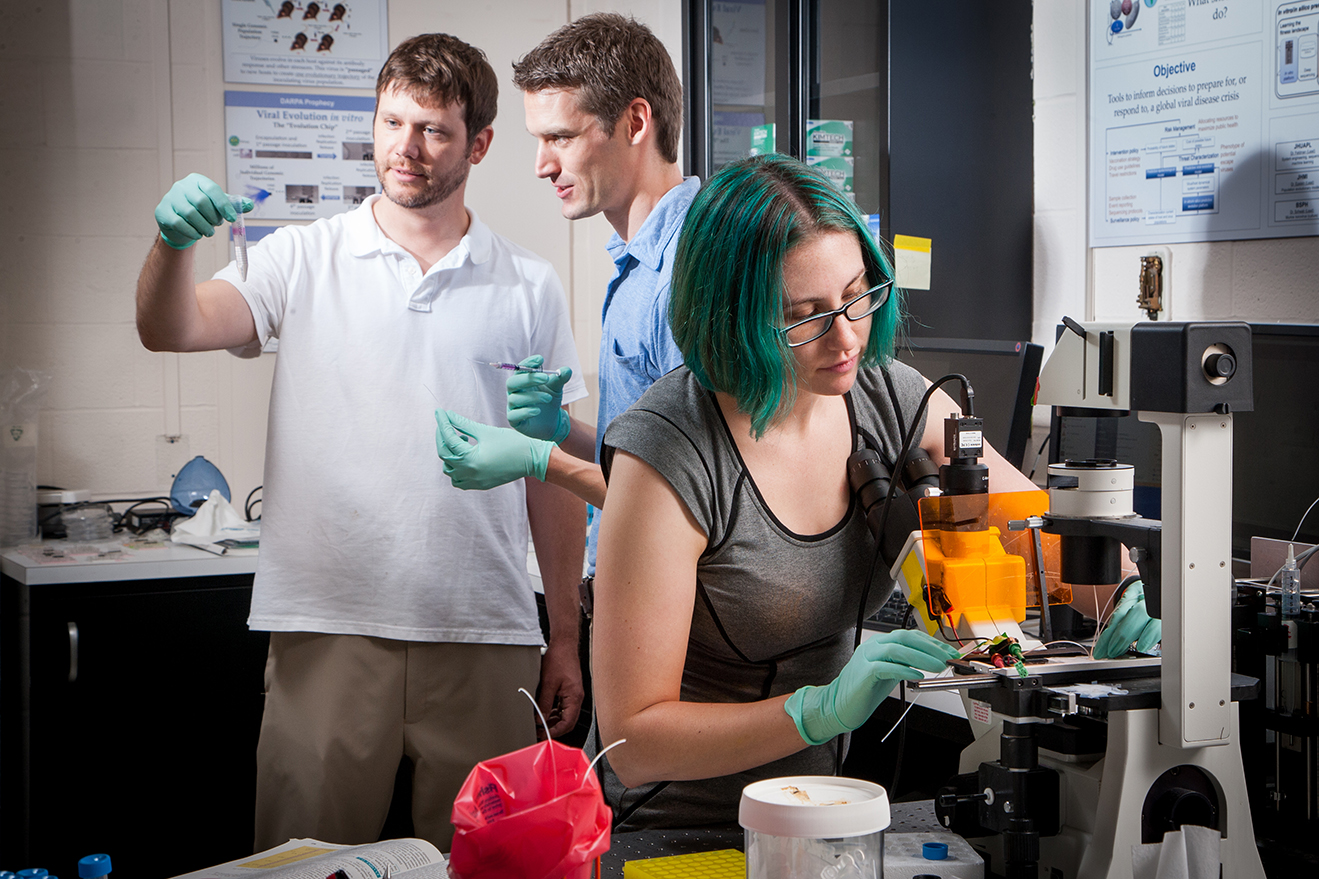
Forecasting Pandemics: The oRACLE Chip June 2014
Scientists at APL develop a device that allows researchers to drastically reduce the time it takes to mimic the natural evolution of a virus in the lab. The tool—a droplet-based Rapid Acceleration of Laboratory Evolution (oRACLE) Chip—can potentially improve the nation’s ability to interdict emerging diseases.
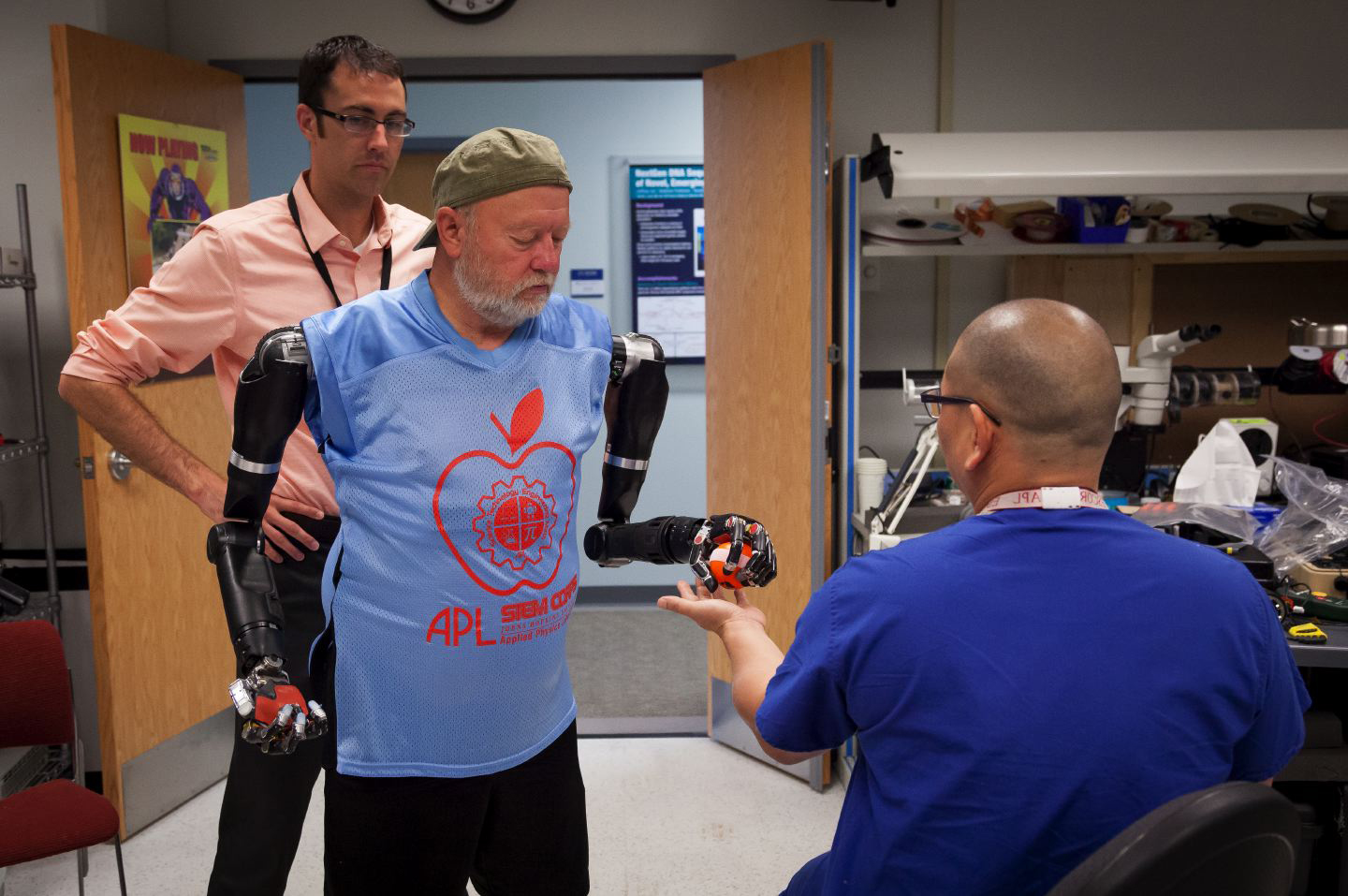
First Bilateral Full-Arm Amputee Simultaneously Controls Two MPLs June 2014
Les Baugh, a Colorado man, makes history at the Lab when he becomes the first bilateral shoulder-level amputee to wear and simultaneously control two of the Laboratory’s Modular Prosthetic Limbs. Most importantly, Baugh, who lost both arms in an electrical accident 40 years ago, is able to operate the system by simply thinking about moving his limbs, performing a variety of tasks during a short training period.

APL Researchers Find “Space Bubbles” May Have Aided Enemy in Fatal Afghan Battle September 23, 2014
Michael Kelly of APL happens to read a journalistic account of Operation Anaconda, one of the first major battles of the war in Afghanistan, and thinks radio operators may have been thwarted by a little-known source of radio interference: plasma bubbles. Kelly and his colleagues provide evidence that plasma bubbles may have contributed to the communications outages during the battle of Takur Ghar and present a new computer model that could help predict the impact of such bubbles on future military operations. Their work is accepted for publication in a journal of the American Geophysical Union called Space Weather.

BOPPS Soars for Planetary Science September 25, 2014
The Balloon Observation Platform for Planetary Science (BOPPS) experiences a picture-perfect launch just before 10:30 a.m. EDT on Thursday, September 25. A number of targets were observed by the telescope and the two other main instruments on board, including the first images of a comet (C/2013, Comet Siding Spring) made from a balloon.
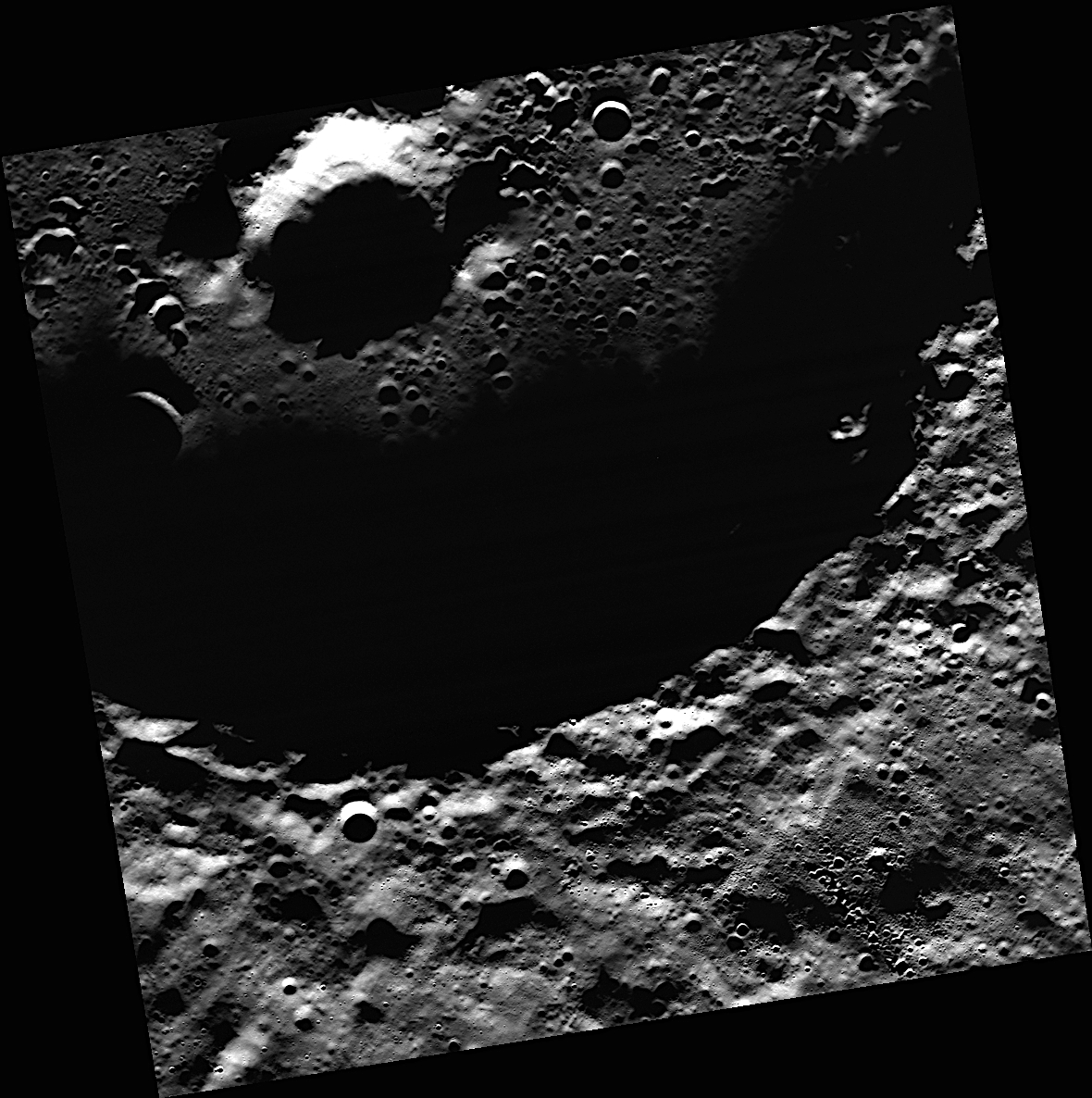
MESSENGER Provides First Optical Images of Ice on Mercury October 2014
NASA’s MErcury Surface, Space ENvironment, GEochemistry, and Ranging (MESSENGER) spacecraft provides the first optical images of ice and other frozen volatile materials within permanently shadowed craters near Mercury’s north pole.
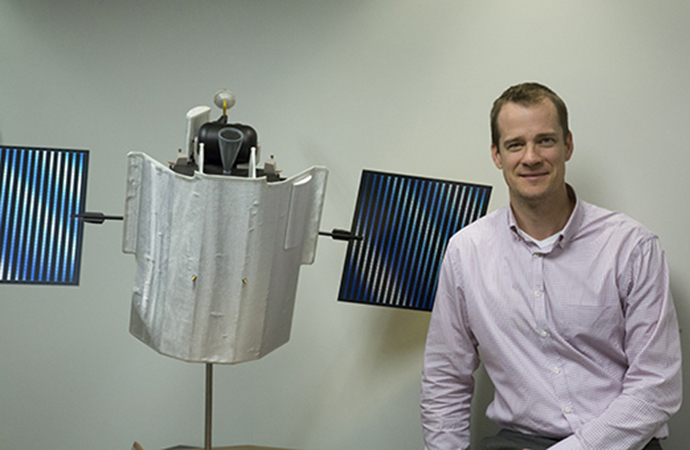
APL Engineer Named First Recipient of New Heinlein Award October 7, 2014
Daniel O’Shaughnessy, engineer at the Lab, is named the first recipient of the Heinlein Award for his development of a spacecraft navigational technique that makes use of solar radiation pressure to control a spacecraft. The Robert A. and Virginia Heinlein Prize Trust, a nonprofit foundation promoting the commercial uses of space, created the Heinlein Award to recognize space-tested technologies that can benefit commercial space activities.

NASA Gives Green Light for APL to Begin Building Solar Probe Plus Spacecraft April 8, 2015
NASA’s Solar Probe Plus mission—which will fly closer to the Sun than any spacecraft has before—reaches a major milestone when it successfully completes its Critical Design Review (CDR). An independent NASA review board met at the Lab from March 16 to 20 to review all aspects of the mission plan; APL has designed and will build and operate the spacecraft for NASA. The CDR certifies that the Solar Probe Plus mission design is at an advanced stage and that fabrication, assembly, integration, and testing of the many elements of the mission may proceed.

New Horizons Completes Reconnaissance of the Pluto System July 2015
Following the confirmation that the New Horizons spacecraft successfully completed humankind’s initial reconnaissance of the Pluto system in July 2015, Director Ralph Semmel praises the Mission Operations Team during a NASA news conference.

New Horizons Phones Home July 14, 2015
NASA’s New Horizons spacecraft phones home just before 9 p.m. EDT to tell the mission team and the world it has accomplished the historic first-ever flyby of Pluto.
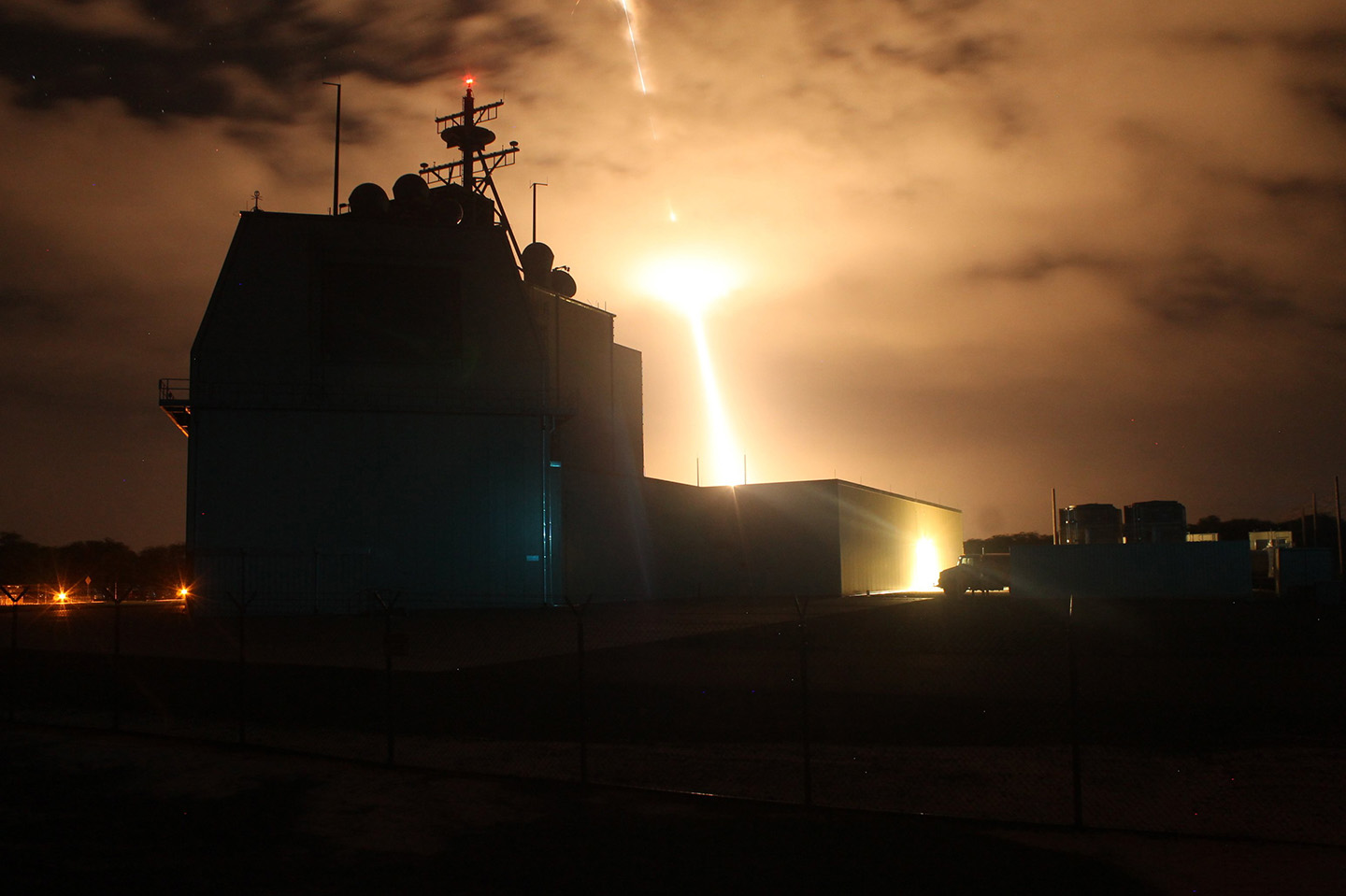
First Aegis Ashore Intercept Flight Test December 9, 2015
Engineers and researchers from APL play a key role in the first Aegis Ashore intercept flight test on December 9, 2015. During the first-of-its-kind test, conducted at the Aegis Ashore Missile Defense Test Complex at the Pacific Missile Range Facility, Kauai, Hawaii, a Standard Missile-3 Block IB Threat Upgrade guided missile successfully intercepts an air-launched medium-range ballistic missile target.
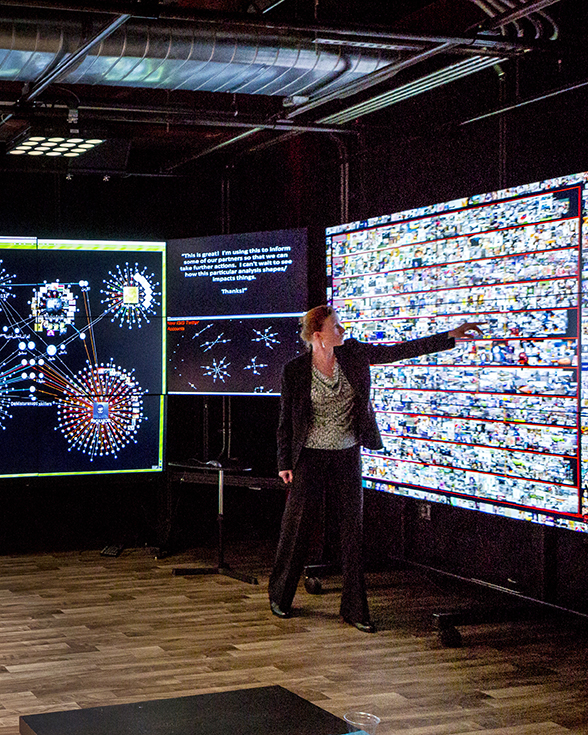
LIVE Lab: Improving Cybersecurity 2016
LIVE Lab allows cyber experts to detect and monitor intrusion attempts on APL’s network in real time. To assess new cyber-defense techniques for the government, APL uses LIVE Lab to mirror its real-time network as a testing ground.
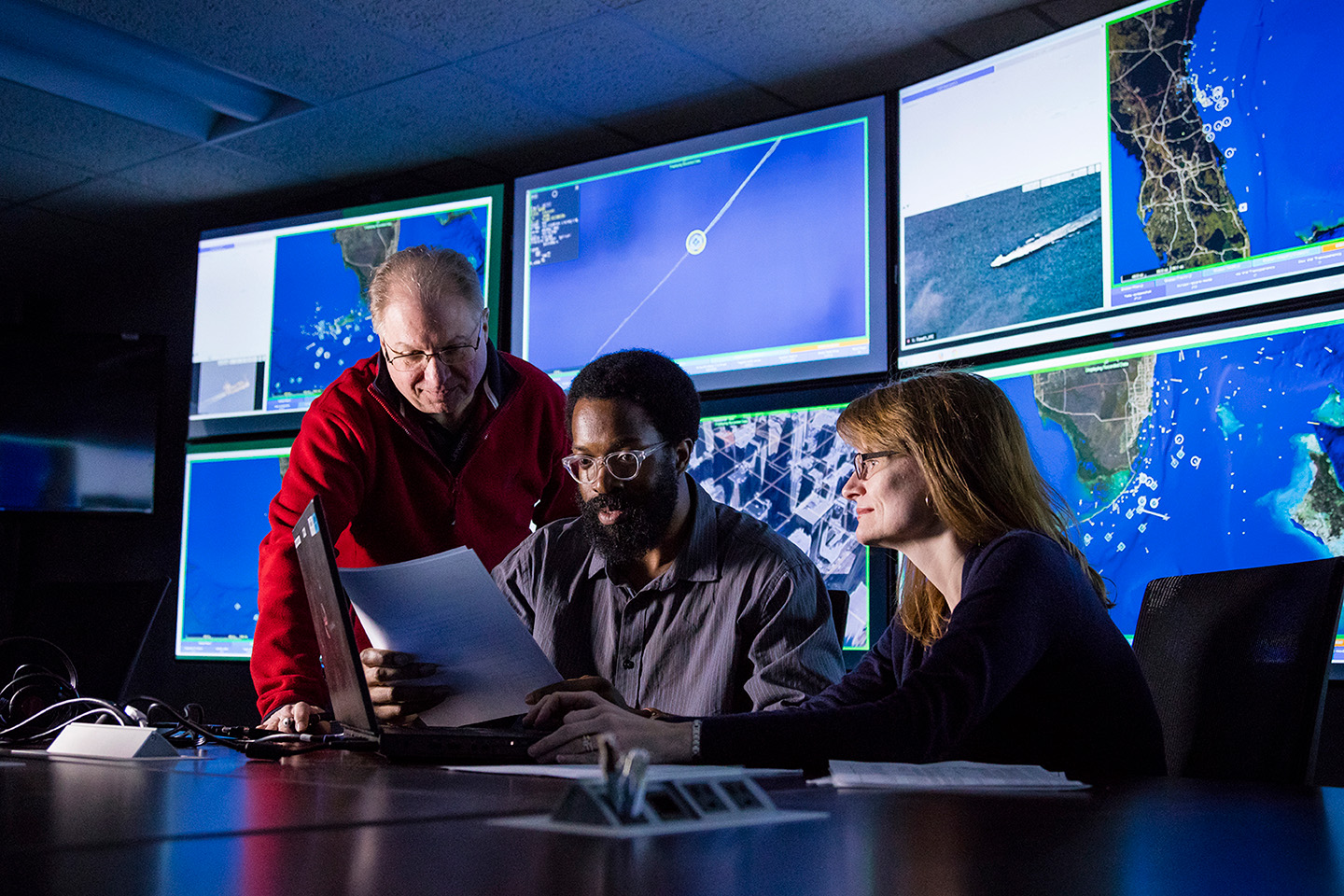
Minotaur: Remote Surveillance 2016
The Minotaur Mission Management System, developed by APL, integrates and displays data and information from multiple airborne surveillance platforms to provide real-time situational awareness and tracking of surface contacts at sea or on land.
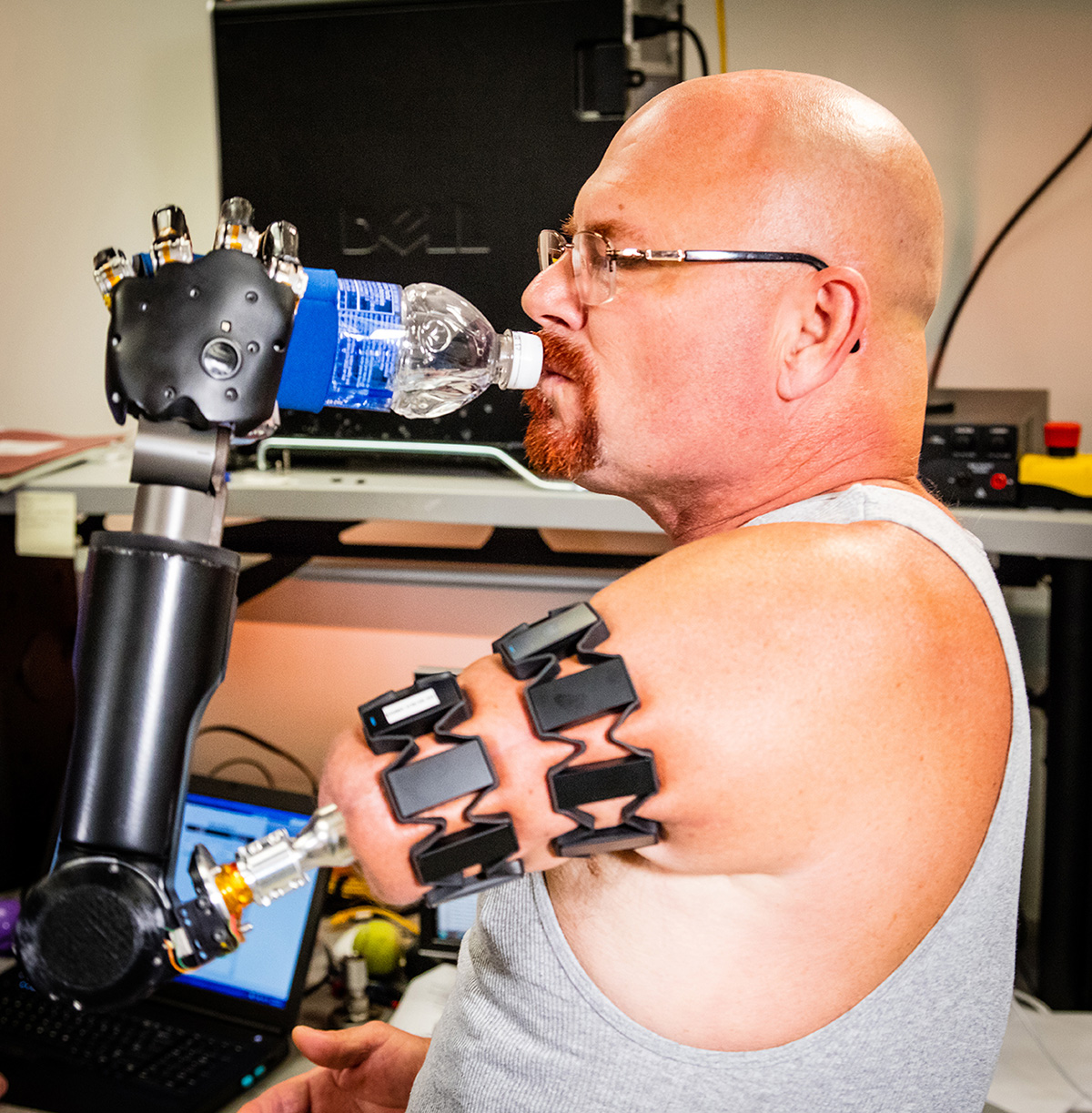
APL’s Modular Prosthetic Limb Reaches New Levels of Operability January 12, 2016
A pioneering surgical technique allows an amputee to attach the Modular Prosthetic Limb directly to his residual limb, enabling a greater range of motion and comfort than previously possible. This is a first for the field of prosthetics.
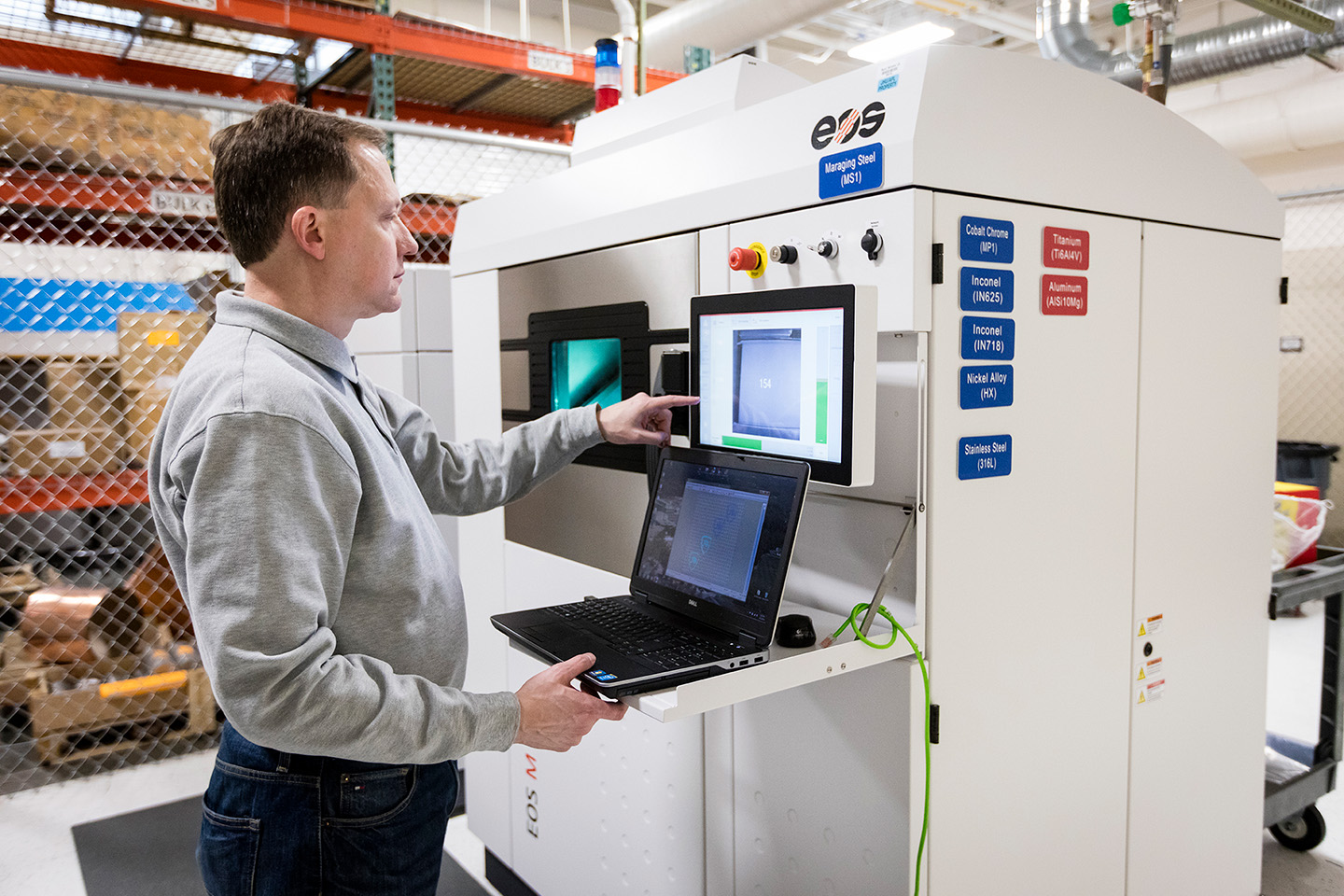
Lab Establishes Additive Manufacturing Center of Excellence February 24, 2016
Building on its substantial advanced mechanical fabrication capabilities, the Lab establishes a center of excellence to guide major advances in additive manufacturing, commonly known as 3D printing.
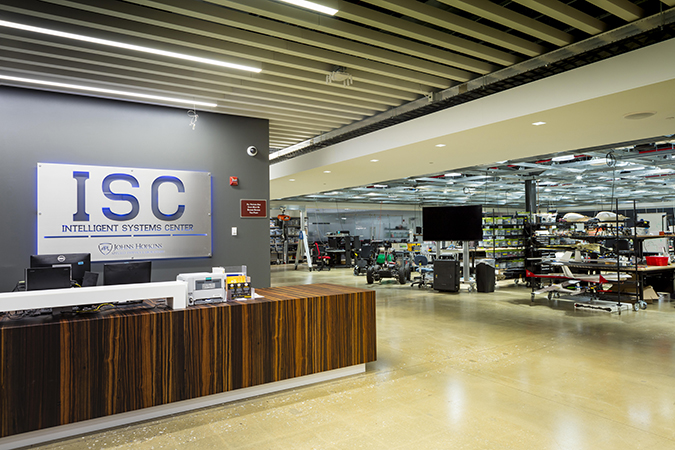
Opening of Intelligent Systems Center March 2016
The Intelligent Systems Center (ISC) is a focal point for research and development in intelligent systems at the Lab. APL leverages and extends advances in machine intelligence to enable systems like these to perform increasingly sophisticated tasks autonomously in challenging scenarios. As a center of excellence at APL, the ISC fosters new partnerships internally and externally to the Lab, provides a state-of-the-art facility with novel capabilities, and hosts key projects and technologies for the enterprise, including a software toolkit for autonomous vehicle collaboration and a deep learning “model zoo” of neural networks optimized for mission applications.
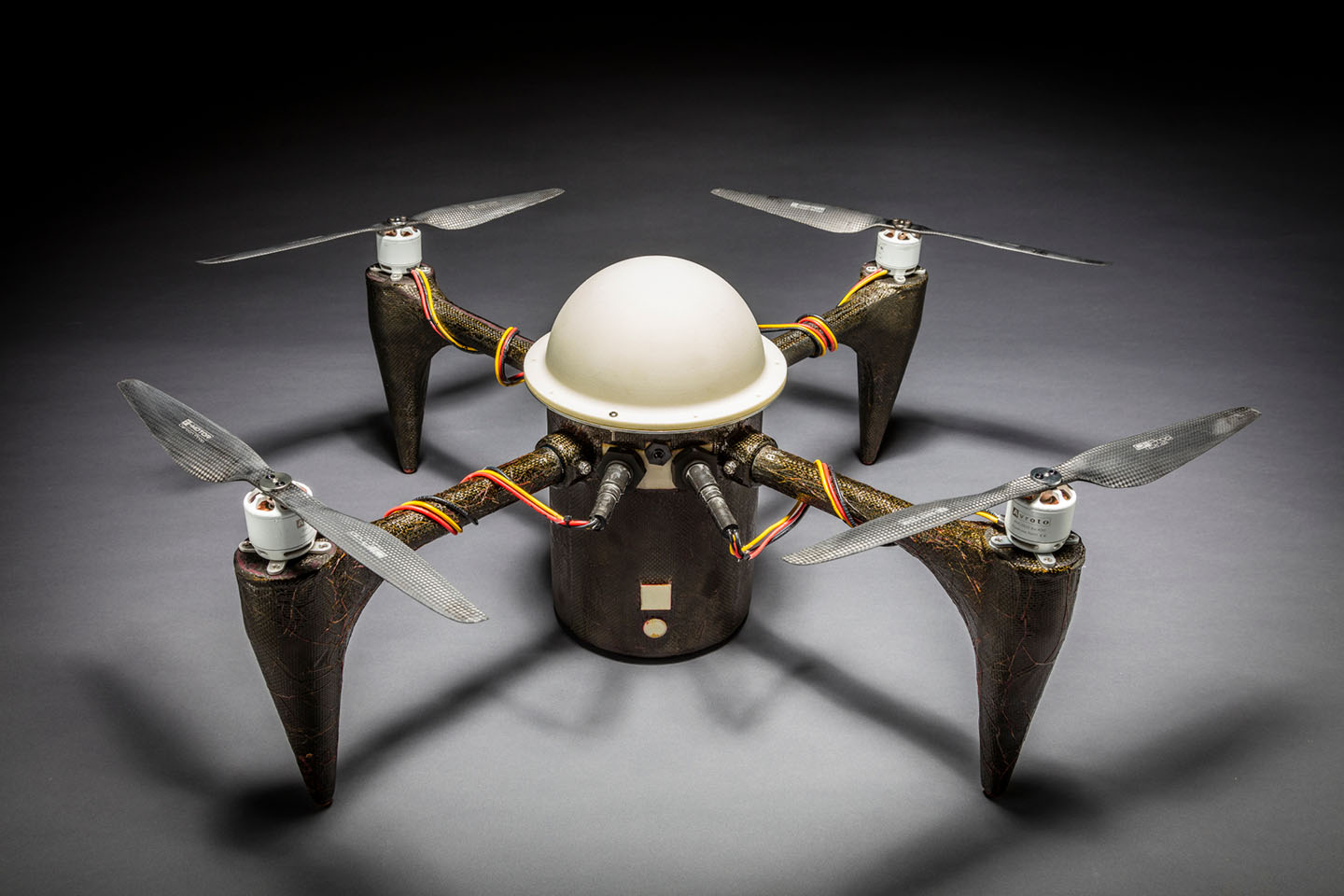
New UAV Can Launch from Underwater for Aerial Missions March 17, 2016
Researchers at the Lab develop an innovative unmanned aerial vehicle (UAV) that can stay on station beneath the water, then launch into the air to perform a variety of missions. The Corrosion Resistant Aerial Covert Unmanned Nautical System—or CRACUNS—is a submersible UAV that can be launched from a fixed position underwater, or from an unmanned underwater vehicle (UUV).
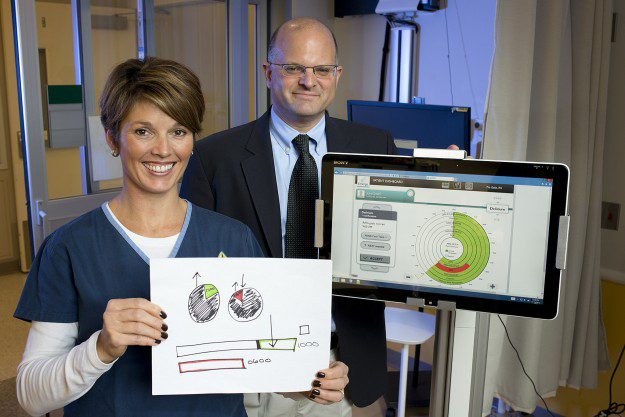
National Health Mission Area Collaboration October 2016
Alan Ravitz, chief engineer of APL’s National Health Mission Area, and Johns Hopkins Medicine ICU nurse Rhonda Wyskiel, show a clock she drew to illustrate her idea for a time that would indicate when a patient should receive a particular therapy. Her design is incorporated into the tablet-based Project Emerge system, shown in front of Ravitz.
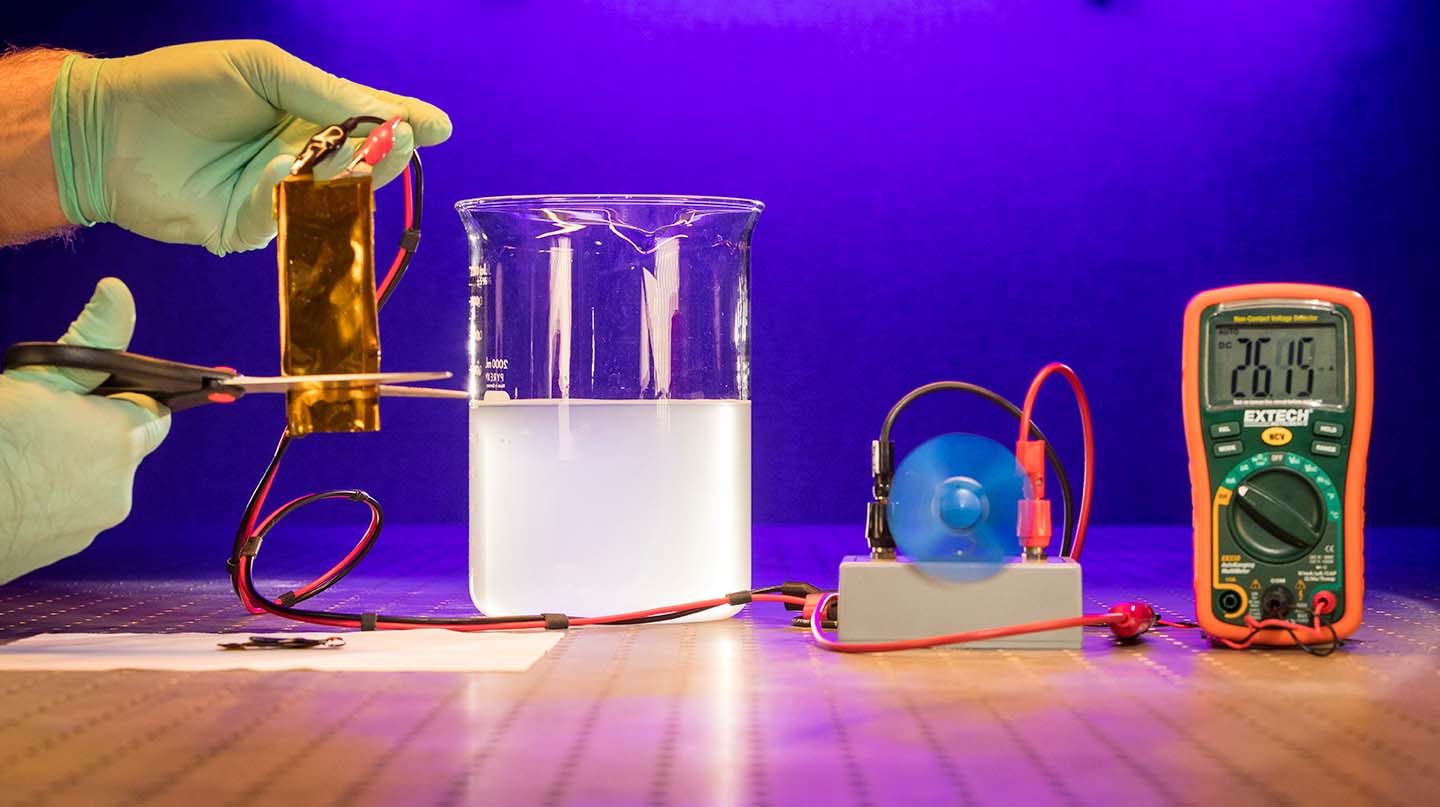
Breakthrough Battery Operates in Extreme Conditions November 2017
A team of APL scientists partners with researchers from the University of Maryland and the Army Research Laboratory to develop a new type of flexible lithium-ion battery that can operate under extreme conditions, including cutting, submersion, and ballistic impact.
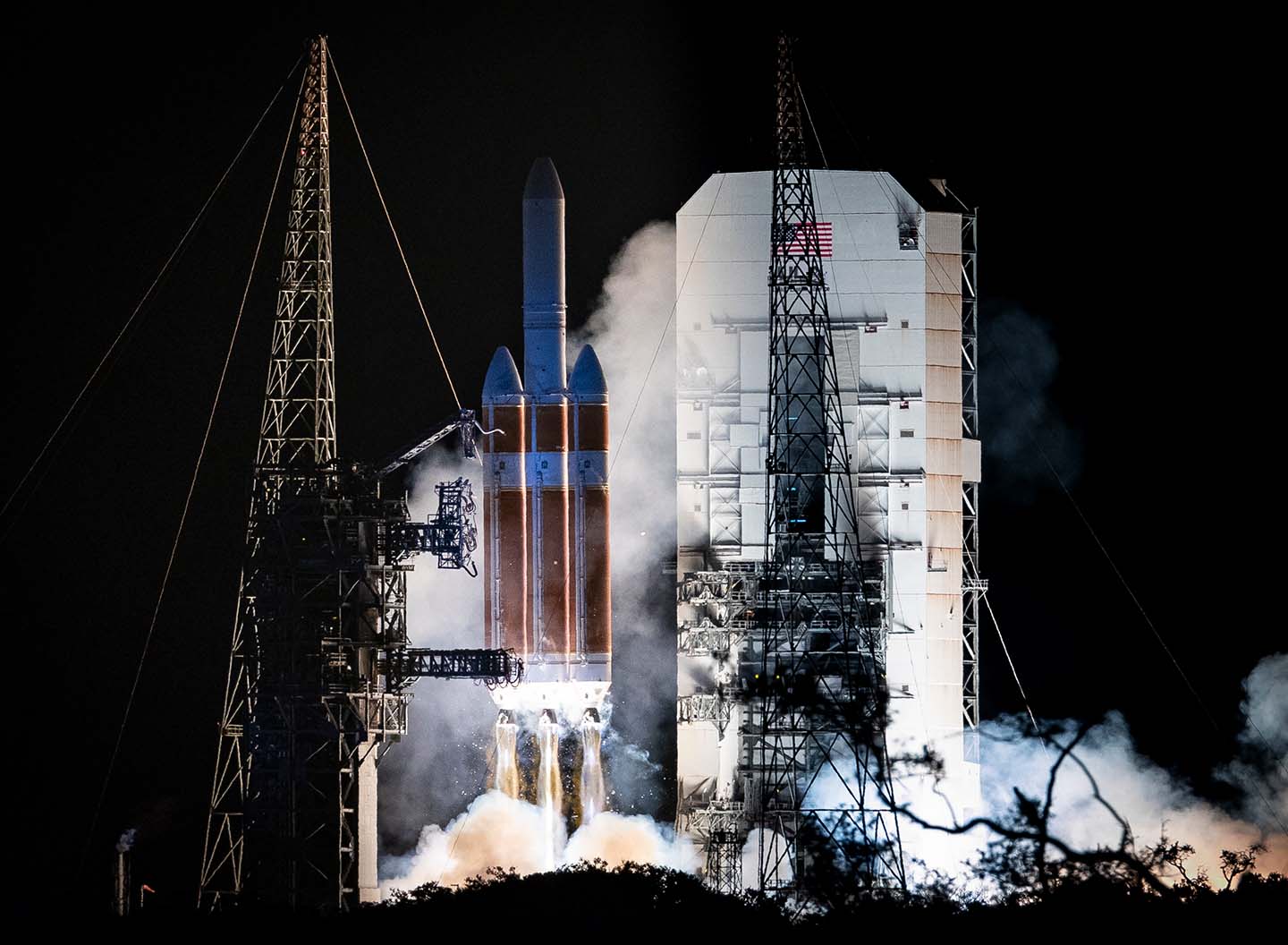
Parker Solar Probe Launches on Historic Journey to Touch the Sun August 12, 2018
Hours before the rise of the very star it will study, NASA’s Parker Solar Probe launches from Florida to begin its journey to the Sun, where it will undertake a landmark mission.
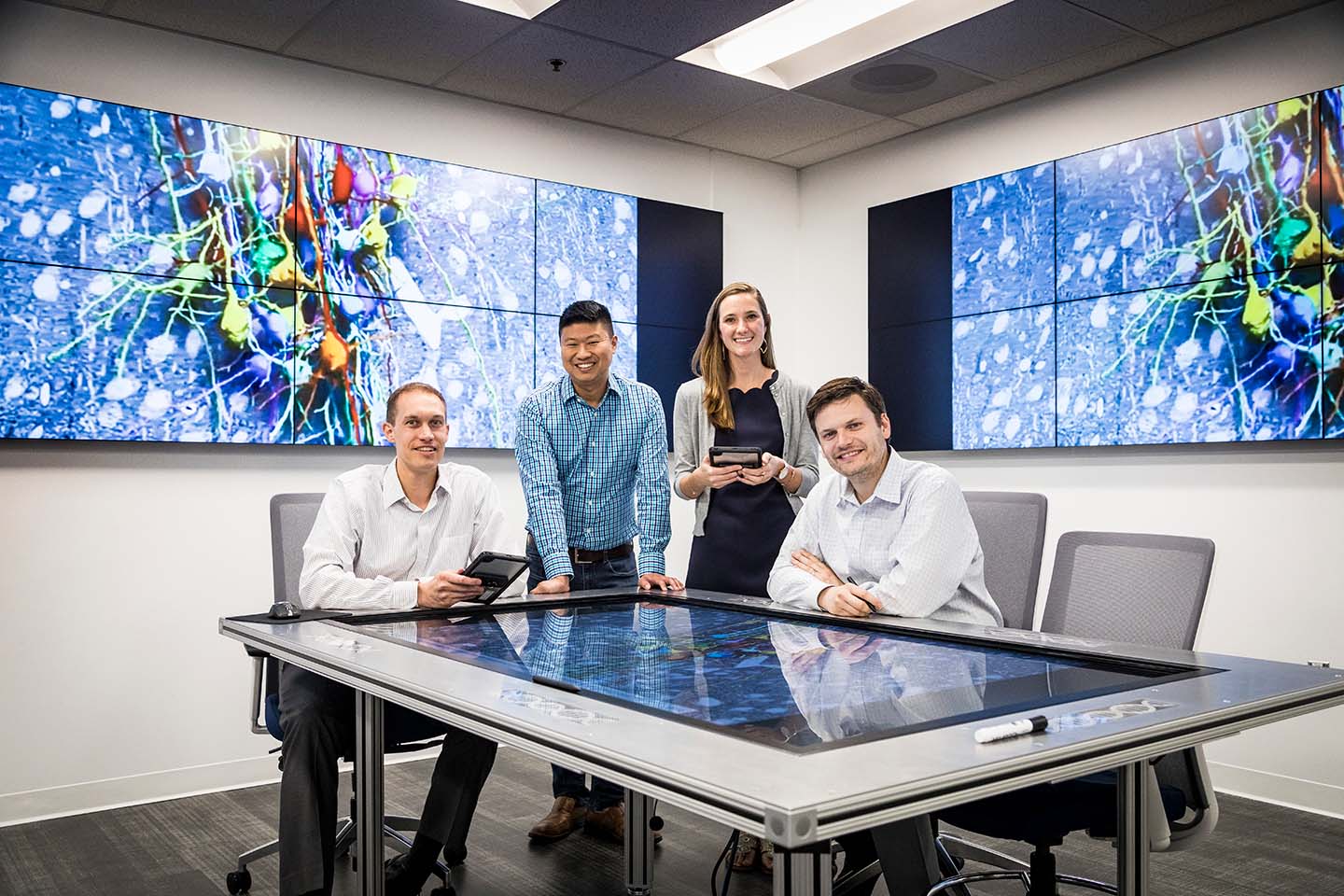
Hopkins Researchers Release Tool to Enable Better Health Care May 2019
APL and Johns Hopkins Medicine launch the Precision Medicine Analytics Platform (PMAP), a new tool that will facilitate big-data research across Johns Hopkins University and enable clinicians to make discoveries that improve patient care.

Destination Titan: NASA Selects APL to Lead Mission to Saturn’s Exotic Moon June 2019
It sounds like science fiction: fly a robotic rotorcraft over the dunes of an alien moon. But by awarding APL the Dragonfly mission to Titan, NASA gives the Lab a chance to turn this bold idea into space exploration reality.
APL Named to Technical Leadership Role for MDA’s Ground-based Midcourse Defense Program December 2019
APL begins its transition as the new leader of the technical direction agent (TDA) activity for the Missile Defense Agency’s Ground-based Midcourse Defense (GMD) program.
2020s

“We Had to Get This Right”: How APL Built the Coronavirus Tracking Dashboard → January 27, 2020
APL joins the Johns Hopkins University COVID dashboard effort. This is the story of how the most trusted, accurate source of information available on the pandemic came to be, and how it became the data source relied upon globally for near-real-time tracking of the biggest health crisis of the century.
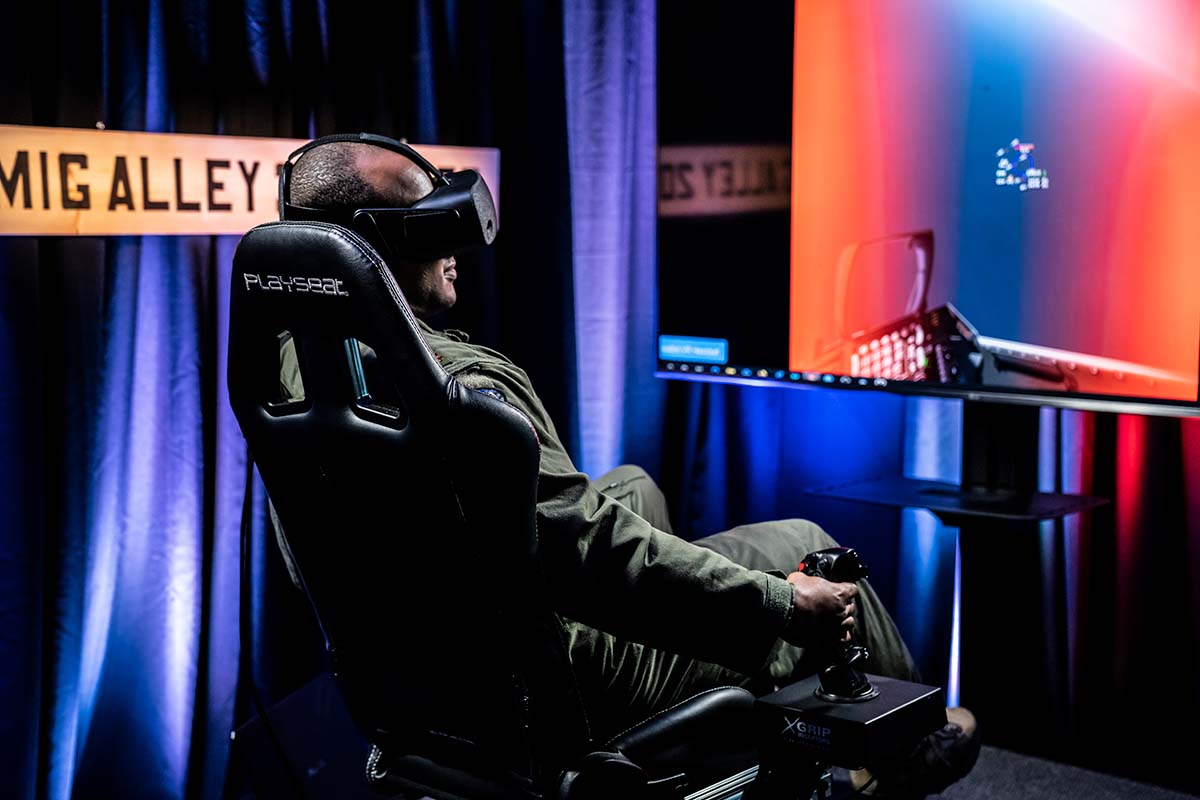
AI Bests Human Fighter Pilot in AlphaDogfight Trial → August 20, 2020
In a match-up of man versus machine, the decisive winner was Heron Systems’ artificial intelligence against an experienced human F-16 fighter pilot in a simulated aerial battle that capped DARPA’s AlphaDogfight Trials at APL.
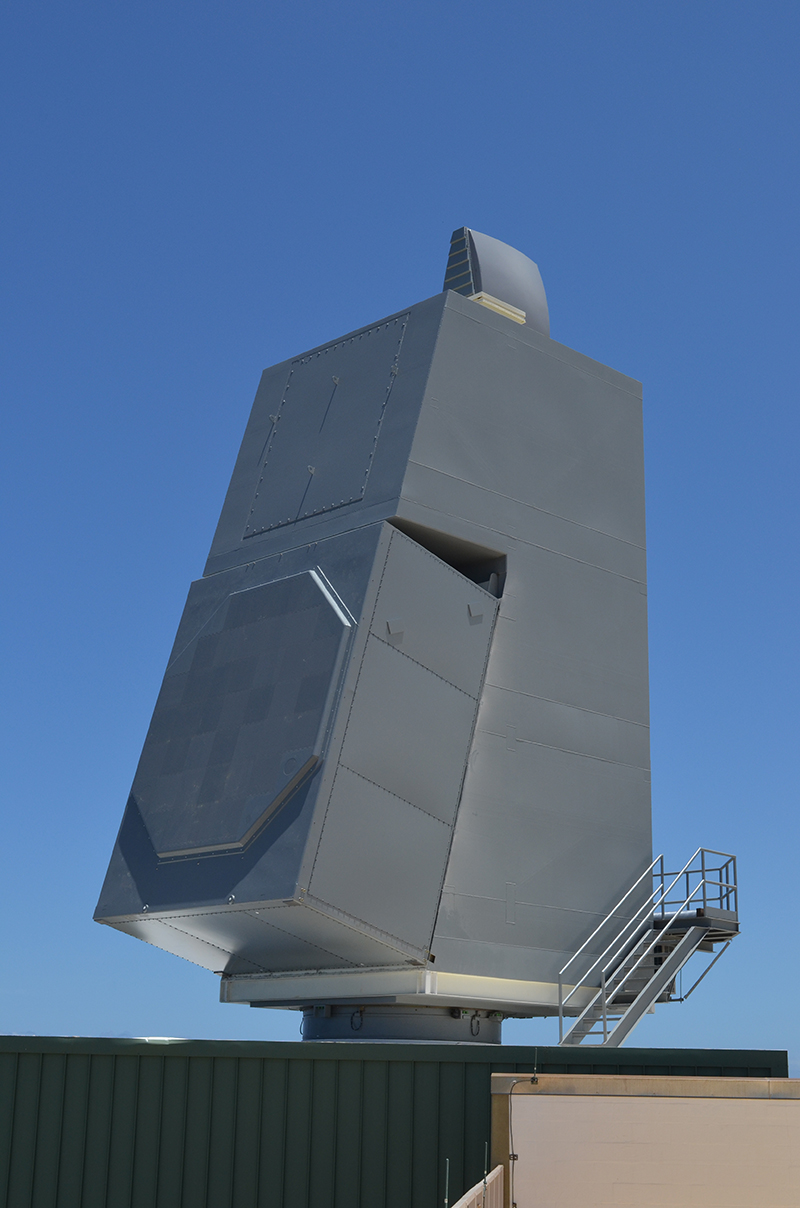
Lab Contributes to “Once in a Lifetime” Navy SPY-6 Radar System Upgrade → May 2021
The result of a collaborative effort including Raytheon and APL, the U.S. Navy receives delivery of the first Air and Missile Defense Radar (AMDR) AN/SPY-6 (SPY-6) array for installation on DDG-125, the latest destroyer in the Arleigh Burke class. The SPY-6(V)1, the first of four SPY-6 designs in development, is a four-face, electronically steered phased-array radar that supports multi-mission warfare operations. SPY-6 integrates into the existing ship, combat, and missile inventory systems, providing defense against ballistic and cruise missiles, anti-surface and anti-air threats, and electronic warfare.
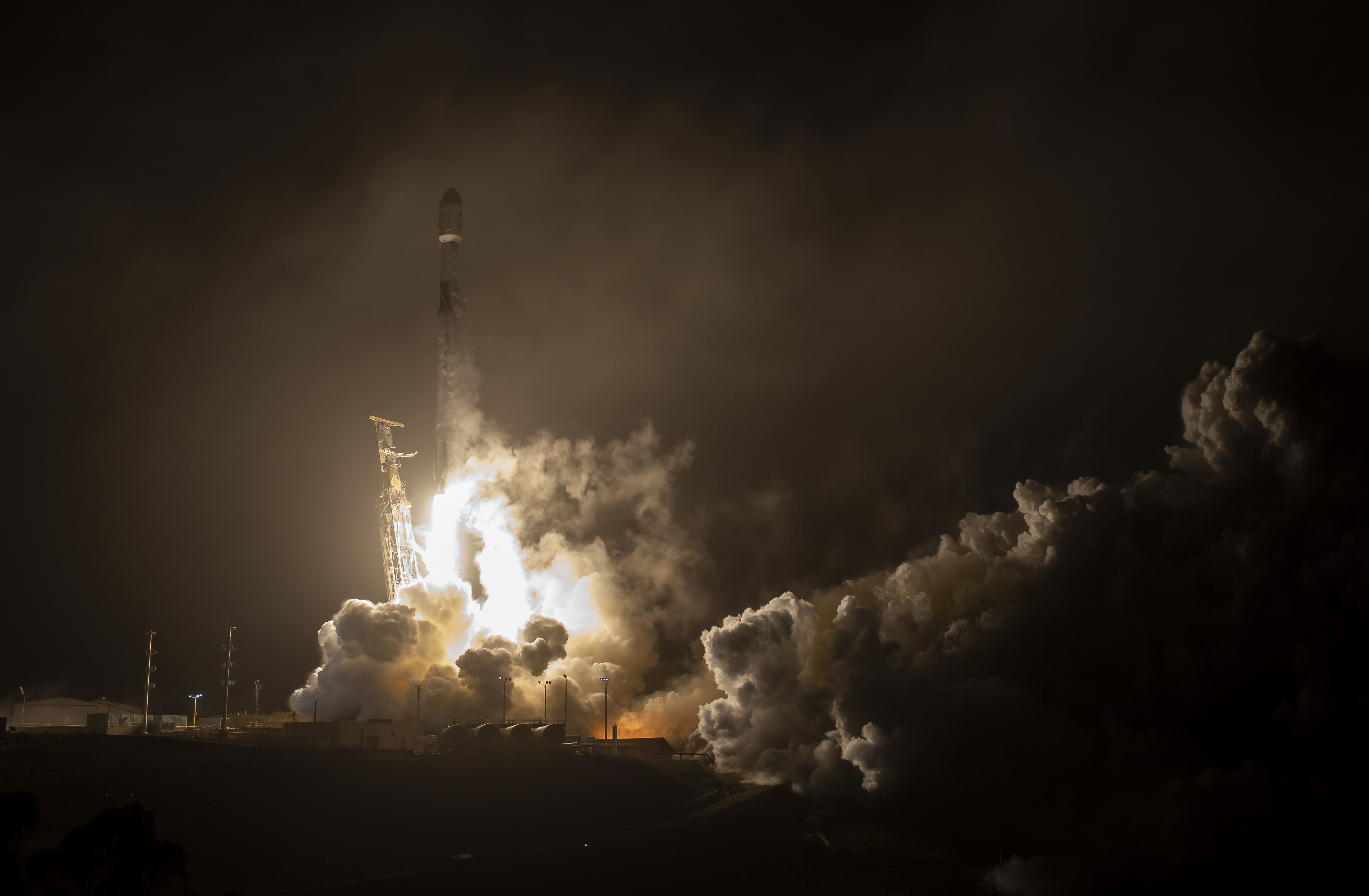
NASA’s DART Spacecraft Launches in World’s First Planetary Defense Test Mission → November 24, 2021
Lighting up the California coastline early in the morning, a SpaceX Falcon 9 rocket carries NASA’s Double Asteroid Redirection Test (DART) spacecraft off the planet to begin its one-way trip to crash into an asteroid. DART—a mission designed, developed, and managed by APL for NASA’s Planetary Defense Coordination Office—is the world’s first full-scale mission to test technology for defending the planet against potential asteroid or comet hazards. The spacecraft launches at 1:21 a.m. EST from Space Launch Complex 4 East at Vandenberg Space Force Base in California.